


















NOVEMBER 1, 2024
VOLUME 34 • NUMBER 2
1123 S. CHURCH ST. CHARLOTTE, N.C. 28203-4003 catholicnews@rcdoc.org
704-370-3333
PUBLISHER
The Most Reverend
Michael T. Martin, OFM Conv., Bishop of Charlotte
INDEX
Contact us 2A
Español 16-18A
Our Diocese 4-9A
Our Faith 3A
Our Schools 10A
Scripture 3A, 18A
Viewpoints 22-23A
World news 20-21A
July 24, 1990, the National Black Catholic Clergy Caucus of the United States designated November as Black Catholic History Month to celebrate the history and heritage of Black Catholics. November is significant because two important black saints are commemorated within the month: St. Martin de Porres’ feast day (Nov. 3) and St. Augustine’s birthday (Nov. 13). While Sister Thea Bowman may be the most well-known, there are a number of other black women in the Americas who are on the path toward sainthood. Here are a few of their stories:

EDITOR: Trish Stukbauer
704-370-3335, tmstukbauer@rcdoc.org
ADVERTISING MANAGER: Kevin Eagan 704-370-3332, keeagan@rcdoc.org
HISPANIC MEDIA MANAGER: César Hurtado 704-370-3375, rchurtado@rcdoc.org
MULTIMEDIA DESIGNER: David Puckett 704-808-4521, dwpuckett@rcdoc.org
EDITORIAL TEAM: Kimberly Bender 704-370-3394, kdbender@rcdoc.org Troy C. Hull 704-370-3288, tchull@rcdoc.org Christina Lee Knauss 704-370-0783, clknauss@rcdoc.org
COMMUNICATIONS ASSISTANT/CIRCULATION: Amelia Kudela 704-370-3333, catholicnews@rcdoc.org
COMMUNICATIONS DIRECTOR: Liz Chandler 704-370-3336, lchandler@rcdoc.org
ASSISTANT COMMUNICATIONS DIRECTOR: Patricia L. Guilfoyle 704-370-3334, plguilfoyle@rcdoc.org
THE CATHOLIC NEWS HERALD is published by the Roman Catholic Diocese of Charlotte 26 times a year.
NEWS: The Catholic News Herald welcomes your news and photos. Please e-mail information, attaching photos in JPG format with a recommended resolution of 150 dpi or higher, to catholicnews@rcdoc.org All submitted items become the property of the Catholic News Herald and are subject to reuse, in whole or in part, in print, electronic formats and archives.
ADVERTISING: Reach 165,000 Catholics across western North Carolina! For advertising rates and information, contact Advertising Manager Kevin Eagan at 704-370-3332 or keeagan@rcdoc.org. The Catholic News Herald reserves the right to reject or cancel advertising for any reason, and does not recommend or guarantee any product, service or benefit claimed by our advertisers.
SUBSCRIPTIONS: $17.25 per year for registered families of the Diocese of Charlotte and $25 per year for all others
POSTMASTER: Periodicals Class postage (USPC 007-393) paid at Charlotte, N.C. Send address corrections to the Catholic News Herald, 1123 S. Church St., Charlotte, N.C. 28203.
Henriette Delille was born in 1812 in New Orleans, Louisiana, as a free woman of color. When she was 24, she experienced a religious conversion and proclaimed: “I believe in God. I hope in God. I love. I want to live and die for God.” Henriette co-founded the Sisters of the Holy Family in 1842 – 20 years before the Civil War and before it was legal for this type of organization to exist. In 1847, the Society of the Holy Family was founded to support the sisters financially. The sisters responded to the need of treatment for the enslaved, elderly and sick, as well as care and education for the poor. Archbishop Philip M. Hannan began the canonization process for Henriette DeLille in 1988. Henriette was declared venerable (the first step toward sainthood) by Pope Benedict XVI in 2010.
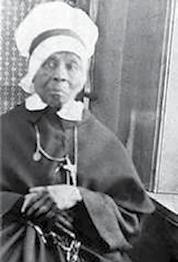
Elizabeth Lange was born around 1794 in Santiago de Cuba. An educated woman, she left Cuba for Baltimore in the early 1800s. Since there was no free public education for African American children in Maryland, she opened a school in her home. At the behest of the Archbishop of Baltimore, Lange was approached with the idea of founding a religious congregation for the education of African American girls. On
FOR CATHOLIC HEALTH PROFESSIONALS OF CHARLOTTE : A talk for healthcare workers, attorneys and spouses with Catholic attorney Nikolas Nikas on “The Crisis of Reason in Western Law and Its Impact on Medicine,” 6:30-8:30 p.m. Thursday, Nov. 7, at St. Patrick Cathedral Family Life Center, 1621 Dilworth Road East, Charlotte. RSVP to contact@ catholichealthcharlotte.org.
FOR CATHOLIC GRANDPARENTS : Learn what the Church teaches about angels and how to pass this faith on to your grandchildren. 10-11:30 a.m. Saturday, Nov. 9. Designed especially for Catholic grandparents, this talk will be given by Father Matthew Kauth, rector of St. Joseph College Seminary, 22 Arctus Ave., Mount Holly. Registration required by Nov. 7 to cgakac24@gmail.com.
VIGIL OF THE TWO HEARTS : First Fridays and Saturdays. Friday, Nov. 1, special 7 p.m. Mass for All Saints Day, 8 p.m.-8 a.m. nocturnal Adoration, 8 a.m. First Saturday Mass, followed by a Holy Hour of Reparation, St. Patrick Cathedral, 1621 Dilworth Road East, Charlotte.
IGBO MASS : 11:30 a.m. Sunday, Nov. 17, St. Mary’s Church, 812 Duke St., Greensboro. For details, contact Dr. Godfrey Uzochukwu, coordinator: 336-707-3625.
July 2, 1829, Lange and three other women professed their vows and became the Oblate Sisters of Providence – the first congregation of African American women religious in the history of the Catholic Church. Elizabeth, the foundress and first superior general, took the religious name Mary. The Vatican’s Congregation for the Doctrine for the Causes of Saints approved the cause of her sainthood in 2004, and Pope Francis declared her venerable in 2023.

Julia Greeley was born into slavery in Hannibal, Missouri, between 1833 and 1848. Freed by Missouri’s Emancipation Act in 1865, Julia earned her keep by serving families in Missouri, Colorado, Wyoming and New Mexico. Julia became Catholic at Sacred Heart Parish in Denver in 1880. She became an enthusiastic promoter of devotion to the Sacred Heart of Jesus. She visited every fire station in Denver monthly – on foot – and delivered Sacred Heart League literature to Catholics and non-Catholics alike. A daily communicant, Julia had a deep devotion to the Blessed Sacrament and the Blessed Virgin Mary. She joined the Secular Franciscan Order in 1901 and was active in it until her death in 1918. As part of the ongoing cause for her canonization, Julia’s mortal remains were transferred to Denver’s Cathedral Basilica of the Immaculate Conception on June 7, 2017.
— U.S. Conference of Catholic Bishops and the National Black Catholic Congress

NOV. 1
All Saints Day Mass
Archbishop Curley High School, Baltimore
NOV. 2 – NOON
All Souls’ Day Mass
St. Patrick Cathedral, Charlotte
NOV. 2 – 5 P.M.
Pastor Installation Mass
St. Dorothy Church, Lincolnton
NOV. 3 – 10 A.M.
Pastor Installation Mass
St. Francis of Assisi Church, Lenoir
will participate in the following events:
NOV. 4 – 7 P.M.
Confirmation
St. Vincent de Paul Church, Charlotte
NOV. 5 – 11 A.M.*
Presbyteral Council Meeting
Pastoral Center, Charlotte
NOV. 6 – 10 A.M.*
Pastoral Planning Meeting – St. Leo the Great Parish
Pastoral Center, Charlotte
NOV. 6 – 6 P.M.
Young Catholic Professionals Anniversary Dinner, Charlotte
NOV. 7 – 10 A.M.*

The Catholic Church must put more effort into ensuring that the sacrament of confirmation is not the “sacrament of goodbye” for young people, who receive it and then do not come to church again until they want to get married, Pope Francis said.
“The problem is how to ensure that the sacrament of confirmation is not reduced, in practice, to ‘last rites,’ that is the sacrament of ‘departure’ from the Church, but is rather the sacrament of the beginning of an active participation in its life,” he said Oct. 30 at his weekly general audience.
Continuing a series of audience talks about the Holy Spirit in the life of the Church, the pope said parishes need to identify laypeople “who have had a personal encounter with Christ and have had a true experience of the Spirit,” and ask them to lead the confirmation preparation classes.
But all Catholics must help as well by rekindling the “flame” of the Holy Spirit that they received at confirmation like the disciples received at Pentecost, he said. And the Holy Year 2025, which opens Dec. 24, is a good time to do that.
“Here is a good goal for the Jubilee Year: To remove the ashes of habit and disengagement, to become, like the torchbearers at the Olympics, bearers of the flame of the Spirit,” he said. “May the Spirit help us to take a few steps in this direction!”
“Confirmation is for all the faithful what Pentecost was for the entire Church,” the pope said, quoting the Italian bishops’ catechism for adults. “It strengthens the baptismal incorporation into Christ and the Church and the consecration to the prophetic, royal and priestly mission.”
In other words, he said, “Through the sacrament of confirmation, the Holy Spirit consecrates and strengthens us, making us active participants in the Church’s mission.”
Greeting a group of ethnic Croatian young people who had recently been confirmed in Germany, Pope Francis prayed that the Holy Spirit would “inflame your hearts and make you joyful witnesses for Christ.”
Urging everyone present in St. Peter’s Square to continue to pray for peace in Ukraine, Palestine, Israel and Myanmar, the pope said he had just read about 150 people being gunned down. He did not say where, but some assumed he was referring to a terrorist attack Oct. 6 in the village of Manni, Burkina Faso, while Vatican News reported he was referring to Israeli attacks on northern Gaza.
“What do children, families, have to do with war?” the pope asked. “They are the first victims. Let us pray for peace.”
CHARLOTTE — This Nov. 3-9 marks the annual celebration of National Vocations Awareness Week across the United States. The week is dedicated to promoting vocations of priests, deacons and consecrated men and women religious (nuns and brothers) through prayer and education. It’s also a time to renew our prayers and support for those who are considering one of these vocations, which is particularly important for families of young adults.
“The influence of parents and grandparents can be so crucial in encouraging young men and women to discern a vocation,” said Father Brian Becker, vocations promoter with the Diocese of Charlotte and first-year program director at St. Joseph College Seminary. “First and foremost, the constant prayers and sacrifices of parents bear so much fruit for their children.”
Father Becker notes that parents and grandparents should never underestimate the impact of their encouragement. “So many young men and women that I speak with cite their parent’s explicit encouragement of vocational discernment as a help to them in finding God’s will. Many parents think, ‘Well, my son knows that I would be very happy if he entered seminary.’ But in fact, many young men and women need to hear this said again and again from their parents, to overcome the fears that they have of following God in this path. Don’t be afraid to give your children some extra encouragement!”
Currently, the Diocese of Charlotte has 46 seminarians discerning a call to the priesthood.
National Vocations Awareness Week began in 1976 when the U.S. bishops designated the 28th Sunday of the liturgical year for special recognition of those discerning vocations. In 2014, it was moved to the first full week of November.
God our Father, we thank You for calling men and women to serve in Your Son’s Kingdom as priests, deacons and consecrated persons. Send Your Holy Spirit to help others to respond generously and courageously to Your call.
May our community of faith support vocations of sacrificial love in our youth and young adults. Through our Lord Jesus Christ, who lives and reigns with You in the unity of the Holy Spirit, God, forever and ever. Amen.
NOV. 3-9
Sunday (31st Sunday in Ordinary Time): Dt 6:2-6, Ps 18:2-3, 3-4, 47, 51, Heb 7:23-28, Mk 12:28b-34; Monday (St. Charles Borromeo, Bishop): Phil 2:1-4, Ps 131:1bcde, 2, 3, Lk 14:1214; Tuesday: Phil 2:5-11, Ps 22:26b-27, 28-30ab, 30e, 31-32, Lk 14:15-24; Wednesday: Phil 2:1218, Ps 27:1, 4, 13-14, Lk 14:25-33; Thursday: Phil 3:3-8a, Ps 105:2-3, 4-5, 6-7, Lk 15:1-10; Friday: Phil 3:17-4:1, Ps 122:1-2, 3-4ab, 4cd-5, Lk 16:1-8; Saturday (Dedication of the Lateran Basilica in Rome): Ez 47:1-2, 8-9, 12, Ps 46:2-3, 5-6, 8-9, 1 Cor 3:9c-11, 16-17, Jn 2:13-22

If you or someone you know is contemplating a vocation, talk with your pastor, reach out to the diocese’s vocations promoter, read up on consecrated life and the various religious communities that exist, and contact communities that interest you. Many offer “come and see” days or retreats that are opportunities to learn more and meet others who have accepted God’s call to religious life. For young men and women, there are summer discernment retreats offered by the Diocese of Charlotte and hosted at Belmont Abbey College: Quo Vadis Days for young men, and Duc in Altum for young women. Information about 2025 retreats is posted online at www.charlottediocese.org/ vocations
n Father Christopher Gober, vocations director: vocationsmail@rcdoc.org
n Father Brian Becker, vocations promoter: bjbecker@rcdoc.org
NOV. 10-16
Sunday (32nd Sunday in Ordinary Time): 1 Kgs 17:10-16, Ps 146:7, 8-9, 9-10, Heb 9:2428, Mk 12:38-44 or 12:41-44; Monday (St. Martin of Tours, Bishop): Ti 1:1-9, Ps 24:1b-2, 3-4ab, 5-6, Lk 17:1-6; Tuesday (St. Josaphat, Bishop and Martyr): Ti 2:1-8, 11-14, Ps 37:3-4, 18 and 23, 27 and 29, Lk 17:7-10; Wednesday (St. Frances Xavier Cabrini, Virgin): Ti 3:1-7, Ps 23:1b-3a, 3bc-4, 5, 6, Lk 17:11-19; Thursday: Phmn 7-20, Ps 146:7, 8-9a, 9bc-10, Lk 17:20-25 ; Friday: 2 Jn 4-9, Ps 119:1, 2, 10, 11, 17, 18, Lk 17:26-37 Saturday: 3 Jn 5-8, Ps 112:1-2, 3-4, 5-6, Lk 18:1-8
n www.foryourvocation.org: Set up by the U.S. Conference of Catholic Bishops, the site is dedicated to the promotion of vocations to the priesthood and consecrated life for both men and women. They are also on Facebook and YouTube. Find resources for parents and teachers, questions to ask yourself if you feel God is calling you, videos of vocation stories from priests and religious all over the U.S., and more.
If you are interested in serving as a permanent deacon in the Charlotte diocese, visit www.charlottediocese.org/vocations/ diaconate to learn more about who deacons are, what they do, and how to become one. Ready to take the next step? Contact Deacon William Schreiber, formation director, at cwschreiber@rcdoc.org.
— Catholic News Herald
NOV. 17-23
Sunday (33rd Sunday in Ordinary Time): Dn 12:1-3, Ps 16:5, 8, 9-10, 11, Heb 10:11-14, 18, Mk 13:24-32; Monday: Rv 1:1-4; 2:1-5, Ps 1:1-2, 3, 4 and 6, Lk 18:35-43; Tuesday: Rv 3:1-6, 14-22, Ps 15:2-3a, 3bc-4ab, 5, Lk 19:1-10; Wednesday: Rv 4:1-11, Ps 150:1b-2, 3-4, 5-6, Lk 19:11-28; Thursday (Presentation of the Blessed Virgin Mary): Rv 5:1-10, Ps 149:1b-2, 3-4, 5-6a and 9b, Lk 19:41-44; Friday (St. Cecilia, Virgin and Martyr): Rv 10:8-11, Ps 119:14, 24, 72, 103, 111, 131, Lk 19:45-48; Saturday: Rv 11:4-12, Ps 144:1, 2, 9-10, Lk 20:27-40
CHRISTINA LEE KNAUSS clknauss@rcdoc.org
CHARLOTTE — A new refrigerator. A roof repaired. Running water and electricity.
Those are just a few of the needs the Diocese of Charlotte has begun to help people address as it shifts its relief efforts toward rebuilding their lives after Tropical Storm Helene. The storm ravaged western North Carolina Sept. 27, triggering historic floods and mudslides that destroyed communities and killed at least 99 people, with more unaccounted for.
The workload is immense, so the diocese’s Catholic Charities social services agency has added three caseworkers to its existing team of four in the western region that covers Asheville, Lenoir and North Wilkesboro.
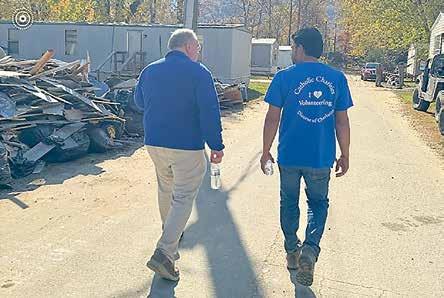
They are surveying stormdamaged areas in 37 of the diocese’s 46 counties, including in a 30-family trailer park in Transylvania County that was heavily damaged.
With 20 staff focusing some or all of their efforts on Helene relief, Catholic Charities has connected with nearly 400 people to provide assistance – with more expected to come.
“Most people don’t have the resources to replace all the things they lost,” said Gerry Carter, the agency’s executive director and CEO. “For instance, in some of these trailer parks, you see trailers that have been ripped down to the very walls. There are children playing outside trailers that are empty because everything they had is gone. This is a long-term process of recovery. For many of these families, every single thing they had is gone.”
Fueling Catholic Charities’ work is $6.3 million received in donations since the storm – including $1 million from Catholic Charities USA and contributions from donors in all 50 states and six other countries.
The agency plans to budget spending out over the next 24 months to help meet shortand long-term needs of those hit hardest by the storm. The new caseworkers – including three whose own homes were heavily damaged in the storm – are helping people apply for and troubleshoot access to FEMA and other government resources. They also are evaluating people’s needs for food and water, shelter, improved safety, employment, childcare, medical assistance and special personal needs.
“We want to provide the direct assistance to help people rebuild their lives,” said Jesse Boeckermann, Catholic Charities’ Western Region director, “whether that’s a new refrigerator, bed or couch that was destroyed, repairs to homes and cars that had trees fall on them, rental and utility assistance…and
transitional housing costs for people that can’t live in their home because of flood and storm damage.”
Caseworkers are going neighborhood by neighborhood in affected areas, as

well as receiving referrals from parishes, community groups and other organizations. Many people are requesting help through the agency’s website (www.ccdoc.org).
Catholic Charities is also partnering with health care providers who become aware of
human service needs of patients seeking medical care. The agency is also connecting people with other aid organizations and helping them file claims with FEMA and their insurance providers.
One family the agency is helping includes a father, a mother who is eight months pregnant, and their four children. The family lost everything, Carter said, when floodwaters rushed through their trailer, and they are currently sharing a single bedroom in a friend’s house.
The agency is trying to get their trailer repaired or find them new housing.
Progress is being measured in small steps. Power has been almost fully restored across the region. Internet and cell phone coverage are coming back little by little. Schools and businesses are reopening where possible. The water is flushable in many areas, but “boil water” advisories continue. While some of the most obvious storm damage has been cleaned up, infrastructure needs remain: Asheville’s water system and many roads and bridges need to be rebuilt.
“This won’t be disaster relief that lasts weeks and months,” Boeckermann said. “It will last for years as people rebuild their lives.”
While the agency is no longer focused on delivering emergency supplies as it was in the initial aftermath of the storm, it is still getting donated supplies and working to get them where they are most needed.
Carter said 10 to 12 bulk donations are planned and received each week, as well as several that are unannounced – with staff being notified of them while trucks are in transit.
“Staff members are doing a tremendous job redirecting some shipments and accepting others,” he said. “Our goal is to be the opposite of bureaucratic with lots of red tape – to make the process manageable while respecting the generosity of donors from across the country.”
Most important, Catholic Charities and diocesan leaders emphasize, is the need for financial donations to help families rebuild.
In the coming weeks and months, Carter said, Catholic Charities and the diocese will continue to accompany families in need –adding more caseworkers to help people navigate the long road of recovery.
“People will need to rebuild and recover,” said Boeckermann. “People died. People are still missing. People need to address the trauma of this storm in the months and years to come. In times of great need, it takes our whole diocese and community working together to bring hope and healing.”
There has been an outpouring of assistance from people in the diocese, across the country and around the world. As of presstime, Catholic Charities and the Diocese of Charlotte received more than $6.3 million in donations, including $1 million from Catholic Charities USA. Continued assistance is needed as the relief focus has shifted toward long-term recovery assistance, being led by Catholic Charities. Caseworkers are visiting 13 mountain parishes to identify and evaluate the needs of those most affected by the storm. They will help people apply for and troubleshoot access to FEMA and other government and charitable resources. They also will evaluate people’s needs for food and water, shelter, improved safety, employment, childcare, medical and special personal needs – and will link clients to the services they need. Here’s how you can help those in need, or get assistance if you live in the affected areas:
Donate money
Monetary donations are the fastest, most flexible and most effective way to support emergency relief efforts. Local responders on the ground can use the funds to help people with immediate as well as long-term needs. Give securely online: www.ccdoc.org/ helenerelief.
n Reach Catholic Charities via an online request form and/ or local contact information at www.ccdoc.org
n North Carolina 2-1-1: Use the state’s info hotline (call 211 and press 1, or go online to www.nc211.org) to find information about getting food, water and shelter; finding loved ones; checking current road conditions; filing damage and insurance claims; and other issues.
n FEMA assistance: Go to www.disasterassistance.gov, call 800-621-3362, or download and apply through the FEMA app.
Add your prayers
The diocese has an online prayer request form at www.charlottediocese.org/ form-prayer-request.
More online
At www.catholicnewsherald. com See more coverage of the impacts of Helene and recovery efforts underway.
CHARLOTTE — As the Diocese of Charlotte’s Helene response efforts shift to long-term rebuilding, parishes are answering Bishop Michael Martin’s call to continue helping western North Carolina parishes in need.
At presstime, 36 parishes/missions were being partnered with 22 parishes/missions in need of support for at least the next six months, in what Bishop Martin is calling a “sister parish” program in the wake of Tropical Storm Helene. Also offering help are St. Basil the Great Eastern Catholic Parish in Charlotte, Jesus the Divine Word Parish in Huntington, Maryland, and Holy Name of Jesus Cathedral in Raleigh. Even if their church buildings suffered only minor damage, western North
Carolina parishes will face continued “fallout,” Bishop Martin noted in an Oct. 10 email to the diocese’s 160 priests.
“While some of the immediate needs have been cared for, our longer-term walking with the people affected … remains an important ministry of our local Church,” the bishop said.
The key, he said, is for the diocese to band together to provide long-term material and spiritual support to the affected parishes and communities – accompanying them through the challenges of disaster recovery, “making a difference in that process in the months to come.”
In the program, partnered parishes will hold second collections to help offset lost
operating revenue in their sister parish, offer monthly Holy Hours to pray for their sister parish, and check in with the parish regularly about the need for pastoral, volunteer or other assistance.
The chancery is in the process of pairing up parishes based on resources and level of need. The hope, Bishop Martin said, is for multiple parishes to help each of the impacted communities.
Monsignor Patrick Winslow, who has piloted much of the diocese’s storm response, recently consulted with Church leaders in Louisiana who went through Hurricane Katrina. In a recent letter to priests, he shared sobering news that people’s emotional recovery from the storm will likely take a year. Survivors of
Katrina, the most catastrophic storm on record in the U.S., described three phases of recovery after the storm as “Respond, Reopen, Recover,” focusing first on immediate needs, then on short-term and long-term needs.
“As priests and deacons who have served in these regions, we have observed with shock and sadness the images that are now being shared,” said Monsignor Winslow, the diocese’s vicar general and chancellor who previously served mountain parishes in Tryon and Sparta. “There are a number of pastoral challenges that lie ahead … since the relief efforts will be going on for some time and the human toll will take even longer to address.”
— Catholic News Herald
HIGH POINT — Pennybyrn Retirement Community has led several impactful relief efforts in response to Tropical Storm Helene. These activities included a community-wide drive for food, water and essentials as well as support for two senior living communities in western North Carolina: Brooks-Howell in Asheville and Fleshers Fairview Health & Retirement Center in Fairview.
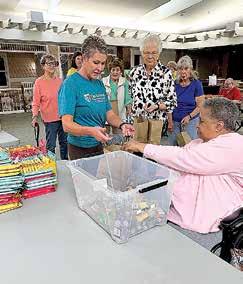
Pennybyrn’s residents and staff united to provide supplies, gift bags, laundry services and encouragement to those affected by the storm.
Immediately after the hurricane, the High Point retirement community and prayer center that was founded by the Sisters of the Poor Servants of the Mother of God launched a five-day drive. They collected water, food and other essentials from residents and staff that were delivered to western North Carolina during the first week after the storm.
Vonda Hollingsworth, vice president of Pennybyrn, learned of the immediate need for volunteers to help with laundry at Brooks-Howell, where skilled nursing residents needed clean linens and clothing. Hollingsworth organized a team of six Pennybyrn staff members to travel to Asheville and assist.
As the team prepared for the trip, they became aware of the difficult personal situations facing many of Brooks-Howell’s staff – some had lost homes, cars and loved ones – prompting Hollingsworth to expand the effort.


‘...as we learned more about the needs of their staff, our mission expanded.’
Vonda
Hollingsworth
Pennybyrn vice president
“We originally set out to assist with the laundry at Brooks-Howell, but as we learned more about the needs of their staff, our mission expanded,” she said. “How our healthcare residents, retirement living residents and staff came together to support this effort is truly heartwarming. Even those who couldn’t give financially found a way to help.”
On Oct. 14, the “Super Suds Squad” – comprised of Hollingsworth, Katie Lambeth, Shane Bunnell, Vanessa Blakeney, Sandra Loy and Francisco Sanchez – traveled to Asheville, where they worked through the night washing, drying and folding eight days’ worth of sheets, towels, and clothing for BrooksHowell’s skilled nursing residents.
Pennybyrn’s skilled nursing residents, with the assistance of staff and independent living residents, packed gift bags for Brooks-Howell’s 75 staff members. They assembled bags containing snacks, drinks, hand sanitizer, tissues, handwritten notes and $50 Walmart gift cards. Pennybyrn’s residents and staff raised $15,550 in two days – far exceeding the original stretch goal of $3,800.
This overwhelming response allowed Pennybyrn to support a second senior living community. On Oct. 21, care packages were delivered to the 100 Fleshers Fairview Health & Retirement Center staff members in Fairview, one of the hardest-hit communities.
Spiritual sponsorship of the community of more than 450 residents is transitioning from the sisters to the Diocese of Charlotte in 2025, when the sisters will return to London.
— Pennybyrn
CHRISTINA LEE KNAUSS clknauss@rcdoc.org
CHARLOTTE — Twenty-five years ago, Steve and Debbie Wise of Mooresville commemorated their wedding anniversary at a special Mass for married couples celebrated by the late Bishop William Curlin. On Oct. 27, they marked another milestone – 50 years together – by attending the Wedding Anniversary Mass celebrated by Bishop Michael Martin.
About 60 couples packed the pews at St. Patrick Cathedral for the event honoring couples who have been married for 25 years, 50 years or more. The event is sponsored by the Diocese of Charlotte’s Family Life Office. This was Bishop Martin’s first time celebrating the annual Mass – an occasion for couples to renew their commitment to God and each other as they receive blessings and a special message.
The bishop’s homily focused on the importance of marriage and the strong and moving witness of couples who have remained together for decades.
“Marriage strikes me as a tremendous act of faith, because on their wedding day, that couple isn’t just promising to love the person they are marrying that day, but to love the person they will become,” he said. “As each of you has grown and become who you’ve become, your spouse was called to love you because they said they would. That’s a great act of faith.”
He called married couples “the muscle of the human experience” and praised them for continuing to show love for each other even when it was difficult.
“Sometimes spouses sin, and we’ve got to
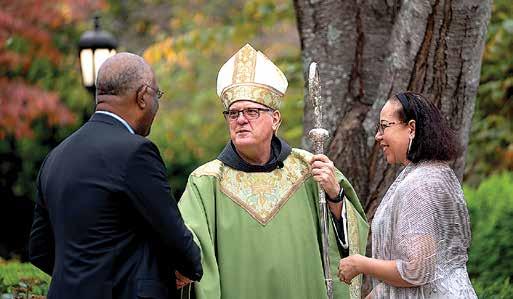
Michael Martin greets a
do double lifting when they do, especially when they’re not living up to their end,” he said. “That is the time when fidelity and constancy come in.”
Bishop Martin said couples who put Christ at the center of their marriage can do great things.
“Your faithfulness inspires me,” Bishop Martin said. “It inspires others, too. Thank you for the hard work of love. It’s wonderful. It has beautiful and great moments, but it is also hard work. There is no retirement from the work of married life … work at it daily

and remain always in God’s love.”
After his homily, the couples renewed their commitment to each other. They turned to each other in the pews, held hands and followed along with the renewal of vows led by Bishop Martin. Both husbands and wives recited a moving passage on the commitment required for a successful marriage.
“Blessed are You, Lord, for in the good and the bad times of our life You have stood lovingly by our side. Help us, we pray, to remain faithful in our love for one another, so that we may be true witnesses to the
covenant you have made with humankind,” they responded.
Bishop Martin then offered a blessing of the couples’ wedding rings as tangible symbols of their faithfulness to each other.
After the Mass, the bishop posed for photos with the couples, and they received certificates commemorating their anniversaries at a reception that followed in the parish hall.
Deborah and Joseph Mirco, members of St. Francis of Assisi Parish in Lenoir, said the event was a wonderful way to celebrate their 50th anniversary.
“We both decided this year that if we didn’t do anything else for our anniversary, we were going to make sure to be here for this, especially with the new bishop officiating,” Deborah Mirco said.
The Mircos appreciated the fact that Bishop Martin encouraged couples to share their faith with their grandchildren. Their three daughters and five grandchildren are all deeply engaged with their faith, they said, but it’s important to remind others to pass the faith on and to share the role it’s played in their marriages.
“It’s also important to remember that in marriage you need to smile and laugh a lot, and you need to pray,” Joseph Mirco said.
The Wises were thankful for the chance to celebrate a second milestone anniversary in the presence of a bishop. Debbie Wise brought a photo of their 25th anniversary with Bishop Curlin and showed it to Bishop Martin during the reception.
Said Debbie Wise, “This event today was wonderful, especially the homily, because it felt like Bishop Martin was speaking personally to all of us.”
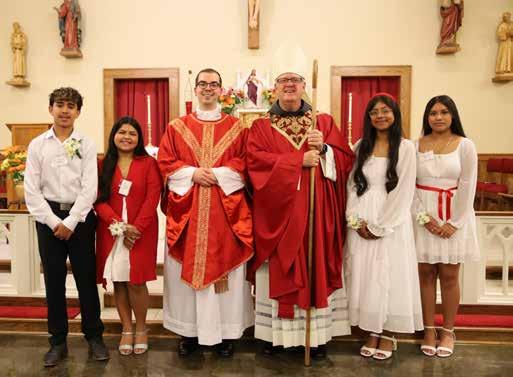
JEFFERSON — Father Jacob Mlakar was formally installed Oct. 22 as pastor of St. Francis of Assisi Parish in Jefferson and St. Frances of Rome Mission in Sparta, during a Mass offered by Bishop Michael Martin, OFM Conv. It was Bishop Martin’s first pastor installation since becoming Bishop of Charlotte in May.
Ordained in 2020, Father Mlakar was appointed pastor in July after returning from studies in Rome. During the installation rite, the official letter of appointment was read to the congregation, then Father Mlakar made his Profession of Faith and Oath of Fidelity and signed the documents officially naming him pastor.
During the special Mass, the bishop also confirmed four members of St. Frances of Rome Mission: Arlett Ines BautistaPerez, Romeo Valentin Vargas-Perez, Crystal Martinez-Reyes and Ariana Sanchez-Rojas.
In his homily, Bishop Martin encouraged the confirmation candidates to be influencers. “Don’t let the world influence you. How about we influence the world. How about we show the world what it means to live like Jesus,” he said. “Imagine that!”
“Let’s influence the world with the Holy Spirit, so that we can all live God’s glory the way He designed the world to be,” he said. “Get out there to bring His goodness to the world that needs it.”
TRISH STUKBAUER tmstukbauer@rcdoc.org
STATESVILLE — Bishop Michael Martin challenged parishioners of St. Philip the Apostle Parish to live out their calling to be disciples as he blessed new and renovated spaces on their growing campus Sunday.
Bishop Martin was greeted upon his arrival – his first visit to the Statesville parish – by faith formation students holding welcome signs. They presented him with a medallion hand-crafted of straw and palm leaves, the traditional gift for a bishop in the Mexican state of Michoacán.
Trailed by a crowd undaunted by the chilly autumn weather, Bishop Martin then made his way around the church property, blessing the parish’s welcome rock, a Jesus statue, a re-paved parking lot, the renovated narthex, a parish activities and education building, and the Nancy L. Burns courtyard.
The blessings were followed by a traditional dance. “We chose this dance because we thought it would represent our community very well,” noted Jezy Medina, one of the organizers of the Spanish dance group comprised of faith formation students, parents and parishioners.
After meeting with lay leaders, Bishop Martin celebrated the 10:30 a.m. Mass in an overflowing church. In his homily, he invited parishioners to reflect on Jesus’ question to the blind beggar Bartimaeus in Sunday’s Gospel (Mk 10:46-52).

“In many ways, that’s the winning lottery ticket, isn’t it?” Bishop Martin noted. “When the savior of the world says: ‘What do you want me to do for you?’”
“Bartimaeus just says, ‘I want to see again.’ Can we ask for the same thing?
‘Lord, I just want to see again,’” the bishop continued. “What do we want to see? We want to see lives of faith that invite us to go beyond being just believers to being

disciples.”
“A lot of times as believers we talk a good game, but as disciples we are called to believe and then to live the good game,” he said.
“As beautiful as this place is, and it’s beautiful, (and) as wonderful as all these people are, and you are wonderful … right here is not our ultimate purpose. Where is our ultimate purpose? Out there in a world that needs to hear the Good News,” he told the congregation.
St. Philip’s pastor since 2023, Father Bernard Oleru of the Missionary Society of St. Paul, echoed that sentiment when he likened the parish’s facilities to a pathway to heaven.
“I think God has really been faithful to us,” Father Oleru said. “This building and what we will do here is our contribution to the kingdom of God. That is simply what it is: the Gate of Heaven.”
Dawn McGinn, chair of the parish council and member of the building and planning committee, said the renovations were needed to accommodate the growing faith community.
“We have increased our membership by more than 200 families in the last 18 months to grow our parish to well over 600 families,” McGinn said.
To help accommodate that growth, the new activities and events center is an 8,540-square-foot building with classrooms
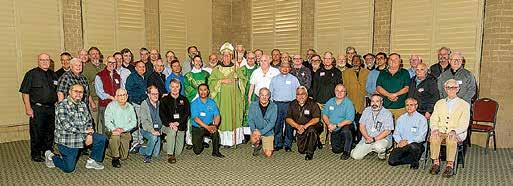
for meetings and faith formation, parish offices and a gathering space for events and fellowship. The new courtyard connects the center with the church’s social hall, completed in 2019 during the first phase of the parish’s “Forward With Christ” building campaign. In the second phase, the parish raised just over $4 million to
cover the construction of the center as well as additional repairs and renovations to the parish campus. Now moved into the new facilities, the parish has already begun stepping up to answer the bishop’s call, creating more formation activities and increasing outreach by sending multiple truckloads of supplies to the mountains after Tropical Storm Helene. And at the church, parishioners such as usher Ted Busch are caring for all parts of the campus – both new and old. He carefully polished the aluminum thresholds to make sure they were perfect for the bishop’s arrival and for everyone who will walk through the doors of St. Philip seeking to become disciples of Jesus.
More online
At www.catholicnewsherald.com : See more photos from Sunday’s Mass and blessing at St. Philip the Apostle Church in Statesville
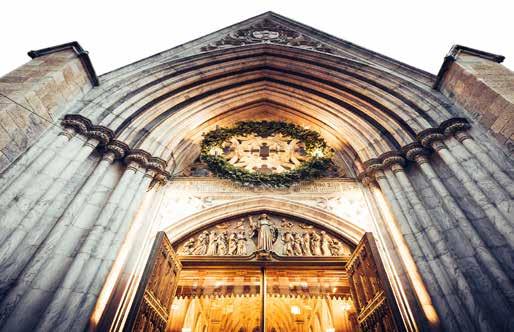


ANONYMOUS
ADRIANA & MICHAEL GRAEHLER
ANONYMOUS
JOE & CAROL GIGLER
KURT & LAURA KENKEL
DEACON PETER & LUCIE TONON
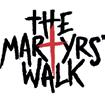

JOE & MARY ELLEN GUSTAINIS ST. BLAISE FOUNDATION FOR LIFE
THE BLOSSOM SHOP AMY & BUTCH MAYER



ANONYMOUS
JASON & MOLLY BECKERT
STEPHEN J. BLAHA, MD WOMEN'S CARE NATURAL FAMILY PLANNING OB/GYN





CHRISTINA LEE KNAUSS clknauss@rcdoc.org
CHARLOTTE — A new endowment honors Bishop Emeritus Peter Jugis and his many years of service to the Diocese of Charlotte – 41 as a priest and 21 as its bishop.
The Bishop Peter J. Jugis Endowment was announced Oct. 24 in conjunction with the 21st anniversary of his ordination as bishop, which took place on Oct. 24, 2003.




THE CURTIS FAMILY
MR. & MRS. PATRICK D’ERAMO
PATRICK & MEREDITH HOEFLING
JIM & SANDRA KEFFER



ANONYMOUS (6)
BAIST & CATANIA FAMILIES
GARY & MARY BETTIN
JACK & THERESA DEMAO
CLIFF & MEGAN EDAHL
KYLE & ASHLEY FLETCHER FRIENDS OF MIRAVIA
JAMES & HEATHER GEHMAN
IN HONOR OF RIC HABBERSETT GROFF
DR. MARK & MONA HEITBRINK
CHRIS & MEGHAN LEMKE HANS & PAT LENGERS







MATTHEWS DENTAL CARE, DR. WARREN SURFACE
PAUL & ELAINE MAYEUX
SEAN & GIGI MCDONELL
KAYE & DENNIS MCGARRY
BRUCE & MARILYN MLAKAR
MONKS OF BELMONT ABBEY
MIKE & JEANNIE MOSHER
CHARLIE & DAWN O'CONNOR
JOAN POLKING FAMILY
NICK & LAURA JEAN RABIIPOUR WAGNER & JOHNSON FAMILY
The $50,000 endowment has been funded with $25,000 from the diocese and $25,000 from the Foundation of the Diocese of Charlotte.
A decision has not yet been made on what the endowment will fund.
“Bishop Jugis has served this diocese faithfully for so many years, always putting Jesus first as he carried out the work of the Church,” said Bishop Michael Martin, OFM Conv., who was ordained the fifth Bishop of Charlotte in May upon Bishop Jugis’ retirement. “This endowment will continue that legacy of discipleship and have many impacts on the life of the diocese – a fitting tribute to him and the people of the diocese he loves.”
Bishop Jugis was surprised at the news: “I am humbled by this endowment and grateful for the opportunity to serve the people of this diocese,” he said. “I hope it will be put to work for our local Church and help people grow in holiness.”
The endowment recognizes Bishop Jugis, a native of Charlotte, for his two decades of shepherding the diocese through unprecedented growth as its fourth and

longest serving bishop.
In 2003, the diocese was still considered “mission territory,” serving a small Catholic population across its 46 counties. The number of Catholics grew rapidly, fueled by an influx of Hispanic Catholics and others who moved to the western half of North Carolina.
During his tenure, the Catholic population more than doubled to an estimated 530,000, nearly half of them Hispanic. Bishop Jugis, who speaks both English and Spanish, prioritized Hispanic ministry throughout the diocese and made Spanish language skills a key component of priestly formation.
Fifty priests and 65 deacons were ordained thanks to his fervent promotion of vocations. In 2016, Bishop Jugis founded St. Joseph College Seminary in Mount Holly to cultivate local priests from among the parishes they might one day serve. The college seminary currently has 20 seminarians in formation.
He elevated six missions or ministry centers to parishes, consecrated 22 churches and saw the diocesan school system expand to 20 schools.
His ardent devotion to the Eucharist led him to establish the annual Diocese of Charlotte Eucharistic Congress in 2005, which now attracts more than 10,000 people to Charlotte each year and is one of the largest such events in the country.
Anyone who would like to honor Bishop Jugis may contribute to this endowment fund by writing a check to: Foundation of the Diocese of Charlotte, Attn: Gina Rhodes, Director of Planned Giving, 1123 S. Church St., Charlotte, N.C. 28203. Please note on the memo line: “Bishop Jugis Endowment Fund.”
For questions, please contact Gina Rhodes at gmrhodes@rcdoc.org or 704-3703364.

CHARLOTTE — The Ladies Auxiliary Court 411 of the Knights of Peter Claver celebrated their one-year anniversary by participating in a Domestic Violence Awareness Empowerment Walk Oct. 12 and providing breakfast “on the go” in between Masses at Our Lady of Consolation Church.
The organization was founded in 1909 by four Josephite priests and three laymen from the Diocese of Mobile, Alabama, who wanted to form a Catholic fraternal order to serve the African American community. The order expanded to include the Ladies Auxiliary in 1926 and is now based in New Orleans. The chapter based out of Our Lady of Consolation, an historically African American parish, is the first in the Diocese of Charlotte. The walk was a collaborative effort with Inspired With Shanté and Mecklenburg County Community Support Services and benefited Beauty for Ashes Ministry Inc. The Charlotte-based national ministry provides advocacy, education and support to
of domestic violence as well as educational resources for organizations and businesses.
Bishop tells school leaders: ‘I’m your biggest cheerleader’
HICKORY — Quoting Aristotle and Abraham Lincoln, Bishop Michael Martin called on Catholic school leaders from across the diocese to “accentuate the uniqueness of our moment” by embracing new technology and new teaching methods to help the schools achieve their mission: building disciples. A former Catholic school educator himself, the bishop met with the principals and presidents of the diocese’s 20 schools during their two-day spiritual retreat Oct. 29-30 at the Catholic Conference Center. He urged them to recognize “the kids today” are different from those of 10, 20 and 30 years ago and to inspire their teachers – and themselves – to adapt their approach to better reach today’s students. The bishop drew laughter with stories from his days as a Catholic school principal and student (when gym class meant climbing a rope to the ceiling). He also posed for photos amid the fall color outside the conference center and pledged that, as long as school leaders remain committed to the mission, “I’m your biggest cheerleader.” Asked what he missed most about his days in education, he smiled and replied: “The kids. There’s just such a richness there.”
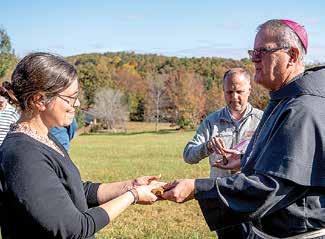
COURTNEY MCLAUGHLIN Catholic News Herald
CHARLOTTE — The Foundation of the Diocese of Charlotte has two milestones to celebrate this month: its 30th anniversary and topping $100 million in endowment assets.
Since 1994, the foundation has offered a means for people and organizations to provide long-term financial stability for the diocese and its more than 181 churches, schools, agencies and organizations.
Thanks to generous donors contributing gifts of various amounts over three decades, the foundation has distributed more than $17 million from its 370-plus endowments.
— César Hurtado and Liz Chandler



CHARLOTTE — Bishop Michael Martin, OFM Conv., announces the appointments of three priests to fill vacancies as vicars forane, effective Oct. 21:
n Father W. Christian Cook, V.F., for the Greensboro Vicariate
n Father Alfonso Gamez, V.F., for the Hickory Vicariate
n Father Paul McNulty, V.F., for the Smoky Mountain Vicariate
Sometimes called a dean, a vicar forane is a priest appointed by the bishop to assist him in promoting and coordinating the pastoral work of the Church within a specific region of the diocese called a vicariate. The Diocese of Charlotte has 10 vicariates.
Vicars forane also provide guidance and oversight in certain matters, such as keeping good order, property maintenance, administrative practices, adherence to liturgical prescripts, and the like. Also, a vicar forane provides support and care for the priests in his region, according to Church law.
— Catholic News Herald
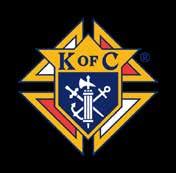

HIGH POINT — The Sisters of Charity of St. Vincent de Paul recently celebrated their silver jubilee of serving in High Point.
A Mass of Thanksgiving was celebrated at St. Vincent’s Convent Oct. 14, offered by Father James Stuhrenberg, pastor of Holy Family Parish in Clemmons. A fellowship meal followed at the convent.
Fueled by prayer and the sacraments, the Sisters of Charity of St. Vincent de Paul have poured themselves out for families in need in the Triad since being assigned to the Diocese of Charlotte in 2000, when they moved from their native India.
The sisters serve at Christ the King Mission in High Point, where among their many duties they take Communion to those in the hospital or homebound. They also teach religious education at three parishes and run a community outreach ministry called De Paul Academy, which prepares immigrant children to start school at the right age.
— Catholic News Herald. Photo provided by Imago Dei Studio.
An endowment is a permanent fund, the principal of which is invested – not spent – that generates income to help pay for projects and programs specified by the donor. They are tax deductible and help sustain the strength and viability of the diocese and its entities, paying for capital improvements, charitable outreach, education and parish operations.
The nonprofit organization is managed by a board of directors made up of both clergy and lay people. Joe Gigler, a member of St. Matthew Parish in Charlotte, serves as its chairman.
“The board and I are so grateful to the families, couples and individuals across the diocese who are leaving a legacy of faith through their estate gifts and endowments that will benefit the future needs of the Church,” Gigler said. “These types of gifts have significant impact and strengthen the good work our parishes, schools, ministries, the diocese, and the foundation strive to achieve.”
As Bishop Michael Martin noted: “The foundation’s purpose is to make a difference in the long-term future of Catholic life here in the western part of North Carolina. The fact that it is already making a difference because of its rapid growth is a testament to the visionaries who created it 30 years ago.”
Funds from the foundation’s endowments have addressed pressing maintenance needs at St. Benedict Church in Greensboro, supported religious education initiatives at Sacred Heart Parish in Brevard, and recruited and trained teachers in western North Carolina – just to name a few.
An unrestricted endowment in the name of the Diocese of Charlotte was the first fund created under the foundation, with
‘These types of gifts have significant impact...’

Joe Gigler Chairman, Foundation of the Diocese
of Charlotte
an initial investment of $250,000. Through investments and additional contributions, that endowment has grown to reflect a market value of $613,000 with distributions of over $743,000.
The second endowment – Asheville Catholic School – began with an investment of $140,000. Today that endowment has a market value of $632,000 with distributions of over $776,000 that have helped the school.
“The greatest impact that our endowments have is the countless students that they benefit,” said Michael Miller, who served as principal of Asheville Catholic for 11 years and is now the diocese’s assistant superintendent of schools. “The funds that contribute to endowments, whether they’re legacy gifts or other types of contributions, power the work of Catholic schools to bring our students closer to Christ. The generosity of so many is literally leading to the salvation of souls. In this way, the simple act of giving to our endowments has an impact that goes beyond when the student graduates. The impact is eternal.”
Interested in setting up – or adding to – an endowment to benefit your parish or Catholic school? You can establish an endowment in the Diocese of Charlotte Foundation by leaving a bequest in a will, a beneficiary designation from a retirement plan, a trust or annuity, or a gift of real estate, life insurance, cash or securities. For details, contact Gina Rhodes at 704370-3364 or gmrhodes@rcdoc.org.

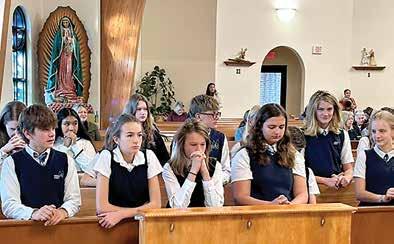

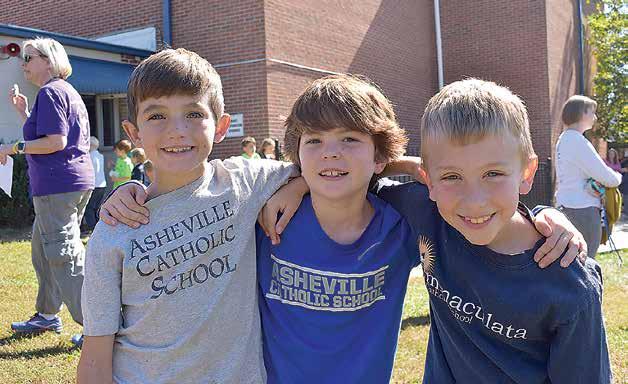
HENDERSONVILLE — As communities across western North Carolina began the long recovery from Tropical Storm Helene, there were hopeful signs of life returning to a version of normalcy as the community joined together to help those impacted. At Immaculata Catholic School, students were joined by students from Asheville Catholic School. The schools “temporarily merged,” their principals Margaret Beale and Melissa Stuart announced, until water service could be restored at Asheville Catholic. Students from both institutions returned to school simultaneously Oct. 16, attending Mass together at Immaculate Conception Church next to the school. Water was restored sooner than anticipated at Asheville Catholic, and its students returned to their campus Oct. 21.

Turn your unused car, truck, boat, RV, or motorcycle into a force for good. Donate it to Catholic Charities and help fund programs for those in need.
And receive a tax benefit!
All vehicle makes and models are accepted.


CHRISTINA LEE KNAUSS clknauss@rcdoc.org
CHARLOTTE — Students at Charlotte Catholic High School will have a new opportunity to explore education through the window of Catholic liberal arts beginning with the 2025 school year.
The St. Augustine Scholars Program is a four-year honors pathway that will take students through a classical course of study that will explore philosophy, logic, Latin and primary classical texts.
The inaugural class of freshmen will be admitted to the program in the fall of 2025.
“This program is an interdisciplinary approach in the Catholic liberal arts tradition that integrates knowledge from various fields to form a cohesive, Christcentered understanding of the world,” said Brian Dorrian, who teaches philosophy at the high school and has been selected to oversee the initiative.
Through the study of subjects such as theology, philosophy, literature, history and the arts, students will receive not only a strong academic foundation, but also learn how each subject reveals different dimensions of truth, he said.
St. Augustine was selected as patron of the new program because of his legacy as “one of the greatest students and teachers in the history of the Church,” Dorrian said.
The program has a four-year structure, with each year building upon the previous, Dorrian said. Each year has a specific theme: The Great Adventure, The Search for
Wisdom, The Battle (for spiritual and moral integrity), and The Great Commission.
“This structure encourages students to connect their learning across disciplines and see how these themes are relevant in every area of life, from literature to science to the arts,” Dorrian said.
The program was developed as a response to surveys that indicated more parents were seeking a Catholic-based classical education for their children, according to Dr. Greg Monroe, superintendent of the Diocese of Charlotte’s Catholic schools.
“As all of our schools lean further into their Catholic identity across academics, the arts and athletics, it’s exciting to see a program like this where students can go even deeper into their faith through the liberal arts,” Monroe said.
Learn more
At www.charlottecatholic.org/about-us/ st-augustine-scholars-program : Get more information about the new St. Augustine Scholars Program


FEMA is providing $750 to survivors of Tropical Sto rm Helene to help those in affected areas with essential needs, such as food, water, an d emergency supplies as well as temporary housing, home repairs, and other disaster -related needs. Even if you have received FEMA funds in the past, you can still appl y for assistance.
Call 800-621-3362 to apply by Nov. 27 or choose one of three convenient online options:
Visit disasterassistance.gov to register.

Download and apply through the FEMA app: ccdoc.org/fema-app

Find a local disaster recovery center near you: ccdoc.org/fema-drc

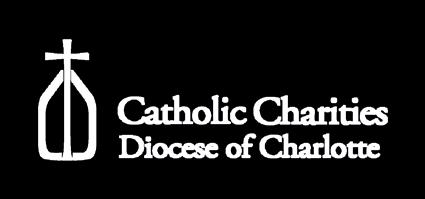
Catholic Charities offers compassionate care and guidance for Tropical Storm Helene recovery. Reach out now.

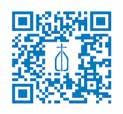
By Rosheene L. Adams

The Lead Me, Guide Me hymnal emerged from a unique historical and cultural context, driven by the need for a liturgical resource that reflected the experiences, heritage and spiritual expressions of Black Catholics in the United States.
This hymnal’s development was a direct response to the African American Catholic community’s desire for a worship resource that was culturally resonant. While Black Catholics were a part of the Church since the earliest days of American history, their cultural contributions often were overlooked in mainstream Catholic worship.
The National Black Catholic Clergy Caucus, formed in 1968, was instrumental in advocating for a hymnal that would honor and reflect the Black Catholic spiritual tradition. Following the Civil Rights Movement, Black Catholics sought a worship experience that integrated their unique cultural expressions. Lead Me, Guide Me became a symbol of this broader movement for representation and inclusion within the Church.
While Black Catholics had long incorporated elements of gospel music, spirituals and traditional hymns into their worship services, these forms were not formally included in any official Catholic liturgical resource. The Lead Me, Guide Me project changed this by creating a collection that blended the richness of African American sacred music with the liturgical norms of the Catholic Church.

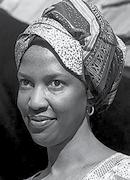

Aswe celebrate Black Catholic History Month this November, it is fitting to reflect on one of the most significant contributions to Black Catholic liturgical life: the Lead Me, Guide Me hymnal. This collection of sacred music is more than just a compilation of songs; it embodies the faith, culture and history of Black Catholics in the United States.
needs and worship styles of Black Catholic parishes. This work demonstrated that Catholic faith could be expressed through a variety of cultural lenses while maintaining theological integrity.

Several notable figures played pivotal roles in the creation of the hymnal:
n Dr. Horace Clarence Boyer, a renowned gospel musician and scholar, served as the music editor for the first edition. His knowledge of African American sacred music helped shape the hymnal’s unique blend of gospel and Catholic traditions.
n Sister Thea Bowman, FSPA, a charismatic advocate for Black spirituality, was influential in promoting the inclusion of African American musical heritage in Catholic worship. Her advocacy inspired the ethos behind the hymnal.
n Doris M. Akers, a pioneering gospel composer, contributed the title hymn “Lead Me, Guide Me,” whose powerful message of faith continues to resonate in Black Catholic worship today.
The hymnal committee – Black Catholic clergy and lay leaders, led by Archbishop James P. Lyke –selected songs that authentically reflected the liturgical
The first edition of Lead Me, Guide Me, published in 1987, introduced a wide variety of musical styles, including African American spirituals and gospel music, alongside traditional Catholic hymns. A second edition, published in 2012, reflected updates in liturgical norms and incorporated new compositions written over the previous 25 years. This edition expanded the hymnal’s repertoire to include more contemporary gospel pieces, ensuring that it continued to be a living document that fully represented Black Catholic worship.
Lead Me, Guide Me holds deep cultural and spiritual significance within the Black Catholic community. Through its pages, Black Catholics hear the echoes of their ancestors’ struggles, joys and unwavering faith. The inclusion of gospel music affirms the dignity and beauty of Black sacred traditions. Gospel, rooted in the pain of slavery and segregation, often carries messages
of hope, resilience and trust in God. Songs such as “Precious Lord, Take My Hand” and “Guide My Feet” engage worshipers deeply, allowing them to express their faith communally. These compositions add energy and emotion to the beauty of Catholic liturgy, inviting full participation from the congregation.
Songs with improvisational elements and call-andresponse structures characteristic of gospel music, such as “The Lord is My Light,” make the liturgy a more interactive experience. Worship becomes a dynamic communal event where the faithful are active participants in the expression of their faith.
With racial justice and unity at the forefront of social conversations, the Lead Me, Guide Me hymnal remains an invaluable resource. Many of the songs reflect the historical struggle for justice and equality while carrying messages of hope and resilience. For example, “Lift Every Voice and Sing,” often referred to as the Black national anthem, resonates with themes of liberty and justice.
By addressing contemporary social justice issues through faith-based worship, this hymnal bridges the gap between spiritual life and societal challenges. It allows congregations to reflect on these themes within the sacred context of the Mass, grounding their reflections in the rich history of African American perseverance.
Today, Lead Me, Guide Me continues to play a central role in worship within Black Catholic parishes, from urban centers such as Chicago, New Orleans and Washington, D.C., to smaller, rural congregations. The hymnal is used not only in Sunday Mass but also during significant celebrations such as Black History Month and the Feast of St. Martin de Porres.
In recent years, its use has spread beyond predominantly Black Catholic communities as parishes across the United States have incorporated selections from Lead Me, Guide Me to foster a greater sense of unity and inclusivity. Gospel songs such as “Soon and Very Soon” by Andraé Crouch are now sung at mainstream Catholic services, transcending cultural boundaries while maintaining their roots in the Black gospel tradition.
As the Catholic Church embraces its global diversity, Lead Me, Guide Me enriches the liturgy by ensuring that Black Catholic traditions have a prominent and rightful place within the Church.
The hymnal stands as a testament to the Church’s commitment to recognizing and celebrating African American contributions, affirming that worship is richer and more complete when it includes the voices of all God’s people.

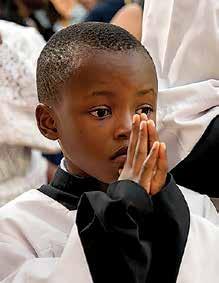
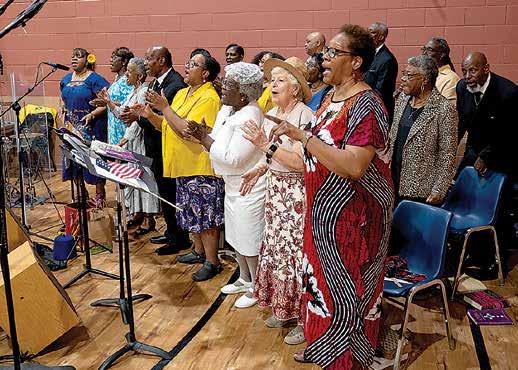

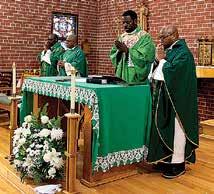

On July 24, 1990, the National Black Catholic Clergy Caucus of the United States designated November as Black Catholic History Month to celebrate the history and heritage of Black Catholics. November is significant because two important Black saints are commemorated during the month: St. Martin de Porres’ feast day (Nov. 3) and St. Augustine’s birthday (Nov. 13). With All Saints and All Souls’ Day, we also remember the saints and souls of Africa and the African Diaspora.
There are 3 million African American Catholics in the United States.
Of Roman Catholic parishes in the United States, 798 are considered to be predominantly African American. About 76 percent of African American Catholics are in diverse or shared parishes, and 24 percent are in predominantly African American parishes.
As of October 2024, there are 12 living African American bishops, including one cardinal and one archbishop. Also, there are five retired bishops. Currently, four U.S. dioceses are headed by African American bishops.
— USCCB
On May 17, 1985, a group of 10 people calling themselves the Committee for Concerned Black Catholics met to discuss issues and concerns that were particular to Black Catholics in the diocese. They urged then-Bishop John Donoghue to coordinate efforts of Black Catholics in the diocese.
In July 1985, the ministry was officially begun as the Diocesan Committee on Black Catholic Ministry and Evangelization and was a part of the diocesan Ministry for Justice and Peace. In 1989 it became a separate office to address and serve the needs and concerns of Black Catholics in the diocese.
Since then, the African American Affairs Ministry has grown. Its main goal is to make visible the work, contributions, traditions and culture of Black Catholics to the Church and to society, and to propose adequate diocesan responses to racism and other social injustices.
— www.charlottediocese.org

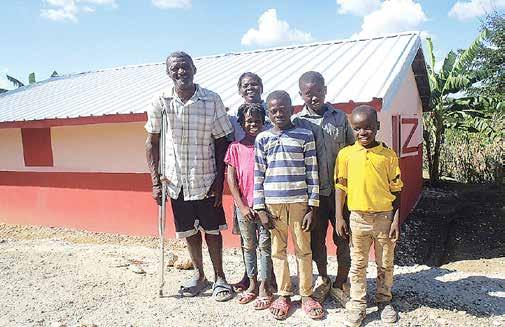
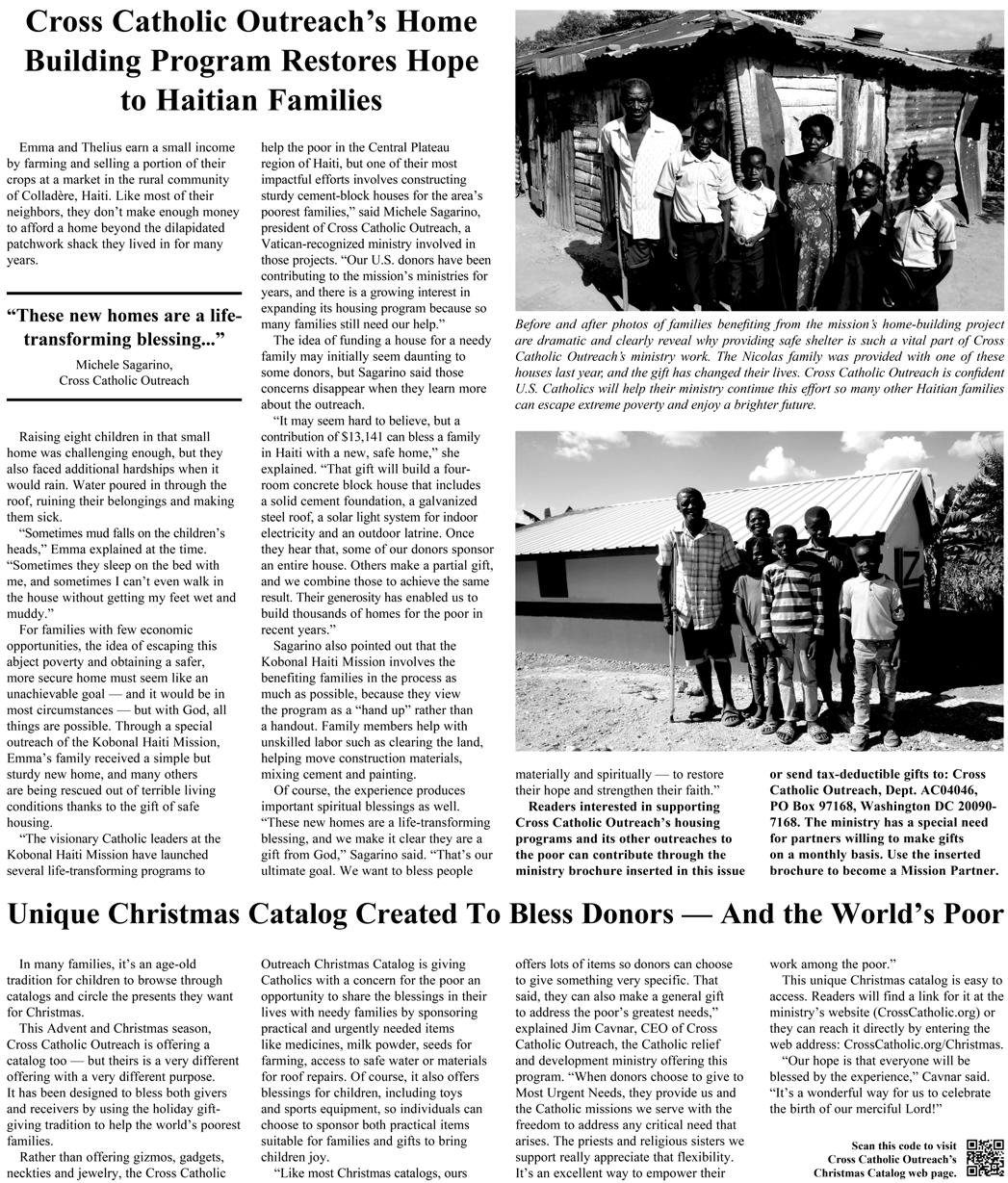
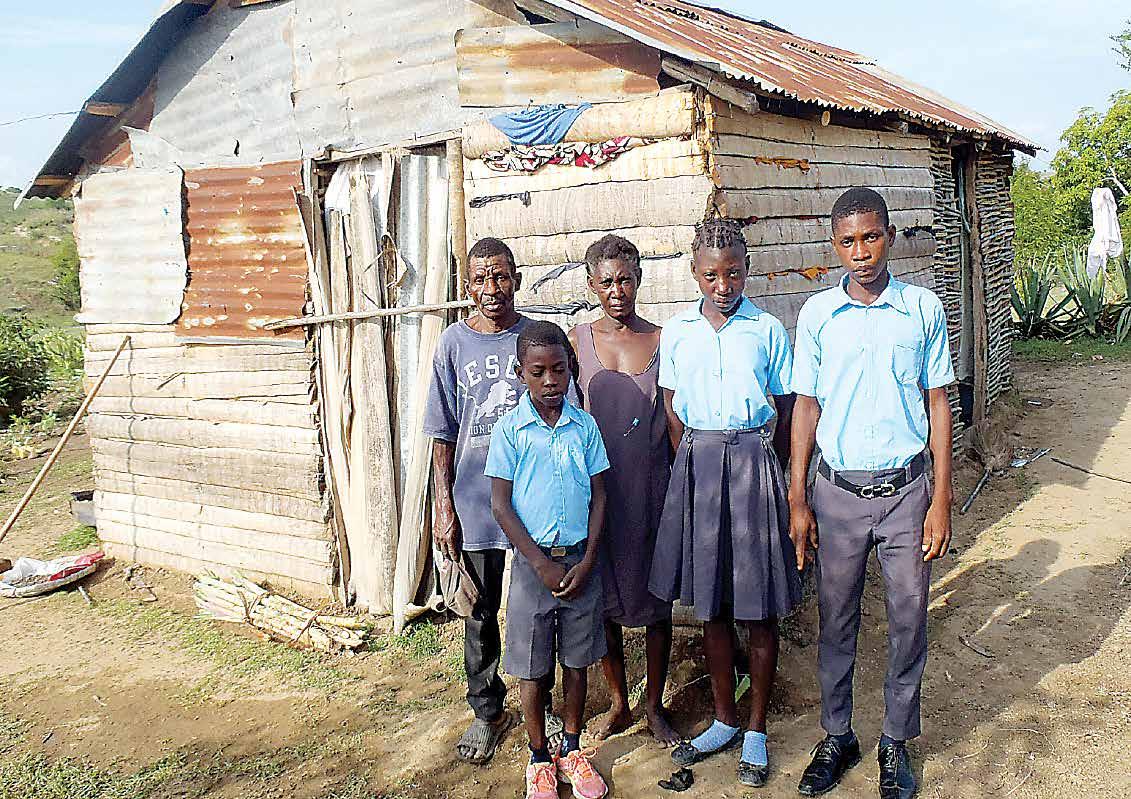

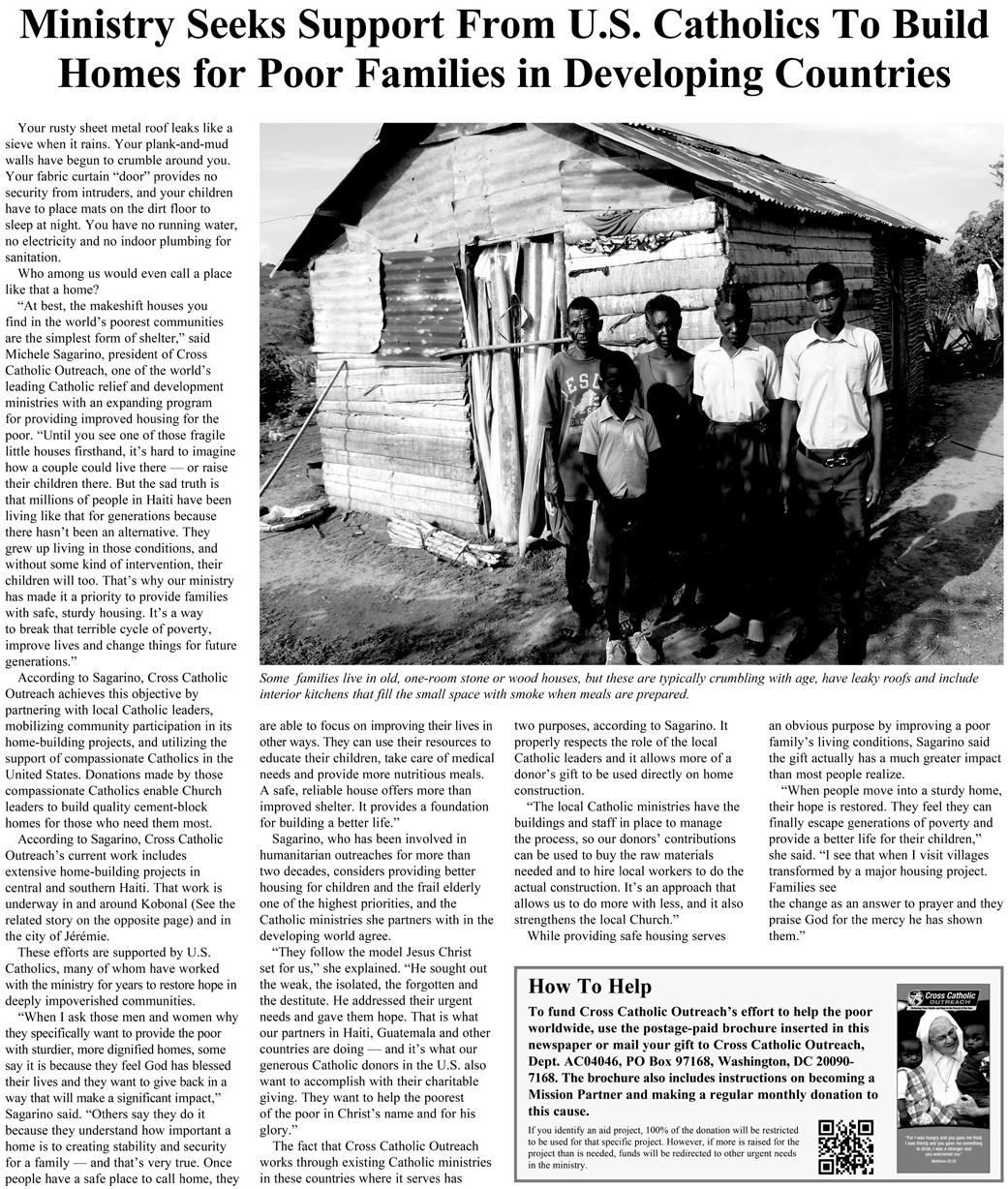


SERGIO LÓPEZ selopez@rcdoc.org
BOONVILLE — En una sencilla pero significativa celebración realizada el pasado domingo 20 de octubre, cientos de fieles festejaron el Vigésimo Aniversario de la fundación de la parroquia Divino Redentor, aunque la fecha exacta de la consagración de la Iglesia, llevada a cabo

por el entonces Obispo Peter Jugis, fue el 20 de agosto del 2004.
El párroco, Reverendo Jean Pierre Swamunu Lhoposo, junto con el comité de eventos, coordinó la conmemoración de la importante fecha ofreciendo una deliciosa selección de platillos típicos mexicanos.
Para animar la velada y entretener a los presentes, se ofreció un variado repertorio de bailables folclóricos presentados por un grupo de parroquianos que promueve
y apadrina el Museo Regional de la ciudad de Mount Airy, en el condado Surry. Esta agrupación está muy bien preparada y cuenta con diferentes números de bailables, todos ellos muy representativos de varios estados de la República Mexicana. Un grupo folklórico invitado procendente de otra parroquia ejecutó alegremente la danza de los chinelos que tiene su origen, según algunos estudiosos, en el estado de Morelos, en la época colonial. La parroquia Divino Redentos está ubicada geográficamente justo en medio de dos condados: Yadkin y Surry. La mayoría de los parroquianos proviene de estos condados y otras ciudades cercanas y, desde inicios de la parroquia, todos se sienten identificados con ella y la toman como suya. Durante esta celebración, el Reverendo Swamunu Lhoposo ofreció dos reconocimientos por la entrega, servicio y dedicación proporcionados a la parroquia. Estas muestras de gratitud fueron entregadas a la secretaria, Señora Petra Arroyo, y a la contadora, Señora Kathy Kyle.

El Padre Jean Pierre Swamunu Lhoposo comentó que el festejo sencillo en esta
CÉSAR HURTADO rchurtado@rcdoc.org
CHARLOTTE — Los organizadores de la recepción de la carrera de relevos de la Antorcha Guadalupana a su paso por nuestro territorio diocesano, informaron que la caravana de corredores que portan las imágenes de la Virgen de Guadalupe y San Juan Diego, además de la flama de la antorcha, será inicialmente recibida el martes 5 de noviembre en la parroquia Inmaculado Corazón en Hendersonville. El miércoles 6 arribará a la parroquia San José en Newton. Se le espera en 711 Conover Blvd., Conover, para desde allí peregrinar hasta la iglesia donde se le ofrecerá bailables y Misa a las 6 de la tarde.
La parroquia Nuestra Señora de Guadalupe en Charlotte la acogerá con una procesión, danzas y Misa el 7 de noviembre, iniciando las actividades alrededor de las 5 de la tarde. El viernes 8 se la espera en la parroquia San Francisco de Asís en Mocksville. La procesión desde Rich Park comenzará a las 5 p.m. y la Misa se ha programado en la iglesia a las 6:30 de la tarde.
El sábado 9, a las 10 de la mañana, visitará la Iglesia Nuestra Señora del Rosario en Lexington, donde permanecerá hasta después de la Misa que se celebrará al mediodía.
Posteriormente, a las 5 de la tarde, los parroquianos de Santa María en Greensboro le rendirlán un homenaje a partir de las 7 de la tarde.
El domingo 10, desde las 8 de la mañana, permanecerá en la parroquia Nuestra Señora de los Caminos en Thomasville. Se ofrecerán dos Misas, además de danzas y festejos, para luego ser trasladada a la parroquia Inmaculado Corazón de María en High Point, donde se ofrecerá una Misa a las 6:30 p.m. Los corredores de Greensboro partirán hacia territorio de la Diócesis de Raleigh el lunes 11 de noviembre a las 9:00 de la mañana, saliendo desde High Point. La carrera Antorcha Guadalupana partió de la Ciudad de México el pasado 30 de agosto. Tras recorrer numerosos estados de México y la Unión Americana, llegará a la ciudad de Nueva York el 12 de diciembre, día central de la celebración de la Virgen de Guadalupe, patrona de las Américas.
ocasión se debe a que realmente le gustaría impulsar la celebración del Aniversario de Plata de la parroquia, es decir los 25 años de consagración en 2029, esperando que para entonces se pueda dar una conmemoración que sea muy especial y emotiva para la parroquia y sus feligreses.
Más online
En www.catholicnewsherald.com
Lee más sobre la historia de la Parroquia Divino Redentor en Boonville
Conferencia Catequética abordará importante agenda
CÉSAR HURTADO rchurtado@rcdoc.org
CHARLOTTE — El sábado 16 de noviembre, de 9 de la mañana a 4 de la tarde, se realizará la Conferencia Catequética anual que organiza la oficina de formación de la fe diocesana. La cita tendrá lugar, como es tradicional, en el Centro de Convenciones Metro de Hickory, 1960 13th Aveue Dr. S.E., Hickory.
Con charlas en inglés y español, la conferencia espera reunir catequistas, maestros, padres y sacerdotes en un día de crecimiento en la fe bajo la guía de importantes conferencistas. Durante la jornada se ofrecerán tres grupos de sesiones, además de la celebración de la Santa Misa a las 11 de la mañana, que será oficiada por el Reverendo Andrés Gutiérrez, párroco de la Iglesia Inmaculada Concepción en Hendersonville.
Las sesiones en español contarán con la presencia del expositor Gerardo Salazar, consultor catequético nacional Bilingüe de William H. Sadlier Inc. Salazar, quien tiene una licenciatura en Periodismo y Comunicaciones, maestría en Teología
y Ministerio, y Doctorado en Ministerio. Salazar tendrá a su cargo los temas de organización y logística de eventos catequéticos, y marketing y publicidad en la catequesis.
El Rev. Andrés Gutiérrez, sacerdote colombiano que ha residido en España y Estados Unidos, ordenado en Perú para la Diócesis de Cusco, y actualmente párroco diocesano, tendrá a su cargo, como orador central, la conferencia ‘Espiritualidad de la Música Sagrada’.
También participarán la Sra. Olga Lucía Villar, directora ejecutiva del Instituto Pastoral del Sureste, SEPI por sus siglas en inglés, y Juan González, seminarista del Seminario Universitario San José en Mount Holly
La Sra. Villar explicará los alcances del Plan Nacional Hispano recientemente publicado por la Conferencia de Obispos de Estados Unidos, mientras que González tratará sobre los elementos del canto sagrado litúrgico y el canto de animación.
La inscripción tiene un costo de $35 que cubre asistencia, almuerzo y refrigerios. Para mayores informes llame a la oficina de formación de la fe al 704-370-3244.
Invitó
TRISH STUKBAUER tmstukbauer@rcdoc.org
STATESVILLE — El pasado domingo, el Obispo Michael Martin retó a los feligreses de la Parroquia San Felipe Apóstol a vivir su llamado a ser discípulos, mientras bendecía espacios nuevos y renovados en su creciente campus.
En su primera visita a la parroquia de Statesville, el Obispo Martin fue recibido por estudiantes de formación en la fe que sostenían carteles de bienvenida. Le entregaron un medallón hecho a mano con paja y hojas de palma, el regalo tradicional para un obispo en el estado mexicano de Michoacán.
Seguido por una multitud que no se amilanó ante el clima frío, el Obispo Martin recorrió la propiedad de la iglesia, bendiciendo la roca de bienvenida de la parroquia, una estatua de Jesús, un estacionamiento repavimentado, el nártex renovado, un edificio de actividades y educación parroquial y el jardín Nancy L. Burns.
Las bendiciones fueron seguidas por un baile tradicional. “Elegimos este baile porque pensamos que representaría muy bien a nuestra comunidad”, señaló Jezy Medina, una de las organizadoras del grupo de danza compuesto por estudiantes de formación en la fe, padres y feligreses. Después de reunirse con los líderes laicos, el Obispo Martin celebró Misa a las 10:30 a.m. en una iglesia repleta. En su homilía, invitó a los feligreses a reflexionar sobre la pregunta de Jesús al mendigo ciego Bartimeo en el Evangelio del domingo (Marcos 10:46-52).
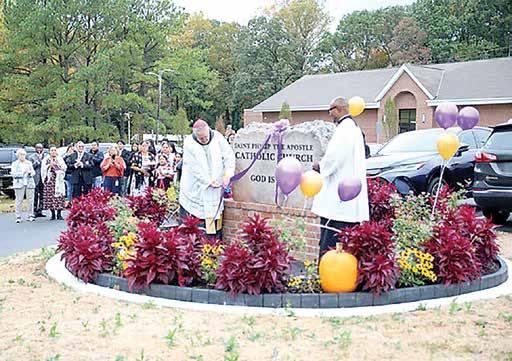
“En muchos sentidos, ese es el boleto de lotería ganador, ¿no es así?” Señaló el Obispo Martin. “Cuando el salvador del mundo pregunta: ‘¿Qué quieres que haga por ti?’”.
“Bartimeo simplemente dice: ‘Quiero ver de nuevo’. ¿Podemos pedir lo mismo?
‘Señor, solo quiero ver de nuevo’”, continuó el obispo. “¿Qué queremos ver? Queremos ver vidas de fe que nos inviten a ir más allá de ser solo creyentes para ser discípulos”.
“Muchas veces como creyentes hablamos y hablamos, pero como discípulos estamos llamados a creer y luego a hablar”, dijo.
“A pesar de lo hermoso que es este lugar, y es hermoso, (y) tan maravillosas como son todas estas personas, y son maravillosas... Aquí mismo no está nuestro propósito final. ¿Dónde está nuestro propósito final? Allá afuera, en un mundo que necesita escuchar la Buena Nueva”,

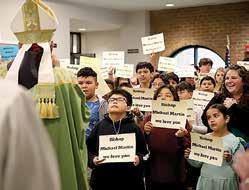
dijo a la congregación.
El párroco de San Felipe desde 2023, el Padre Bernard Oleru, de la Sociedad Misionera de San Pablo, se hizo eco de ese sentimiento cuando comparó las
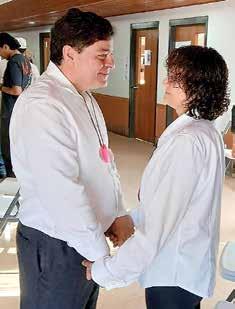
Las parejas se fueron felices y con las manos llenas de premios que se sortearon a lo largo del día.
instalaciones de la parroquia con un camino al cielo.
“Creo que Dios nos ha sido realmente fiel”, dijo el Padre Oleru. “Este edificio y lo que haremos aquí es nuestra contribución al reino de Dios. Eso es simplemente lo que es: las Puertas del Cielo”.
Dawn McGinn, presidenta del consejo parroquial y miembro del comité de construcción y planificación, dijo que las renovaciones eran necesarias para acomodar a la creciente comunidad de fe.
“Hemos aumentado nuestra membresía en más de 200 familias en los últimos 18 meses para hacer crecer nuestra parroquia a más de 600 familias”, dijo McGinn.
Para ayudar a acoger ese crecimiento, el nuevo centro de actividades y eventos es un edificio de 6,436 pies cuadrados con aulas para reuniones y formación en la fe, oficinas parroquiales y un espacio de reunión para eventos y compañerismo. El nuevo jardín conecta el centro con el salón social de la iglesia, terminado en 2019 durante la primera fase de la campaña de construcción ‘Adelante con Cristo’ de la parroquia. En la segunda fase, la parroquia recaudó poco más de $4 millones para cubrir la construcción del centro, así como reparaciones y renovaciones adicionales en el campus.
Ahora que se ha trasladado a las nuevas instalaciones, la parroquia ya ha comenzado a dar un paso adelante para responder al llamado del Obispo Martin, creando más actividades de formación, y aumentando el alcance mediante el envío de múltiples camiones cargados de suministros a las montañas, a raíz de la tormenta tropical Helene.
Y en la iglesia, feligreses, como el ujier Ted Busch, se ocupan de todos los sectores del campus, tanto los nuevos como los antiguos. Pulió cuidadosamente los umbrales de aluminio para asegurarse de que estuvieran perfectos para la llegada del obispo, y para todos los que entren por las puertas de San Felipe en su intento de convertirse en discípulos de Jesús.

ASHEVILLE — Los miembros de la Parroquia Divine Redeemer en Boonville están entre muchas personas en la Diócesis de Charlotte que han estado llevando suministros muy necesarios a la región afectada por la tormenta tropical Helene el mes pasado. En la imagen de arriba, se les ve en la Iglesia de San Eugenio en Asheville, donde entregaron un remolque cargado de agua y otros artículos para su distribución a familias locales necesitadas.
Helene: Más información
Lea la cobertura completa de los impactos de la Tormenta Tropical Helene y los esfuerzos de recuperación en curso en el oeste de Carolina del Norte, online en www.catholicnewsherald.com
¿Necesita ayuda?
n Comuníquese con Caridades Católicas a través de un formulario de solicitud en línea y/o información de contacto local en www.ccdoc.org n Asistencia de FEMA: Visite www.disasterassistance.gov/es, llame al 800-621-3362 o descargue y solicite a través de la aplicación de FEMA.

Asegúrate de que la confirmación no sea la última vez que la parroquia vea a los jóvenes
La Iglesia Católica debe esforzarse más para garantizar que el sacramento de la confirmación no se convierta en el “sacramento de despedida” para los jóvenes, quienes lo reciben y luego no vuelven a la iglesia hasta que desean casarse, dijo el Papa Francisco.
“El problema es cómo asegurarnos de que el sacramento de la confirmación no se reduzca, en la práctica, a los ‘últimos sacramentos’, es decir, al sacramento de la ‘partida’ de la Iglesia, sino que sea, en cambio, el sacramento del comienzo de una participación activa en su vida”, dijo el 30 de octubre en su audiencia general semanal.
Continuando una serie de charlas sobre el Espíritu Santo en la vida de la Iglesia, el papa dijo que las parroquias deben identificar a los laicos “que han tenido un encuentro personal con Cristo y una verdadera experiencia del Espíritu”, y pedirles que dirijan las clases de preparación para la confirmación.
Pero todos los católicos deben ayudar también a reavivar la “llama” del Espíritu Santo que recibieron en la confirmación, como los discípulos recibieron en Pentecostés, dijo. Y el Año Santo 2025, que comienza el 24 de diciembre, es un buen momento para hacerlo.
“Aquí hay un buen objetivo para el Año Jubilar: quitar las cenizas del hábito y el desapego, para convertirnos, como los portadores de la antorcha en los Juegos Olímpicos, en portadores de la llama del Espíritu”, dijo. “¡Que el Espíritu nos ayude a dar algunos pasos en esta dirección!”.
“La confirmación es para todos los fieles lo que Pentecostés fue para toda la Iglesia”, dijo el papa, citando el catecismo de los obispos italianos para adultos. “Fortalece la incorporación bautismal en Cristo y la Iglesia y la consagración a la misión profética, real y sacerdotal”.
En otras palabras, dijo, “A través del sacramento de la confirmación, el Espíritu Santo nos consagra y fortalece, haciéndonos participantes activos en la misión de la Iglesia”.
Al saludar a un grupo de jóvenes croatas étnicos que habían sido confirmados recientemente en Alemania, el Papa Francisco oró para que el Espíritu Santo “inflame sus corazones y los haga testigos alegres de Cristo”.
Instando a todos los presentes en la Plaza de San Pedro a continuar orando por la paz en Ucrania, Palestina, Israel y Birmania, el papa dijo que había leído sobre 150 personas que fueron asesinadas. No dijo dónde, pero algunos asumieron que se refería a un ataque terrorista del 6 de octubre en el pueblo de Manni, Burkina Faso; mientras que El Vaticano Noticias informó que se refería a ataques israelíes en el norte de Gaza.
“¿Qué tienen que ver los niños, las familias, con la guerra?” preguntó el papa. “Son las primeras víctimas. Oremos por la paz”.
El religioso dominico peruano, fue hijo natural del ilustre hidalgo don Juan de Porres, que estuvo un breve tiempo en la ciudad de Lima. Tuvo don Juan dos hijos, Martín y Juana, con la mulata Ana Vázquez. Martín nació mulato y con cuerpo de atleta el 9 de diciembre de 1579 y lo bautizaron, en la parroquia de San Sebastián, en la misma pila que Santa Rosa de Lima.
Martín fue tardíamente reconocido por su padre y llevado a Guayaquil, regresando a Lima, cuando a su padre lo nombraron gobernador de Panamá. Comenzó a familiarizarse con el oficio de barbero, que en aquella época era bastante más que sacar dientes, extraer muelas o hacer sangrías; también comprendía el oficio disponer de yerbas para hacer emplastos y poder curar dolores; además, era preciso un determinado uso del bisturí para abrir hinchazones y tumores.

Martín se hizo experto como ayudante de un médico español. De ello comenzó a vivir y su trabajo le permitió ayudar de modo eficaz a los pobres que no podían pagarle. Por su barbería pasarán igual labriegos que soldados, irán a buscar alivio tanto caballeros como corregidores.
Como su persona y nombre imponía respeto, tuvo que intervenir en arreglos de matrimonios irregulares, en dirimir contiendas, fallar en pleitos y reconciliar familias. Con clarísimo criterio aconsejó en
NOVIEMBRE 3-9
Domingo: Deuteronomio 6:2-6, Salmos 18:2-3, 3-4, 47, 51, Hebreos 7:23-28, Marcos 12:28b-34; Lunes (San Carlos Borromeo, Obispo): Filipenses 2:1-4, Salmos131:1bcde, 2, 3, Lucas 14:12-14; Martes: Filipenses 2:5-11, Salmos 22:26b-27, 28-30ab, 30e, 31-32, Lucas 14:15-24; Miércoles: Filipenses 2:1218, Salmos 27:1, 4, 13-14, Lucas 14:25-33; Jueves: Filipenses 3:3-8a, Salmos 105:2-3, 4-5, 6-7, Lucas 15:1-10; Viernes: Filipenses 3:17-4:1, Salmos 122:1-2, 3-4ab, 4cd-5, Lucas 16:1-8; Sábado (Dedicación de la Basílica de San Juan de Letrán en Roma): Ezequiel 47:1-2, 8-9, 12, Salmos 46:2-3, 5-6, 8-9, 1 Corintios 3:9c-11, 16-17, Jn 2:13-22
más de una ocasión al Virrey y al arzobispo en cuestiones delicadas.
Alguna vez, quienes espiaban sus costumbres, lo pudieron ver en éxtasis, elevado sobre el suelo. Su devoción era por la Eucaristía y asistía diariamente a Misa.
CARITATIVO
Por su trabajo y sensibilidad tuvo
NOVIEMBRE 10-16
Domingo: 1 Reyes 17:10-16, Salmos 146:7, 8-9, 9-10, Hebreos 9:24-28, Marcos 12:38-44 o 12:41-44; Lunes (San Martín de Tours, Obispo): Tito 1:1-9, Salmos 24:1b-2, 3-4ab, 5-6, Lucas 17:1-6; Martes (San Josafat, Obispo y Mártir): Tito 2:1-8, 11-14, Salmos 37:3-4, 18 y 23, 27 y 29, Lucas 17:7-10; Miércoles (Santa Francisca Javier Cabrini, Virgen): Tito 3:1-7, Salmos 23:1b-3a, 3bc-4, 5, 6, Lucas 17:11-19; Jueves: Filemón 7-20, Salmos 146:7, 8-9a, 9bc-10, Lucas 17:20-25; Viernes: 2 Juan 4-9, Salmos 119:1, 2, 10, 11, 17, 18, Lucas 17:26-37; Sábado: 3 Juan 5-8, Salmos 112:1-2, 3-4, 5-6, Lucas 18:1-8
contacto con los monjes del convento dominico del Rosario, donde pidió la admisión como donado, ocupando la ínfima escala entre los frailes.
Llenó de pobres el convento, la casa de su hermana y el hospital. A todos curaba y, en otras ocasiones, algunos enfermos consiguieron recuperar instantáneamente la salud sólo con el toque de su mano.
“La caridad tiene siempre las puertas abiertas, y los enfermos no tienen clausura”, aseguró. No se sabe cómo, pero varias veces estuvo curando en distintos sitios y a diversos enfermos al mismo tiempo, con una bilocación sobrenatural. El contemplativo Porres recibía disciplinas hasta derramar sangre haciéndose azotar. Se mostró también amigo de perros cojos abandonados que curaba, de mulas dispuestas para el matadero y hasta lo vieron reñir a los ratones que se comían los lienzos de la sacristía. Se ve que no puso límite en la creación al ejercicio de la caridad. Murió el día previsto para su muerte que había conocido con anticipación. Fue el 3 de noviembre de 1639 y causada por una simple fiebre.
El Virrey, Conde de Chinchón, Feliciano de la Vega, arzobispo, y más personajes limeños se mezclaron con los incontables mulatos y con los nativos pobres que recortaron tantos trozos de su hábito que hubo necesidad de cambiarlo de ropa varias veces.
Fue beatificado el 29 de octubre de 1837 por el Papa Gregorio XVI, y canonizado por el Papa Juan XXIII el 6 de mayo de 1962. — Condensado de www.catholic.net
NOVIEMBRE 17-23
Domingo: Deuteronomio 12:1-3, Salmos 16:5, 8, 9-10, 11, Hebreos 10:11-14, 18, Marcos 13:24-32; Lunes: Apocalipsis 1:1-4; 2:1-5, Salmos 1:1-2, 3, 4 y 6, Lucas 18:35-43; Martes: Apocalipsis 3:1-6, 14-22, Salmos 15:2-3a, 3bc-4ab, 5, Lucas 19:1-10; Miércoles: Apocalipsis 4:1-11, Salmos 150:1b-2, 3-4, 5-6, Lucas 19:11-28; Jueves (Presentación de la Santísima Virgen María): Apocalipsis 5:1-10, Salmos 149:1b-2, 3-4, 5-6a y 9b, Lucas 19:41-44; Viernes (Santa Cecilia, Virgen y Mártir): Apocalipsis 10:8-11, Salmos 119:14, 24, 72, 103, 111, 131, Lucas 19:45-48; Sábado: Apocalipsis 11:4-12, Salmos 144:1, 2, 9-10, Lucas 20:27-40

JUSTIN MCLELLAN Catholic News Service
VATICAN CITY — Three years after he asked the world’s Catholics to walk together in faith on a synodal journey, Pope Francis said that the Church cannot risk becoming “static” but must continue as a “missionary Church that walks with her Lord through the streets of the world.”
“We cannot remain inert before the questions raised by the women and men of today, before the challenges of our time, the urgency of evangelization and the many wounds that afflict humanity,” the pope said in his homily during the closing Mass for the Synod of Bishops in St. Peter’s Basilica Oct. 27.
“A sedentary Church, that inadvertently withdraws from life and confines itself to the margins of reality, is a Church that risks remaining blind and becoming comfortable with its own unease,” he said.

The previous day, the pope received the final document approved by the more than 350 members of the synod. The document called for the increased participation of lay men and women in all levels of Church life, including in parishes, dioceses and in seminaries.
Pope Francis told the synod assembly Oct. 26 that he did not plan to publish an apostolic exhortation after the synod due to the “already highly concrete indications” in the final synod document, which he ordered published.
In his homily, the pope called on the Church not to remain in a state of “blindness” to the issues in the Church and the world, a blindness that can take the form of embracing worldliness, placing a premium on comfort or having a closed heart.
The Church must listen to men and women “who wish to discover the joy of the Gospel,” he said, but it also must listen to “those who have turned away” from faith and to “the silent cry of those who are indifferent,” as well as the poor, marginalized and desperate.

“We do not need a sedentary and defeatist Church,” he said, “but a Church that hears the cry of the world and – I want to say it, maybe someone will be scandalized – a Church that gets its hands dirty to serve the Lord.”
Reflecting on the day’s Gospel reading from St. Mark in which a blind man hears Jesus pass by, asks for healing, regains his sight and then follows Him, the pope stressed that following God on the synodal path entails cultivating the capacity to hear the Lord pass by and the confidence to follow in His footsteps.
“We follow the Lord along the way, we do not follow Him closed in our communities,
we do not follow Him in the labyrinths of our ideas,” he said. “Let us remember never to walk alone or according to worldly criteria, but instead to journey together, behind Him and alongside Him.”
At the end of Mass, four Vatican workers carried the Chair of St. Peter into the basilica and placed it before the main altar. The chair – temporarily removed for restoration from its encasement in a sculpture behind the basilica’s back altar –is traditionally believed to have belonged to St. Peter, the first pope.
In his wheelchair, the pope sat in front of the chair in prayer at the end of Mass.
In his homily he had said, “This is the
Synod recap
At www.charlottediocese.org/faith-life/ synod Read more about the Synod, including a letter to the faithful from Bishop Michael Martin.
chair of love, unity and mercy, according to Jesus’ command to the Apostle Peter not to lord it over others, but to serve them in charity.”
After Mass, the pope prayed the Angelus with visitors in St. Peter’s Square. Speaking about the end of the Synod of Bishops, the pope asked people to “pray so that all that we have done in this month may continue forward for the good of the Church.”
CAROL
GLATZ Catholic News Service
VATICAN CITY — Members of the Synod of Bishops experienced a new way of being Church and are committing to sharing it, said the two cardinals who guided its work.
Speaking Oct. 26 after synod members passed their final document, Cardinal Mario Grech, secretary-general of the synod, told reporters, “For me, personally, this document is important, but there is a document that was not written, which is
the experience” of synodality by all those who took part in the global process since its beginning in 2021.
“The experience during this year has been beautiful,” he told reporters at the synod’s final news conference Oct. 26. And now the final document will help support local Churches as they “try to take on this style of synodality.”
“We have walked together and now we know that we have to (keep walking) together in the future. And that’s, I think, the great lesson we could experience,”
Cardinal Jean-Claude Hollerich, relator general of the synod, said after the synod members wrapped up the second session of the synod on synodality.
“We not only have to teach the document, but we also have tried to give people the experience in order to become a real synodal Church on mission. Let’s not forget” that sharing the Gospel is the ultimate goal of the multiyear process, he said.
Members of the synod’s general secretariat were asked what became
possible since the first session in 2023.
“The fact that we have continued the practice of listening is already a huge benefit,” Cardinal Grech said.
Cardinal Hollerich said, “Last year you could still say there was a majority group (and) a minority group, which eyed each other sometimes with suspicion.”
But, by following the methodology, which includes prayer, mutual listening and “the conversation in the Holy Spirit, something new is growing, a new reality of being Church together,” he said.
CAROL GLATZ Catholic News Service
VATICAN CITY — A world that has become “heartless” and indifferent to greed and war, and a Catholic Church in need of revitalizing its missionary joy need to open themselves up to Christ’s infinite love, Pope Francis wrote.
By contemplating Jesus’ Sacred Heart, the faithful can be filled with the “living water that can heal the hurt we have caused, strengthen our ability to love and serve others, and inspire us to journey together toward a just, solidary and fraternal world,” the pope wrote in his encyclical, “‘Dilexit nos’ (‘He loved us’): on the Human and Divine Love of the Heart of Jesus Christ.”
The Vatican released the 28,000-word text Oct. 24.
While it is the pope’s fourth encyclical, he wrote that it is meant to be understood in tandem with his previous two encyclicals, “Laudato Si’, on Care for Our Common Home” and “Fratelli Tutti, on Fraternity and Social Friendship.”
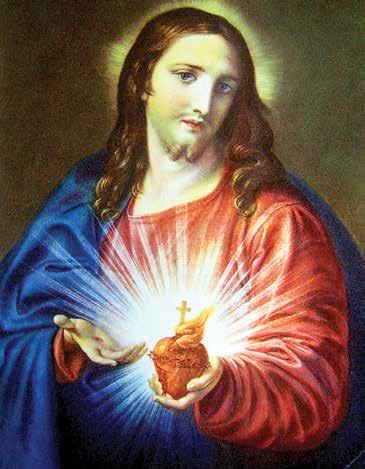
“The present document can help us see that the teaching of the social encyclicals … is not unrelated to our encounter with the love of Jesus Christ,” he wrote. “For it is by drinking of that same love that we become capable of forging bonds of fraternity, of recognizing the dignity of each human being, and of working together to care for our common home.”
Read it online
At www.catholicnewsherald.com : Read the full text of Pope Francis’ encyclical on the Sacred Heart of Jesus
The pope had said in June, the month the Church traditionally dedicates to the Sacred Heart of Jesus, that he was going to release a document in the fall on the devotion to “illuminate the path of ecclesial renewal, but also to say something significant to a world that seems to have lost its heart.”
The encyclical includes numerous reflections from the Bible, previous magisterial texts and the writings of saints and his fellow Jesuits, to re-propose to the whole Church the centuries-old devotion. Since 1899, there have been four papal encyclicals and numerous papal texts dedicated to the Sacred Heart – a symbol of Jesus’ infinite love, which moves the faithful to love one another.
“In the deepest fiber of our being, we were made to love and to be loved,” the pope wrote.
However, he wrote, “when we witness the outbreak of new wars, with the complicity, tolerance or indifference of other countries, or petty power struggles over partisan interests, we may be tempted to conclude that our world is losing its heart.”
“It is heartbreaking,” he wrote, to see elderly women, who should be enjoying their golden years, experiencing the anguish, fear and outrage of war. “To see
these elderly women weep, and not feel that this is something intolerable, is a sign of a world that has grown heartless.”
“The most decisive question we can ask is, ‘Do I have a heart?’” the pope wrote.
The human being is more than an instrument, a material body and a carrier of intelligence and reason, the pope wrote.
The human person also embodies spiritual, emotional, creative and affective dimensions that are often undervalued, neglected or squelched in today’s world, he wrote. It is the heart that integrates all these dimensions that are so often fragmented.
The most precious treasures that animate and dwell in the human heart are often the simple and poignant moments in life: “How we first used a fork to seal the edges of the pies that we helped our mothers or grandmothers to make at home”; “a smile we elicited by telling a joke”; “the worms we collected in a shoebox”; and “a wish we made in plucking a daisy.”
“All these little things, ordinary in themselves yet extraordinary for us, can never be captured by algorithms” and artificial intelligence, he wrote, and, in fact, “poetry and love are necessary to save our humanity,” not just reason and technology.
At a Vatican news conference presenting the encyclical Oct. 24, Archbishop Bruno Forte of Chieti-Vasto, Italy, said the document is a “compendium” and the “key” to understanding Pope Francis’ pontificate.
Some commentators criticize the pope for focusing too narrowly on “social” issues, the archbishop said.
This encyclical explicitly presents the spiritual and theological foundation underlying the pope’s message to the Church and the world for the past 12 years – that everything “springs from Christ and
His love for all humanity.”
Many saints and religious congregations have a special devotion to the Sacred Heart, including St. Ignatius of Loyola and the Society of Jesus, the religious order the saint cofounded and to which Pope Francis belonged.
St. Ignatius’ spiritual exercises encourage people to “enter into the heart of Christ” to “enlarge our own hearts” and train them to “sense and savor” the Gospel message and “converse about it with the Lord,” the pope wrote.
Christ’s heart is aflame with infinite love, and Christ desires to be loved and consoled in return, the pope said, especially by loving and serving one’s neighbors and those who are most marginalized.
Jesus associated with “the lowest ranks of society,” he wrote, introducing the “great novelty of recognizing the dignity of every person, especially those who were considered ‘unworthy.’”
“In union with Christ, amid the ruins we have left in this world by our sins, we are called to build a new civilization of love,” the pope wrote. “That is what it means to make reparation as the heart of Christ would have us do.”
“Amid the devastation wrought by evil, the heart of Christ desires that we cooperate with him in restoring goodness and beauty to our world,” Pope Francis wrote.
The encyclical was published as members of the Synod of Bishops were wrapping up a multiyear process focused on fostering “a synodal Church: communion, participation and mission.”
In his encyclical, the pope emphasized how only a deep and abiding love of Jesus can inspire and fuel Catholics to share the Gospel and God’s love with the world.
Mission requires missionaries who are “enthralled by Christ” and are “impatient when time is wasted discussing secondary questions or concentrating on truths and rules because their greatest concern is to share what they have experienced,” he wrote.
“They want others to perceive the goodness and beauty of the Beloved through their efforts, however inadequate they may be,” he wrote.
Pope Francis invited Catholics to rediscover or strengthen their devotion to the Sacred Heart of Jesus and the practices connected with it, particularly Eucharistic adoration and receiving the Eucharist on the first Friday of each month. (Editor’s note: Read more at right.)
This practice once served to remind the faithful that Communion was not a reward for the perfect, he wrote, but to renew people’s confidence in the “merciful and ever-present love” of Christ in the Eucharist and His invitation “to union with Him.”
Today the First Fridays devotion, he wrote, can help counter “the frenetic pace of today’s world and our obsession with free time, consumption and diversion, cell phones and social media (and) we forget to nourish our lives with the strength of the Eucharist.”
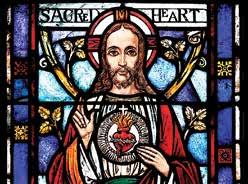
When the beloved disciple reclined his head upon the breast of the Savior (Jn 13:25), he heard the beats of divine charity and felt the heat of God’s love. Among the Twelve Apostles, it was John alone who stood beside the Blessed Mother at the foot of the cross to witness and absorb the pain of Jesus’ Passion (Jn 19:25-27). It was the same John who would later testify, quite simply, that “God is love” (1 Jn 4:8).
John contemplated the mysteries of the Sacred Heart of Jesus. While many after him who loved Christ revered His blessed heart, it wasn’t until 16 centuries later that devotion to the Sacred Heart became a public devotion. That is when the Lord revealed the wonders of His heart to a young and often sickly religious sister. St. Margaret Mary Alacoque (1647-1690) was a nun of the Order of the Visitation of Holy Mary in France. Before Margaret Mary, a devotion to the Sacred Heart developed from an earlier devotion to Christ’s holy wounds. Devotees of the Sacred Heart included such saints as Bernard of Clairvaux (d. 1153), Bonaventure (d. 1274), and Gertrude the Great (d. 1302).
What was different with Margaret Mary is that through three divine revelations, the Lord commissioned her to open this devotion to the entire Church. The third and final revelation to St. Margaret Mary occurred on June 16, 1675, during the Octave of the Feast of the Blessed Sacrament.
Revealing His heart to the saint, Jesus offered these words: “Behold this Heart which has so loved men that it has spared nothing, even to exhausting and consuming itself, in order to testify its love. In return, I receive from the greater part only ingratitude, by their irreverence and sacrilege, and by the coldness and contempt they have for Me in this sacrament of love. … It is for this reason I ask thee that the first Friday after the Octave of the Blessed Sacrament be appropriated to a special feast, to honor My Heart by communicating on that day, and making reparation for the indignity that it has received. And I promise that My Heart shall dilate to pour out abundantly the influences of its love on all that will render it this honor or procure its being rendered.”
From there, the threefold practice of devotion to the Sacred Heart emerged: receiving Communion on the first Friday of the month, keeping a Holy Hour of adoration to watch with Christ, and the institution of the feast of the Sacred Heart. The ultimate end of this devotion is to warm the Church with Christ’s divine love.

The supernatural is real. We all know it. We all know that there are “things visible and invisible,” and we’ve all experienced moments where the veil between the two has thinned and surprised us – through our dreams, our guts or our physical senses – with information we need, consolations that feed or warnings we’re smart to heed.
Like Hamlet, we all know there are “more things in heaven and earth, than are dreamt of” in our philosophies. We all go out in search of connecting with that thing – that force, that power, that energy, that “thing” – that exists beyond our perceived-as-natural world.
How we make that search has a lot to do with our own lived experiences. If we think the supernatural is hogwash, we may land on atheism, agnosticism or humanism. If it’s real but not for us, we might be drawn to the faith-without-vulgar-talk-of-miracles found in mainline Protestantism, or the trace-supernaturalism of Buddhism.
I passionately advocate for acknowledging the profound supernaturalism of the Catholic Church, where bread and wine, consecrated through prayer and ritual, bring into our space the very presence of the incarnate Lord, who feeds us, entering into our
very veins and sinews, so we might become His vessels, bringing the light, the concern, the Body of Christ into the world.
Where grace – all unmerited –sacramentally assists the work of the Holy Spirit in ways material and immaterial.
Where the natural and the supernatural are complementary: the Communion of Saints not only touches time but impacts the world in ways large and small as we call on intercessions of our spiritual ancestors.
Where a thing blessed is a thing made sacred – icons, wedding rings, rosaries, crucifixes.
Even those who claim no faith testify to the unseen but true power of prayer. They do so with every “Oh, God!” Those gasps that rise from our guts betray all our doubt when either joy or horror is before us. They are real, those joys and horrors. They are real, good and evil. How fortunate for us that they are also real, the things visible and invisible, the things natural and supernatural. It is good to get comfortable living with, and talking about, these realities.
ELIZABETH SCALIA is editor-at-large for OSV. Follow her on X (formerly known as Twitter) @theanchoress.
We proclaim Christ to the world around us by our efforts to provide a safe environment for all people, especially the young and the vulnerable.
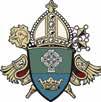
The Catholic Church is absolutely committed to the safety of children. Together we can make a Promise to Protect and a Pledge to Heal.
Suspect sexual abuse or misconduct?
If you have information about possible sexual abuse or misconduct by any clergy, employee or volunteer of the Diocese of Charlotte, report concerns safely, securely and anonymously 24/7 over the phone using the diocese’s new hotline, 1-888-630-5929, or online: www.RedFlagReporting.com/RCDOC
Please note: If you suspect a child is in danger, please contact 9-1-1 or your local law enforcement agency.
Safe Environment training
Every Church worker must go through abuse prevention and education training. Find more information about the Diocese of Charlotte’s Safe Environment program, sign up for Protecting God’s Children training and more: Go to www.charlottediocese.org and click on “Safe Environment”
For more information or questions, please contact the diocese’s Safe Environment Office: www.safeenvironment@rcdoc.org or 704-370-3222

Ayoung man I met recently declared, “I believe in evolution. I’m an atheist.”
Unfortunately, I suspect he is one of many who think that faith in a Creator God is incompatible with the theory of evolution. Because science provides some evidence of evolution, it seems that faith in God must go. But is it a case of either evolution or faith in a Creator God, or can it be both/and?
This “either/or” choice is based on two fundamentalist positions that are pitted against each other. The first is creationism, which holds that God created human beings in their present form less than 10,000 years ago. The opposing theory is that of pure evolution, where natural processes take place without any divine intervention as one life form changes slowly into a higher life form over time. These polarizing views are held by many. In a recent Gallup poll, 37 percent of American adults identify themselves as pure creationists, holding that God created humans less than 10 millennia ago. No doubt this is influenced by many Protestant and Pentecostal churches who interpret the Bible literally. This percentage, although still significant, has decreased since the beginning of the 2000s and reflects the lowest level in four decades. On the other hand, 24 percent of American adults support evolution without divine intervention, a notable increase that has almost tripled since 1999. Significantly, 34 percent of the population accepts both theories, believing that any changes in life forms are under the direction of the Spirit of the Creator.
What this survey reveals is that more than a third believe in some form of evolution that is unfolding under divine providence. This is the position of the Catholic Church and is based on two distinct and clear principles.
The first of these principles asserts that the Bible is not a scientific but a theological document. The creation accounts in the Bible are works of theology, not science – a fact pointed out by Pope Leo XIII as far back as 1893 in his encyclical “Providentissimus Deus.”
Even if the authors of Genesis wanted to write a scientific account of creation, they did not have the tools to do so. Rather, the authors of Genesis were expressing their faith in how creation relates to the Creator – how it originates from its Creator, is independent of the Creator and yet is radically dependent on the Creator. These central truths are stated in the creation accounts in a literary, not scientific way.
The Creation account asserts that the universe was made in six days. The expression of time here is not in the chronological sense of six periods of 24 hours as we understand it today. Early Christian interpreters of the Bible, such as Origen and Augustine, were clear on this. It is crucially important, because a literal interpretation of six days to create the universe is widely ridiculed given evidence that it is at least 13.8 billion years old. The second principle that allows Christians to accept both evolution and faith in a Creator God is stated clearly in another encyclical by Pope Pius XII, “Humani Generis,” published in 1950. This document accepts the evidence of evolution as seen in matter, but since the human soul is immaterial, it could not have arisen from a merely material process. As the giver of life, God infuses the soul or life principle directly into every human being.
Having clarified these two principles, it is important to identify a difficulty with the argument that glibly supplants faith in a Creator God with acceptance of evolution. I think of scientists who are so enthusiastic for the evolutionary process that they suggest it gives rise to creation itself.
According to the late physicist Stephen Hawking, for instance, “Spontaneous creation is the reason there is something rather than nothing, why the universe exists, why we exist.” He concludes: “I think the universe was spontaneously created out of nothing, according to the laws of science.”
When scientists speak about “selfcreation” and “spontaneous creation,” they move beyond the domain of science to make broad claims that apparently don’t need to appeal to a source of all there is.
But this position is impossible to accept. It is like explaining the Big Bang with the laws of physics only to discover that the laws of physics were created with the Big Bang, or trying to explain the existence of gravity without the interaction of objects (such as planets) that gives rise to gravity in the first place. This is ideological indoctrination masquerading as science that is determined not to let a divine foot in the door.
We must acknowledge what science tells us but also look beyond science to explore why there are processes to begin with and who is ultimately responsible for them all. We need both science and faith to answer the questions of how and why things exist.

Think for just a moment about the pace at which digital technology has grown over the past 20 years. Saying “fast” would be a bit of an understatement. Most of the time, the expansion and innovations of the digital culture leave our heads spinning. Now, with generative artificial intelligence, or AI, there’s more digital power in our hands than ever before. What is a person of faith to do before the enormous power of AI and all the other digital technologies we have in our hands? Trust in God and make sure to keep the person at the center for all our digital interactions.
Here are five things to keep in mind as we navigate the digital ocean, trying our best to stay faithful to God’s plan:
1. DON’T BE AFRAID OF NEW TECHNOLOGIES.
St. John Paul II’s last official document, “The Rapid Development,” was all about the media’s growing power in our world. Here’s what he said: “Do not be afraid of new technologies! These rank among the marvelous things which God has placed at our disposal to discover, to use and to make known the truth, also the truth about our dignity and about our destiny as His children, heirs of His eternal Kingdom.” Technology has come a long way since those words were written in January 2005, but their applicability remains true. Do not be afraid of AI, social media or whatever the digital world throws our way. God has placed them at our disposal to use to proclaim His kingdom.
2. HUMAN DIGNITY SHOULD STAY AT THE CENTER.
The Church has already given us a way to make sure that we remain the masters of technology and that it doesn’t master us: Catholic social teaching. If we make a conscious effort to live the seven themes of this teaching as we engage with others through digital means, then making sure the dignity of the person is respected will be the outcome.
Catholic social teaching asks us to keep in mind the rights and responsibilities of all; the dignity of the person; care for the poor; family and community; the dignity and rights of workers; solidarity; and care for God’s creation.
Pope Francis, in his 2024 World Day of Peace message, said, “Fundamental respect for human dignity demands that we refuse to allow the uniqueness of the person to be identified with a set of data. Algorithms must not be allowed to determine how we understand human rights, to set aside the essential human values of compassion, mercy, and forgiveness, or to eliminate the possibility of an individual changing and leaving his or her past behind.”
The February 2020 “Rome Call for AI Ethics,” signed by IBM, Microsoft, the Italian government and many religious leaders, has coined the term “algorethics” and gives principles for ensuring that AI systems remain focused on the common good.
As much as we might think it’s only teenagers who need to lay off their devices, we adults could always use that reminder, too. Modeling good digital behavior is so important, especially for parents. Being digitally authentic means being true to your values as a follower of Jesus, even when choosing and interacting with technology in all its forms.
To practice authenticity and integrity in the digital realm takes effort. We need discipline and balance in our digital lives. If our digital life is out of balance, other relationships will be as well – including our relationship with God. We need to take responsibility for the way in which we use digital technology. Bringing the Holy Spirit into our decisions via prayerful discernment will surely give us a leg up in this regard. And don’t forget silence – necessary to listen to God’s promptings in our lives.
4. IT’S OK TO BE IMPERFECT.
As much as we might love the phrase “nobody’s perfect,” imperfection is something that our society doesn’t tolerate well. How can we influence society to have a better attitude toward imperfection? By embracing our own imperfections and being patient with those of others. After all, if we were perfect, we wouldn’t need Jesus to save us.
In the same World Day of Peace message I quoted from earlier, Pope Francis said, “Human beings are, by definition, mortal; by proposing to overcome every limit through technology, in an obsessive desire to control everything, we risk losing control over ourselves. ... Recognizing and accepting our limits as creatures is an indispensable condition for reaching, or better, welcoming fulfillment as a gift.”
5. CALL ON GOD’S WISDOM.
As we are faced daily with the digital explosion and the consequences of being immersed in a digital culture, we need to acknowledge that we don’t have all the answers. We need the Holy Spirit and the gift of wisdom to ensure the person remains the focus of our digital interactions.
In his 2024 World Communications Day Message, Pope Francis insists people call on God’s wisdom when designing or working with AI and digital technology: “Wisdom, a gift of the Holy Spirit, enables us to look at things with God’s eyes, to see connections, situations, events and to uncover their real meaning. ... Such wisdom cannot be sought from machines. ... No doubt, machines possess a limitlessly greater capacity than human beings for storing and correlating data, but human beings alone are capable of making sense of that data.”
So, next time you feel like tossing out your (or your teen’s) digital devices, make a commitment to keep the person at the center of all your digital interactions, embrace your imperfections, and let St. John Paul II remind you: Do not be afraid.
SISTER HOSEA RUPPRECHT a Daughter of St. Paul, is the associate director of the Pauline Center for Media Studies.

‘Migrants teach us to hope. The determination of those who immigrate can teach us a great deal.’
Pope Francis
From online story: “By seeking better life, migrants teach hope, determination, pope says”

The Catholic News Herald reached the Facebook and Instagram feeds of more than 375,000 people in English and Spanish last month. The most talked about post? Coverage of relief efforts for Hurricane Helene. Join the conversation: www.facebook. com/CatholicNewsHerald
On YouTube in October so far, videos produced by the Catholic News Herald have been viewed more than 12,300 times. The most popular video? “The road to recovery from Helene”
So far this month, 42,000 visitors to www.catholicnewsherald.com have viewed a total of 68,800 pages. The top 10 trending headlines are:
n Helene relief flows in 6,620
n Bishop Martin surveys Helene relief efforts
n Friends search for Arden parishioner who lived ‘humbly and charitably’ 991
n New director named for diocese’s Divine Worship Office............................................................ 984
n Two bishops, one celebration 935
n Focus shifts from recovery to rebuilding lives after Helene 892 n St. Mark responds to growth by launching new capital

The Catholic News Herald welcomes letters from readers. We ask that letters be originals of 250 words or fewer, pertain to recent newspaper content or Catholic issues, and be written from a perspective of Christian charity.
To be considered for publication, each letter must include the name, address and daytime phone number of the writer for purpose of verification. Letters may be condensed due to space limitations and edited for clarity, style and factual accuracy.



The Catholic News Herald does not publish poetry, form letters or petitions. Items submitted to The Catholic News Herald become the property of the newspaper and are subject to reuse, in whole or in part, in print, electronic formats and archives.
E-mail: catholicnews@rcdoc.org
Mail: Letters to the Editor Catholic News Herald
1123 S. Church St. Charlotte, N.C. 28203








END-OF-LIFE & FUNERAL PLANNING
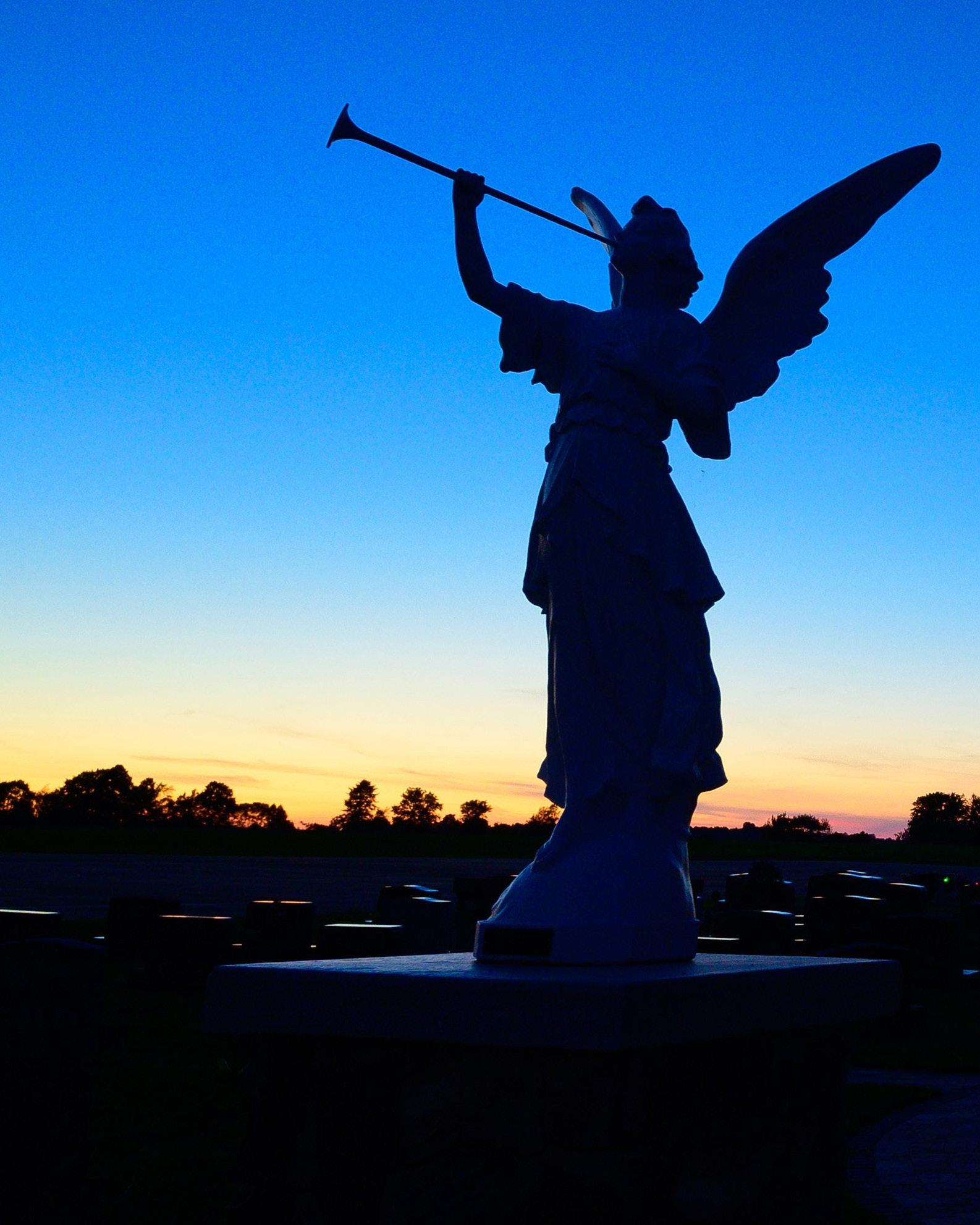
INSIDE: Planning
Local Catholic cemeteries and columbaria
Why do we pray for the dead?
Guidance on end-of-life health care
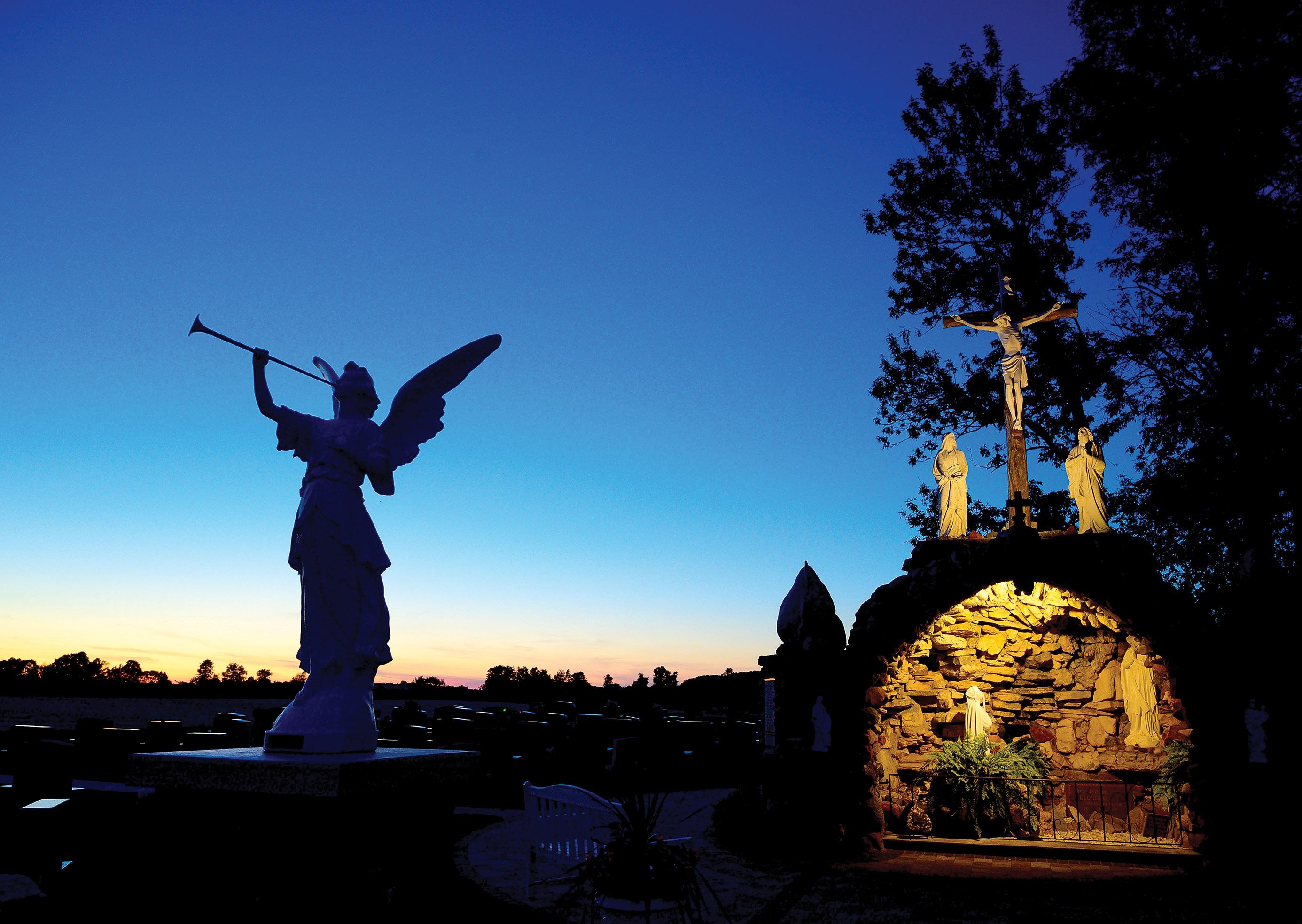
DAVID WERNING OSV News
Atthe end of our earthly lives, our faith tells us there will be four last things: death, judgment, hell and heaven. Reflecting on such topics in November is appropriate.
Clearly, bringing Jesus’ saving acts to bear upon the four last things makes all the difference. Without faith, death can be seen in a merely utilitarian way. Rather than being an experience that one “lives,” including reflecting on it and preparing for it, death becomes something to be forestalled at all costs.
The Christian, by contrast, sees the four last things as parts of a very real and profoundly meaningful life with God that extends beyond the grave. Indeed, life cannot be understood fully without acknowledging all four. Each of them reflects God’s love and mercy and justice in its own way.
Given the promises of Jesus – that He would, once and for all, destroy the power of death and open the gates of heaven – every Christian should develop a healthy appreciation of the last things.
Among the four last things, death is seen by both believers and nonbelievers as the end of the physical existence human beings enjoy on this earth, but that’s where the agreement ends. A faithless view stops at the grave. The Catholic Church, on the other hand, sees death
within the context of God’s revelation.
Based on Scripture and tradition, and ultimately on Jesus’ witness, the Church recognizes death as the just punishment for the freely chosen sins of human beings. God desired sons and daughters who would choose freely to love each other and their Creator.
Human beings, however, instead invited death into the world by committing the original sin: rejecting the world as God created it and asserting themselves as equals to God. Hence the separation from God and the loss of mortal life.
‘Understood in the light of Jesus, death takes on a new meaning.’
God responds by honoring the relationship with human beings, even though they did not. In a word, God’s response is Jesus. Jesus has saved the world through His life, death and resurrection. Human beings now can accept salvation, to turn back to God by receiving His forgiveness and yielding to His will and, after dying themselves, to enter eternal life.
Understood in the light of Jesus, death takes on a new meaning. It no longer has power over a person who abides in Jesus. Therefore, death can be greeted with serenity when it comes. Passing from this life to the next is simply moving from one way of living in Jesus to another. The meaning is this: For one who remains faithful to Jesus, life is changed, not ended, at death.
The Church’s teaching on death can have both a comforting and sobering effect. It is comforting to know that life continues, but the fact that one’s time on this earth is limited should bring a weightiness to one’s decisions.
The basic meaning of the Church’s teaching about judgment is that the choices one makes have value. God determines the value of one’s choices and metes out the appropriate reward or punishment. This teaching tends to evoke two dominant feelings: fear and satisfaction. Fear is not a bad feeling to have if one is living a sinful life; it might even prompt one toward conversion. Fear, in the sense of awe, is appropriate, too, for God can judge everyone and every act in perfect justice and mercy. Only God knows the depths of each person’s heart; only He knows the advantages and disadvantages a person had; only He knows the full circumstances of every person’s life and every situation. God knows the full truth and will judge accordingly.
Satisfaction is the other common feeling many people have regarding God’s judgment, which is good if by “satisfaction” one means a sense of contentment concerning God’s ultimate victory over all evil.
After a person has been judged, he or she will spend eternity in one of two states: hell or heaven. (Many people
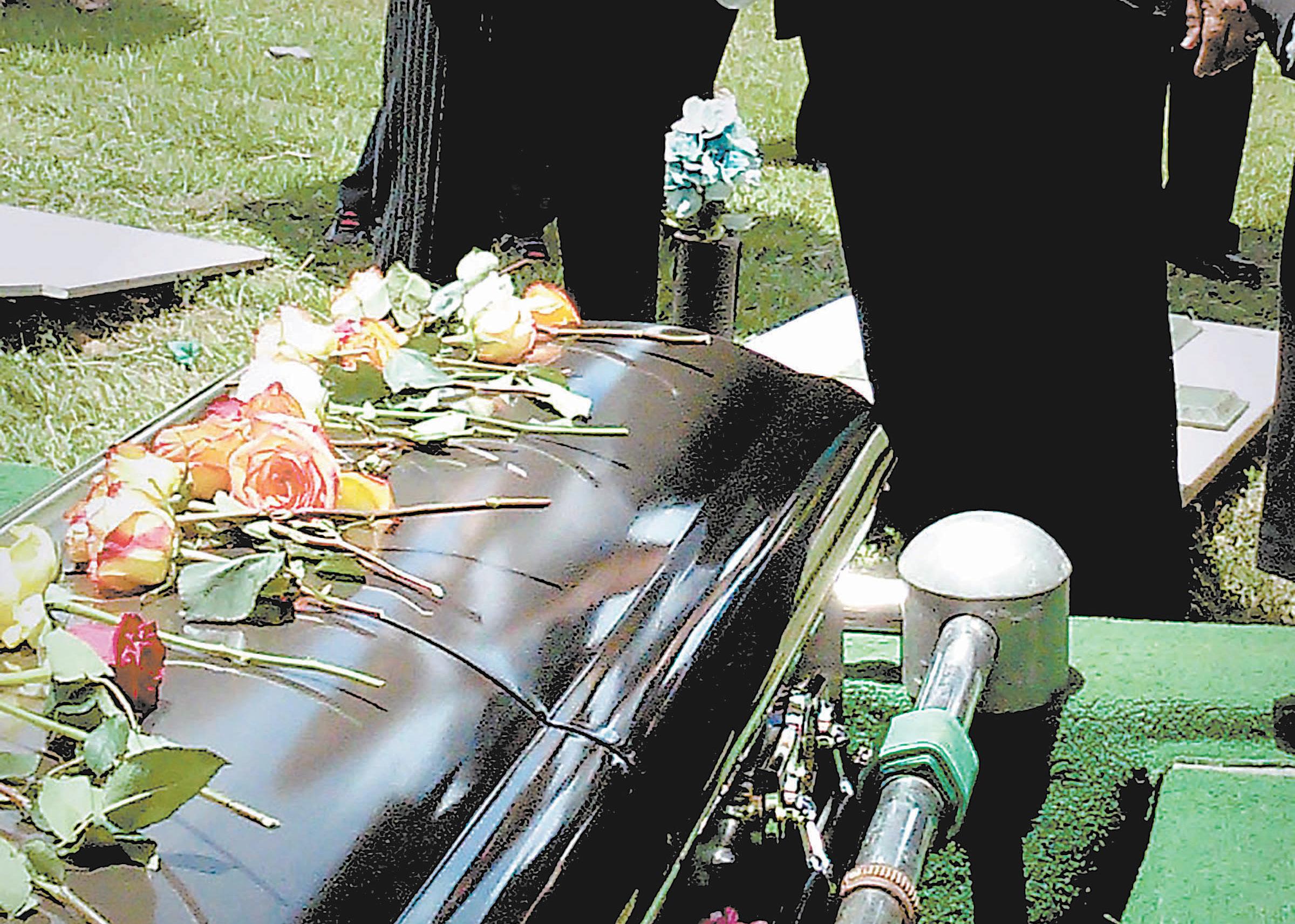
FATHER MICHAEL CUMMINS Word on Fire Institute
The life of a parish priest affords a unique vantage point – not just on developments within the Church, but also on movements in society. It is quite amazing what you can pick up on as a priest as you make your rounds of home visits, pastoral calls, work with the poor and being present in moments of grief. If you listen carefully, you can discern quite a bit about the state of our world and society.
Some of these movements are hope-filled while others, sadly, are troubling. A trend I find troubling is a cheapening (for lack of a better word) of the funeral experience and ritual. I believe this cheapening testifies to a growing impoverishment of the human spirit. There are some understandable factors as to why Catholic funerals are falling out of favor: the cost of funerals and the commercialization of the funeral industry, our society’s unease with death, the reality of families being spread out and therefore not in as much contact and conversation, the increasing use of cremation, the growing number of non-Catholic spouses or other family members who are not familiar with Catholic rituals and customs. These are honest realities that should be acknowledged.
Yet there are other choices made regarding funerals that I do believe are unnecessary and, in fact, diminish the
meaningfulness and benefits of a funeral and prayers for the deceased in a family’s grieving process. Some people choose to forego all things “Catholic” for a funeral because they are not Catholic or have left the Church, even though the deceased was Catholic and was sincere in practicing his or her faith. In a similar vein, some choose not to have a funeral Mass or do anything at the parish church but rather have a service just at the funeral home or graveside in order to simplify things for everyone, and sometimes even to skirt around the possibility of offending someone who may be out of sorts with the Church. Some choose to forego a Catholic funeral in favor of more contemporary approaches often offered through the funeral business. In our consumer mentality, we sometimes only attach value to something if we have to spend money on it and if it seems flashy.
important opportunity to be nourished by the beauty and hope found in the Catholic funeral celebration. The Catholic funeral Mass – and all of the Church’s beautiful rituals surrounding the end of life – speak to us on many levels about the purpose of one’s life, God’s plan of salvation and the hope of eternal life, and how to handle the inevitability of grief and loss in our lives.
‘The Catholic funeral, in its depth of ritual and meaning, reminds us that the grave has been overcome not by our wishing it so, but by the death and resurrection of Christ our Lord.’
As a priest, I am particularly saddened when it is apparent that the deceased loved ones and family did not choose a Catholic funeral simply because they are no longer Catholic or they want to make things easier for themselves. This does happen – more and more so.
I am saddened both for the departed who, in life, found great comfort in his or her Catholic faith, and I am saddened for those left in their grief. I know they are missing an
If there is a word that I think of in relation to the Catholic funeral, it is “commend.” In the Catholic funeral – from wake to funeral Mass to graveside committal – we commend our loved one into the mercy of God and we also commend ourselves, praying for God’s comfort and peace in a time of loss. From the choices of readings and hymns to the rubrics for each aspect of the liturgical service, the Church offers insights and guidance on what is appropriate to perform this ritual that commends the loved one to God’s mercy. This structure of the ritual is not meant to deny or diminish the loved one or her or his life in any way.
A “celebration of life” (a popular expression these days) is all well and good, but such a celebration ends at the grave and can go no further. The Catholic funeral, however, in its depth of meaning and symbolism, reminds us that the grave has
think of “hell” and “heaven” as places, but they are more accurately denoted vis-à-vis the relationship with God.) Hell is defined by the Church as the “state of definitive self-exclusion from communion with God and the blessed” (CCC 1033). God’s judgment in such a case would be to allow the person’s choice to take effect, as the Catechism relates: “God predestines no one to go to hell; for this, a willful turning away from God (a mortal sin) is necessary, and persistence in it until the end” (CCC 1037).
The very mention of “hell” can cause some people to cry “unfair.” How could a loving and merciful God allow anyone to suffer eternal damnation? Other people even ignore hell and maintain that Jesus, who loves everyone, will also save everyone.
To understand the terrible mystery of hell, the Church directs people to the mystery of freedom, which is a gift human beings have from God. It is a gift that enables the person “to initiate and control his own actions” (CCC 1730). But freedom also means that the person is responsible for his or her choices. Ultimately, saying no to hell means saying yes to God. Again, God does not want robots that are forced to love Him, but true sons and daughters who choose to love Him and their brothers and sisters in freedom.
Nevertheless, if they have the freedom to love, then they also must have the freedom not to love. The latter choice leads to hell.
The alternative to hell is heaven, and whereas hell is the state of eternal separation from God, heaven is its opposite: “This perfect life with the Most Holy Trinity – this communion of life and love with the Trinity, with the Virgin Mary, the angels and all the blessed – is called ‘heaven.’ Heaven is the ultimate end and fulfillment of the deepest longings, the state of supreme, definitive happiness” (CCC 1024).
And just as a person gets to hell by how he or she lives on earth, so it is with heaven. The crucial difference is that the person who chooses heaven uses his or her freedom to make every effort at yielding to and accepting God’s grace. Another difference is that a person can get to hell by oneself, but getting to heaven involves the whole body of Christ, head and members, as St. Paul reminded the Corinthians: “encourage one another and build one another up” (1 Thes 5:11).
The essence of heaven is the relationship that human beings enjoy with the Holy Trinity. The choice is before each human person: to love as Christ loves, faithful to the Father, united in the Spirit, and working for the salvation of all. If a person joins this work now, he or she will experience its perfection in heaven.
The four last things properly understood in the context of Jesus’ life, death and resurrection need not be so ominous. For example, the story is told about St. Bonaventure eating a meal with his fellow friars. One of them asks Bonaventure what he would do if Jesus were to initiate the Last Judgment at that very moment. And Bonaventure answers, “I’d finish eating my soup.” It captures well the peace, even in the face of death and judgment, of one who abides in Jesus.
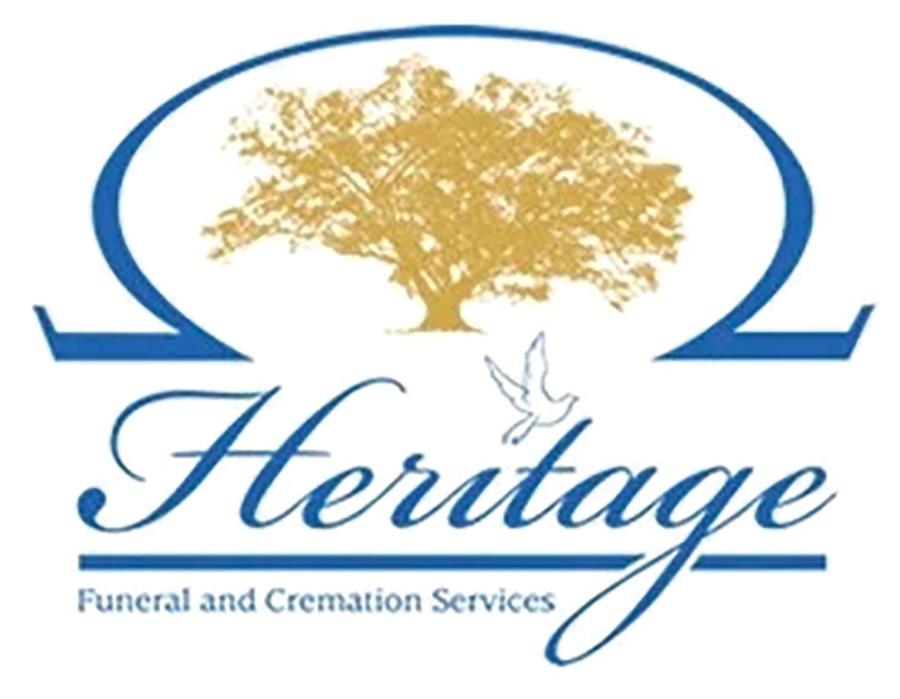
been overcome not by our wishing it so, but by the death and resurrection of Christ our Lord. The Catholic funeral reminds us and brings us into this greater and more important context because only the resurrection of Christ conquers the tomb, only the resurrection of Christ says death is not the final word, only the resurrection of Christ gives the true hope that comforts and heals us in our sorrows.
No person likes to think about death, but I encourage people to at least reflect on the beauty and meaning of the Catholic funeral and let your loved ones know your desires and wishes. Many parish offices can even help people plan out how they wish their funeral to be celebrated, and this information can be kept on file. In the end, the Church has no legal way to compel people to celebrate a loved one’s funeral in a particular way, even if there is information is on file at the parish office, but making one’s desires known and even keeping it on file at the church can be of valuable assistance during what is an emotional, very difficult time.
And it is important. A funeral should respect who a person is, and a person’s faith tradition is an essential component of who we are and the hope we have as Christians.
Beyond the funeral Mass, our Catholic faith has a wonderful tradition of having Masses offered for our dearly departed. This tradition is rooted in our firm belief in the Resurrection. In the Resurrection of Christ, death has been overcome – and just as we pray for one another while here on Earth, so too we can assist our loved ones who have
died with our prayers, and they can also pray for us. The Mass offered for a deceased loved one is a way that the Church gathered offers prayers for a loved one as he or she is brought into the beatific vision – full life with God. Yes, we can pray for our deceased loved ones, and it is important to do so. Scripture often testifies to the power of the prayers of the gathered community. If you wish to have a Mass offered for a loved one, contact your parish office. It is a holy thing to do and a spiritual act of mercy.
So, why is a Catholic funeral important?
The Catholic funeral is at the heart of who we are as Church – a people gathered, saved and redeemed by Christ our risen Lord. It is a witness to a secular world that there is a greater context to both life and death, given our relationship with God as our Father and Creator. A Catholic funeral speaks to the hearts of the people gathered and might even convert hearts that might be hurting or searching.
With His death and resurrection, Christ has conquered the tomb. Thanks to the gift of His Church and its poignant funeral rituals, we can put death in its proper perspective and gain a deeper understanding of our life’s ultimate purpose and the hope of eternal life with our Creator.

FATHER MICHAEL CUMMINS is a priest of the Diocese of Knoxville, Tenn. Ordained in 1995, he serves as pastor of St. Dominic Church in Kingsport, Tenn. He holds a Masters of Divinity and Licentiate in Sacred Theology from the University of St. Mary of the Lake (Mundelein Seminary) in Chicago. He has a deep interest in Christian anthropology and the interaction between faith and culture. This article originally appeared on Word on Fire, online at www.wordonfire.org.
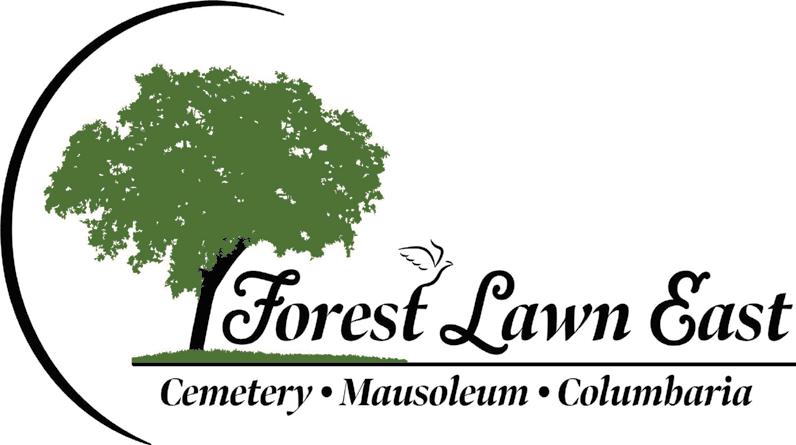
LORENE HANLEY DUQUIN OSV News
Some people know instinctively how to help a grieving person. But for most of us, dealing with someone else’s grief is a little more uncomfortable. We might be at a loss for words. We might be uncertain about what to do. We might not know how to respond to the raw emotions a grieving person exudes.
Our greatest temptation might be to avoid the person or ignore the situation. But that is the worst thing we can do.
The word “bereavement” means “to be torn apart.” It describes the deep emotional wound caused by the death of a loved one. Grief is not an illness or a disease. It is a normal human reaction to the painful void that death creates. Grief is the process by which healing takes place.
Each person experiences grief differently, but most people find themselves struggling through five key areas: accepting the reality of the death, feeling the pain of loss, adjusting to life without the person, repositioning the person as a memory and finding new meaning in life.
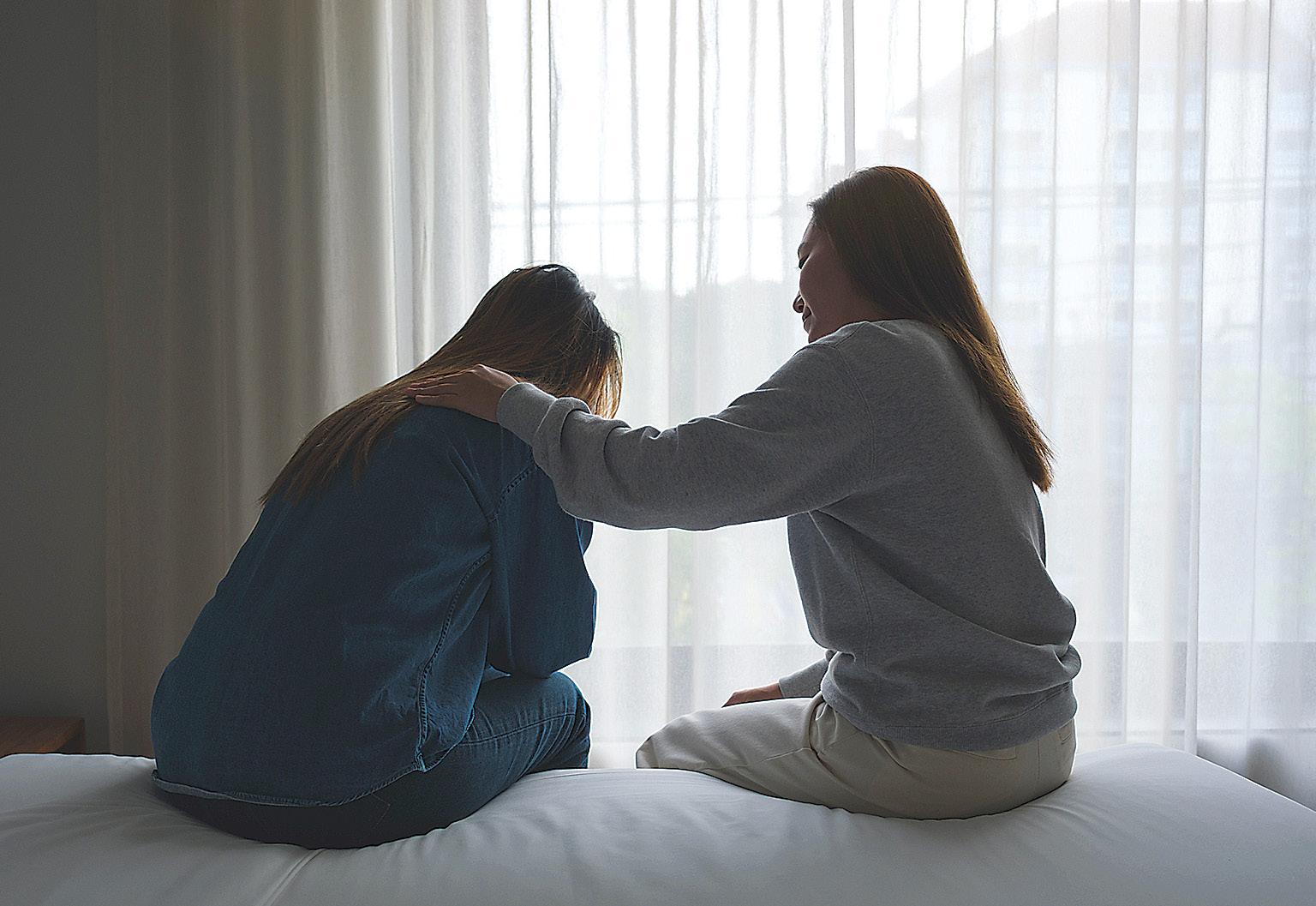
photos for the wake; or designing a program for the funeral Mass.
There is no magic formula for dealing with a grieving person. The best way to reach out to someone will depend on your relationship with that person and where he or she is in the grieving process. If you don’t have a close relationship with the person grieving, you still might be the first person they have seen since the news of their loss.
If the death just occurred, let the person know that you are saddened to hear the news. Expressions of genuine sympathy offer the assurance that someone else cares. You will know instantly whether the grieving person wants to share the details of what happened.
Most people in the early stages of grief struggle with shock and disbelief. Telling the story of what happened allows them to come to grips with the reality of the death. You can help by listening. A good listener doesn’t interrupt or try to change the way the person is feeling. A good listener just listens.
When grieving people begin to share their story, they sometimes get emotional. Assure the person that it’s OK to cry or to express anger or frustration.
Don’t say: “I know how you feel,” “You’ve got to be strong.” “It’s a blessing in disguise.” “God never gives us more than we can handle.”
Instead, say: “I can’t imagine how painful this must be.” “It’s okay to cry.” “What I’m hearing you say is.” “Anytime you want to talk.” Immediately after a death, grieving people are often in a state of shock. They may be uncertain of what needs to be done. You can ask if they need help: Making phone calls to let family members and friends know what happened; shopping for food or supplies; preparing food; caring for children or pets; picking up family members from the airport; helping with arrangements for the wake, funeral or burial; creating memory boards with
A wake allows people to pay their last respects to the deceased and to comfort the bereaved. You can help by sharing your own memories and ways that person impacted your life. These kinds of stories add to the memory bank of grieving family members.
You can also be present for prayers at the wake service or for the recitation of the rosary or Divine Mercy Chaplet. Keep the grieving family members in your prayers.
If you are unable to attend the wake, sending a sympathy card or a Mass card with a heartfelt note can be a real consolation for the family. Some funeral homes also invite online messages.
A grieving person will also appreciate your presence at the funeral. Catholic funerals allow us to give the person to God with renewed hope in the resurrection of the body and eternal life. You can also help by serving as a greeter and distributing funeral programs, taking part in an honor guard, or helping with the liturgy as an altar server, reader or Eucharistic minister. Some parishes offer a funeral meal after the burial. Or you can assist at a family reception by bringing food, helping with set up and clean up, and just being available for any need that arises.
The grieving need a good friend long after the funeral. Within a few weeks, visits, cards, meals and other special attention come to an end. Grieving people often feel alone and afraid. They may experience insomnia, fatigue, headaches and other physical symptoms of grief. They may suffer from mood swings, restlessness, forgetfulness and the inability to concentrate.
What most people do not realize is that the most difficult time for a grieving person is between the fourth and the ninth month after the death. Holidays and anniversaries can be particularly painful. As special days approach, memories of past holidays surface and feelings of loss intensify.
Your presence throughout the year after the death can make a profound difference
disappointments and difficulties, they expect that you will not tell anyone else what they said.
The simple rule of thumb is: Don’t share what anyone has told you unless you have the person’s explicit permission. The only exception is if you suspect that the person needs outside intervention. For example, you might feel the need to seek help for someone if there are signs of excessive weight loss, neglecting basic self-care, the use of drugs or alcohol, or suicidal thoughts. These may be indications of clinical depression.
Grief has no timetable. People grieve at different intensities for different lengths of time. You will know that someone is nearing the end of their bereavement when they show signs that they are adjusting to their new life: They begin to laugh again, they express gratitude, their energy increases, they show interest in doing things, their memories become comforting instead of painful, and they feel a sense of hope for the future.
Until then, remember: A good listener just listens.
Steve Kuzma & Zachary Boan Funeral Service Licensees
Pina
‘At the death of a Christian, whose life of faith was begun in the waters of baptism and strengthened at the Eucharistic table, the Church intercedes on behalf of the deceased because of its confident belief that death is not the end, nor does it break the bonds forged in life.’
Order of Christian Funerals, no.
4
More online

At www.usccb.org/ prayer-and-worship/ sacraments-andsacramentals/ bereavement-andfunerals Get more information on Catholic funeral guidelines, prayers, suggested readings at funeral Masses, and more

At www. catholicsensibility. wordpress.com/ funeral-rites : Read the entire Order of Christian Funerals as well as explanations of each section
Editor’s note: St. Mark Church in Huntersville has produced this guide to funeral planning that is applicable for Catholics. While each pastor sets his own guidelines within the Church’s “Order of Christian Funerals,” we offer this guide as a reference for your family to consider and discuss:
Upon the death of a loved one, please contact the funeral home so that they may assist you in making the necessary funeral arrangements. We encourage parishioners to do pre-planning to make a difficult time easier for your family. Funeral home services are very willing to help you in this process.
Normally, the funeral home will contact the parish to secure the date and time of the funeral. At St. Mark we will do everything we can to accommodate family needs, but please know that as a busy parish the church may be in use for other events during the time period first chosen.
Once the date and time have been decided, the family will be contacted by one of the parish priests or deacons to plan the Mass of Christian Burial and other funeral rites. This involves choosing readings, hymnody and discussing how family and friends might be involved in the funeral liturgy. While there is always an element of the funeral rites that are personalized to reflect the life of the deceased, it should always be remembered that Christians celebrate the funeral rites to offer worship, praise and thanksgiving to God for the gift of a life which has now been returned to God, the author of life and the hope of the just. The Mass, the memorial of Christ’s death and resurrection, is the principal celebration of the Christian funeral (“Order of Christian Funerals,” no. 5).
Catholic funeral rites consist of three principal parts or movements: the vigil or wake, the Mass of Christian Burial, and the burial rites. Each of these is discussed briefly here:
The Vigil for the Deceased is the principal rite celebrated by the Christian community in the time after death and before the funeral liturgy. “At the vigil the Christian community keeps watch with the family in prayer to the God of mercy and finds strength in Christ’s presence,” “Order of Christian Funerals,” no. 56.)
The Vigil can be celebrated at the funeral home, the home of the deceased or at the parish church. During the course of the Vigil service, there will be a brief proclamation of the Word of God, intercessory prayer, and blessing. If someone in the family would like to offer a personal remembrance of the deceased (eulogy) this may be done at the conclusion of the Vigil service.
The funeral liturgy is the central celebration of the Christian community for the deceased. At the funeral liturgy the community gathers with the family and friends of the deceased to give praise and thanks to God for Christ’s victory over sin and death, to commend the deceased to God’s tender mercy and compassion, and to seek strength in the proclamation of the Paschal Mystery. Through the Holy Spirit the community is joined together in faith as one Body in Christ to reaffirm in sign and symbol, word and gesture
that each believer through baptism shares in Christ’s death and resurrection and can look for the day when all the elect will be raised up and united in the kingdom of light and peace (“Order of Christian Funerals,” no. 129).
The funeral Mass includes the reception of the body, the celebration of the Liturgy of the Word, the Liturgy of the Eucharist, and final commendation and farewell.
The rite of reception takes place at the beginning of the funeral liturgy or Mass.
the funeral Mass, those who read, since they are exercising a ministry of the Church, are to be practicing members of the Catholic Church.
At the funeral Mass, the community having been nourished by the Word of God, turns for spiritual nourishment to the Eucharistic sacrifice in which the community with the priest offers to the Father the sacrifice of the New Covenant. The Liturgy of the Eucharist takes place in the usual manner. Members of the family or friends of the deceased should bring the gifts to the altar.
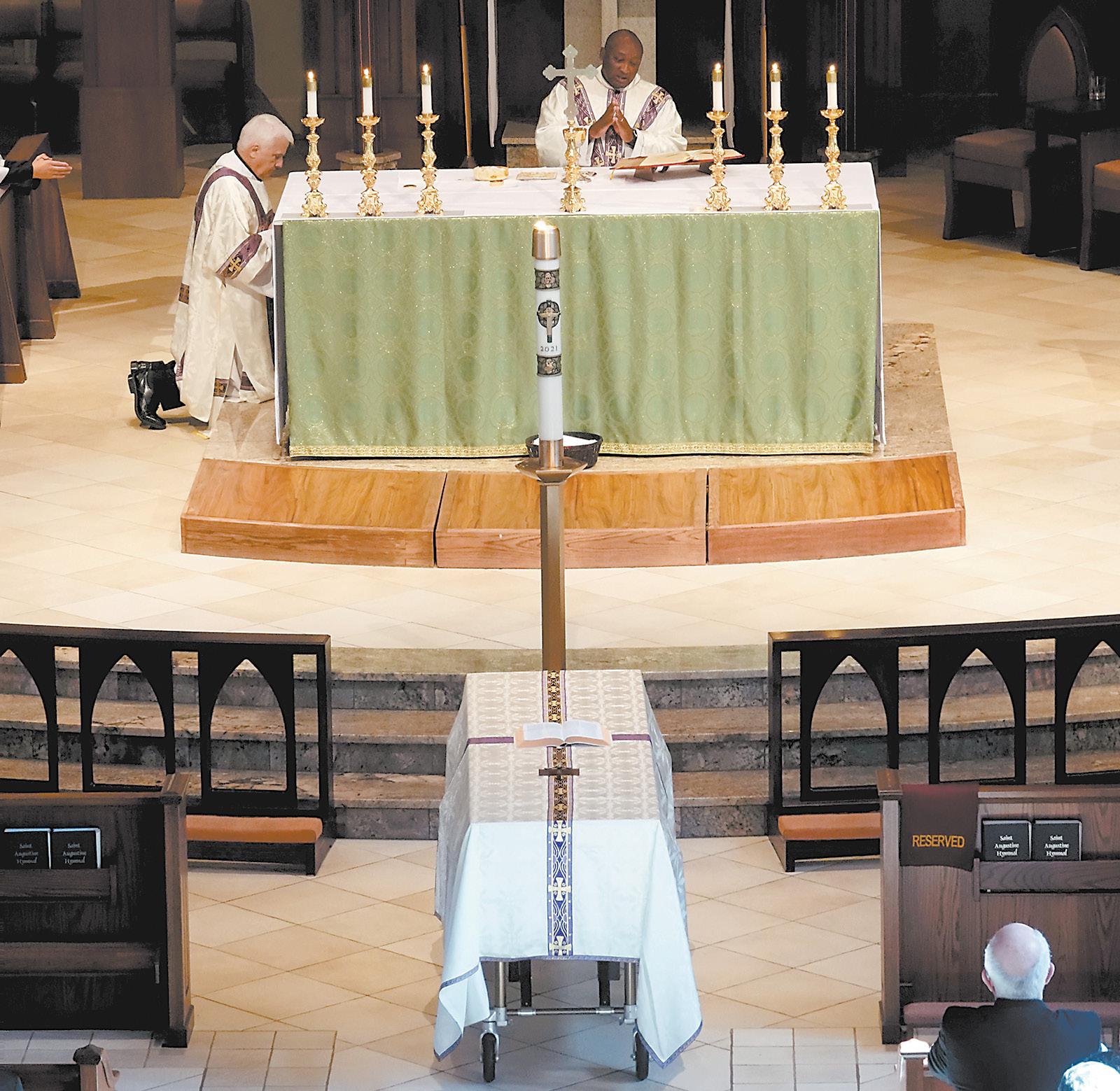
It begins with the greeting of the family, the sprinkling of the coffin with holy water as a reminder of baptism, and the placing of the pall which symbolizes the baptismal garment. If the family so chooses, they may drape the pall over the coffin of the deceased. The entrance procession follows with the ministers leading the coffin and family members into the church.
During the procession an entrance hymn will be sung. The family remains standing with the remainder of the congregation in the pews until the conclusion of the opening prayer. It is our practice at St. Mark to place a crucifix and Bible on the coffin at the conclusion of the entrance procession. These symbols of Christian life are carried in the entrance procession and can be placed on the coffin by family members if the family chooses to do so. Otherwise, they will be placed by one of the ministers.
After the opening prayer, the Liturgy of the Word begins. The readings include an Old Testament reading (during the Easter season the first reading is taken from the Acts of the Apostles or the Book of Revelation), a Responsorial Psalm (sung), a New Testament reading and a Gospel reading.
The Order of Christian Funerals provides a complete listing of the Scripture readings that can be used in the funeral rites, and the family is encouraged to assist in making the selections of readings for the funeral. In addition, members of the family or friends of the deceased are invited to assist by serving as readers. During
During a Mass of Christian Burial, a pall is draped over the coffin of the deceased to symbolize the baptismal garment, and a crucifix and a Bible – symbols of Christian life –are placed on top. Before the final commendation, the deceased is sprinkled with holy water and incensed. The sprinkling is a reminder that through baptism the person was marked for eternal life and incensation signifies respect for the body as the temple of the Holy Spirit.
The final commendation is a final farewell by the members of the community, an act of respect for one of their members, whom they entrust to the tender and merciful embrace of God. During the rite, the body is again sprinkled with holy water and incensed. The sprinkling is a reminder that through baptism the person was marked for eternal life and incensation signifies respect for the body as the temple of the Holy Spirit.
At the conclusion of the funeral liturgy, the procession is formed and the body is accompanied to the place of committal. This final procession of the funeral rite mirrors the journey of human life as a pilgrimage to God’s kingdom of peace and light, the new and eternal Jerusalem.
The rite of committal, the conclusion of the funeral rites, is the final act of the community of faith in caring for the body of its deceased member. In committing the body to its resting place, the community expresses its hope that, with all who have gone before marked with the sign of faith, the deceased awaits the glory of the resurrection. It normally takes place beside the grave or mausoleum where the remains of the deceased are to be placed.
— “Funeral Planning Guide for the Mass of
Church law stipulates that funeral services are a right, not a privilege, of all members of the Church, both the faithful and the catechumens (Canons 1176; 1183, §1). The Order of Christian Funerals also provides for the celebration of funeral rites for children whose parents intended them to be baptized (Canon 1183, §2).
“Christians celebrate the funeral rites to offer worship, praise, and thanksgiving to God for the gift of a life which has now been returned to God, the author of life and the hope of the just. The Mass, the memorial of Christ’s death and resurrection, is the principal celebration of the Christian funeral.” (“Order of Christian Funerals,” no. 5)
“At the funeral liturgy the community gathers with the family and friends of the deceased …
– to give praise and thanks to God for Christ’s victory over sin and death, – to commend the deceased to God’s tender mercy and compassion, – and to seek strength in the proclamation of the paschal mystery. Through the Holy Spirit the community is joined together in faith as one Body in Christ to reaffirm in sign and symbol, word and gesture that each believer through baptism shares in Christ’s death and resurrection and can look to the day when all the elect will be raised up and united in the kingdom of light and peace.” (“Order of Christian Funerals,” no. 129)
It is an unfortunate reality that many baptized Catholics no longer practice their faith and may consider themselves to have been away from the Church for too long to be ever welcomed again by the Church. Such individuals or their families may feel uncomfortable in a church and ultimately decide against having a Catholic funeral. By our baptism, however, we have been made equal in dignity before the Lord, and the Church, our Mother, bears the suffering of all those who became her sons and daughters through baptism. Thus, the Church offers funeral rites (including a funeral Mass) even for nonpracticing Catholics and, under certain circumstances, for non-Catholic Christians.
Although the deceased may not have participated fully in the life of the Church on earth, the Church longs for her separated children to share in Christ’s blessings. She desires to pray for them and with their loved ones so that their sins may be forgiven and they may dwell forever in the presence of God in heaven.
— “Catholic Funeral Planning Guide,” Diocese of Portland, Maine; Canon 1183, §3
Depending on the possibility of your collecting the remains, the baby should be named and buried. If you are in a hospital, the remains of the baby will be sent to the pathologist. You should request that you receive the remains. Most hospitals have little caskets which they offer you. If the baby is more developed you may need to obtain a larger casket from a funeral director. You should ask your pastor for a Mass of Christian Burial and bury the baby appropriately and in a marked grave.
— “Catholic Funeral Guide,” St. Michael Church in Gastonia
‘As you consider the funeral, try to remember that planning a funeral is not a burden, but a privilege. Think of the funeral as a gift to the person who died as well as his friends and family. It is a chance for all to think about and express the value of the life that was lived. It is also a chance to say goodbye.’ “Preparing for Funeral Liturgies,” St. Matthew Church in Charlotte

‘Now and at the
A mourner has some quiet time at the grave of a
We prepare for eternal life by choosing to love and follow God now, in our daily lives and decisions. For example, through prayer and regular reception of the sacraments, especially confession and the Eucharist, we obtain grace to live in ever-deeper communion with God and with one another in lives of faith, charity and justice. We ask for Our Blessed Mother’s help now, and we entrust ourselves to her further as we “surrender ‘the hour of our death’ wholly to her care.” (Catechism of the Catholic Church, 2677) — USCCB
n Save and/or purchase insurance to properly provide for a casket, funeral services and burial.
n Remember that the Church desires the full body to be present for the Mass of Christian Burial and for the body to be buried in a cemetery.
n Leave instructions that someone will call the priest when death seems close.
n Ensure that someone will call the priest for the last rites (confession, anointing and Communion) before death.
n Ensure that someone will call the priest when death occurs.
n The Prayers for the Dead are to be prayed. (Editor’s note: See pages 12-13B for more info.)
n The body is prepared for burial by the funeral directors.
n Arrange for someone to meet with the funeral director to begin preparing for the funeral rites.
How should I prepare for a good
n Live a Catholic sacramental life.
n Develop a Catholic understanding of life and death.
n Pray to St. Joseph, patron of a happy death.
n Develop an understanding of the Catholic funeral rites.
n Prepare with a good confession, the anointing of the
sick, and Communion as “Viaticum.” Make sure someone calls the priest. If you are going to have surgery which requires general anesthetic, ask the priest to hear your confession and administer the sacrament of the sick before you go to the hospital.
n If you are going to be in the hospital or any nursing care facility, be sure to list the parish priest, deacon and others from the parish whom you wish to visit; otherwise, they will not be able.
n Make advanced plans with your parish priest for the funeral rites; read the policies of your parish for funerals.
n Save for the expenses of a proper Catholic funeral; most people have insurance policies for this.
n Talk with family members and your attorney. Be sure your legal documents give a Catholic understanding of caring for the sick and dying. Be sure your will provides for food and water to be given until you cannot assimilate it as a part of ordinary care when appropriate. Appropriate ordinary means of life support should also be given where there is hope of cure. Think of appointing a Health Care Power of Attorney with your instructions to be followed. (Editor’s note: See pages 14-17B for more info.)
n Make provisions for your funeral in your will; remember that your requests must be in agreement with your parish priest and the Church.
n Contact a funeral home to make pre-arrangements.
n Purchase a burial site.

What a blessed death to see God before you die and for God Himself to tell you to go. This was Joseph’s gift from his Son, who would hand His father over to His Father. Thus has Christ entrusted Joseph to have particular intercessory power for all those at the moment of death.
More online

— “Catholic Funeral Guide,” St. Michael Church in Gastonia
At www.yearofstjoseph.org : Learn more about St. Joseph’s virtues and titles, find intercessory prayers to St. Joseph, and more educational resources from the Diocese of Charlotte’s Year of St. Joseph
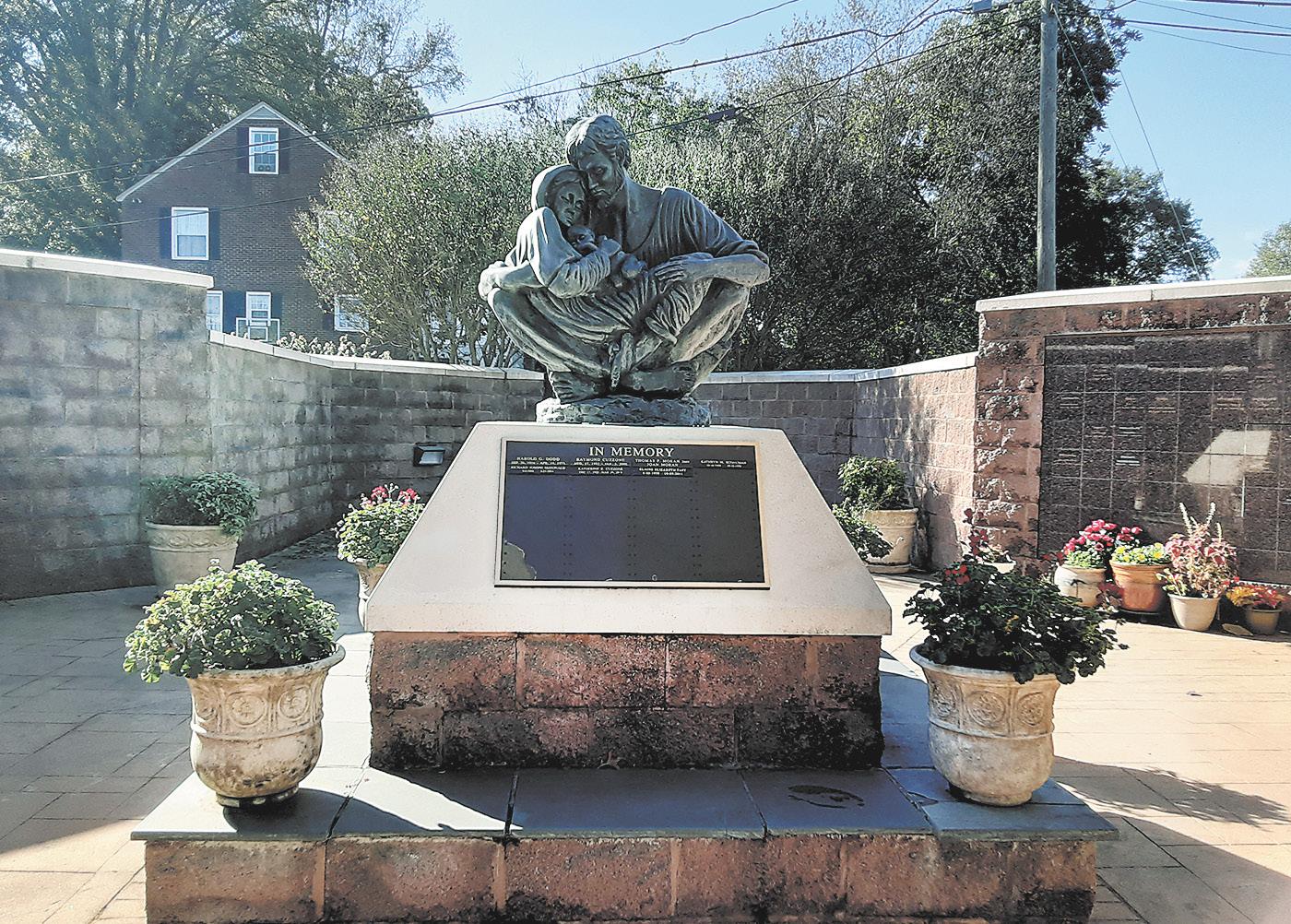
In general in the United States, burial options include: in-ground burial with monument graves, flush marker graves, lawn crypts or family estate lots; above-ground burial in mausoleums; and cremation with interment in mausoleum niches, columbaria, or in-ground in cremation graves or lawn crypts.
Church law (Canon 1240) stipulates, “Where possible, the Church is to have its own cemeteries or at least areas in civil cemeteries that are designated for the deceased members of the faithful and properly blessed.”
Because of limited space at many parishes across the diocese, a cemetery on parish grounds is not always practicable. Identifiably Catholic sections in public cemeteries have become an alternative option, as well as columbaria on parish grounds. But columbaria for cremated remains cannot be the only option provided.
Diocesan policy states: “If a parish wishes to make a columbarium available to the faithful, it will also make available at the same location as the columbarium, spaces for burial of the bodies of the deceased. The number of spaces available for placing cremated remains in a columbarium shall not be more than the number of spaces available for burial of bodies of the deceased. The expectation is that more spaces will be available for burial of the bodies of the deceased than spaces in a columbarium for the placing of cremated remains, since burial of the body is the norm of Christian burial.”
At www.catholicnewsherald.com : Read the Diocese of Charlotte’s policy on cemeteries and columbaria
Every Catholic cemetery features a crucifix as a reminder of Christ’s victory over death and the promise of our own resurrection. Pictured is Sacred Heart Parish cemetery in Salisbury. FILE | CATHOLIC NEWS HERALD

‘The Church earnestly recommends that the pious custom of burying the bodies of the deceased be
observed;
nevertheless, the Church does not prohibit cremation unless it was chosen for reasons
contrary to Christian doctrine.’ Canon 1176, §3
Catholic cemeteries are important in the life of the Church.
St. Frances of Rome Mission, Sparta
St. Helen Mission, Spencer Mountain (parishioners only)
St. Francis of Assisi Church, Jefferson
Cemeteries with columbaria
Our Lady of Annunciation, Albemarle
Immaculate Conception Mission, Canton
Holy Family Church, Clemmons (parishioners only)
Holy Cross Church, Kernersville
Sacred Heart Church, Salisbury
St. James the Greater Church, Concord
St. John the Evangelist Church, Waynesville
St. Eugene Church, Asheville (parishioners only)
St. Elizabeth Church, Boone
Sacred Heart Church, Brevard (full)
St. Joan of Arc Church, Candler (full)
St. Gabriel Church, Charlotte (full)
St. Matthew Church, Charlotte
St. Peter Church, Charlotte
St. Thomas Aquinas Church, Charlotte
St. Vincent de Paul Church, Charlotte (full)
Immaculate Heart of Mary Mission, Hayesville
St. Aloysius Church, Hickory
Christ the King Church, High Point
Immaculate Heart of Mary Church, High Point (full)
Our Lady of the Mountains Mission, Highlands
St. Paul the Apostle Church, Greensboro
St. Pius X Church, Greensboro (full, with waiting list)
St. Margaret of Scotland Church, Maggie Valley (full)
St. Luke Church, Mint Hill (full)
St. William Church, Murphy
St. Margaret Mary Church, Swannanoa
St. Leo the Great Church, Winston-Salem (full)
Public cemeteries with Catholic sections
Stanly Gardens, Albemarle
Sharon Memorial Park, Charlotte
Westlawn Cemetery, Clemmons
Mt. Zion Community Cemetery, Cornelius
Northlake Memorial Gardens, Huntersville
Forest Lawn East Cemetery, Matthews
If cremation is desired for legitimate reasons, the Church prefers that the funeral liturgy occur before cremation. Cremated remains are always to be buried or interred.
How should a Catholic plan for cremation?
First , discuss your questions with a knowledgeable pastor or parish staff person.
Second, if your decision is to be cremated, make your wishes known in your will or in documents designed to help plan your funeral and burial. Provide copies of these documents to family members, your pastor, funeral home, or Catholic cemetery.
Lastly, as you plan, keep in mind the therapeutic value to your family of celebrating the full funeral liturgy with the body present.
When should cremation take place?
The Church prefers that cremation take place after the full funeral liturgy with the body. Sometimes, however, it is not possible for the body to be present for the funeral liturgy. When extraordinary circumstances make the cremation of the body the only feasible choice, pastoral sensitivity must be exercised by all who minister to the family of the deceased. Think of cremation of the body and committal of the remains as the conclusion of a funeral with the body.
What does a Catholic do with the cremated remains after the funeral liturgy is completed?
The Church requires that the cremated remains be either buried in the ground in a cemetery or placed in a mausoleum or columbarium, preferably in a Catholic cemetery.
The Church recommends that the place of burial or entombment be permanently memorialized with a traditional memorial stone, crypt/niche front, or bronze plaque, minimally marking the name and dates of birth and death of the deceased person. Since the human body was the temple of the Holy Spirit during life, was fed at the Eucharistic table, and will share in the bodily resurrection, contemporary cultural practices like scattering the cremated remains over water or from the air or keeping the cremated remains at home are not considered reverent forms of disposition that the Church requires. Other practices such as commingling cremated remains or dividing up cremated remains among family members or friends are not acceptable for Catholics.
— www.catholic-cemeteries.org

CATHOLIC NEWS SERVICE
WASHINGTON, D.C. — In 1963, the Vatican Congregation for the Doctrine of the Faith issued an instruction permitting cremation as long as it was not done as a sign of denial of the basic Christian belief in the resurrection of the dead.
The permission was incorporated into the Code of Canon Law in 1983 and the Code of Canons of the Eastern Churches in 1990.
Church law, however, had not specified exactly what should be done with “cremains,” so several bishops’ conferences asked the congregation to provide guidance.
That request led to “Ad resurgendum cum Christo” (“To Rise With Christ”), an instruction “regarding the burial of the deceased and the conservation of the ashes in the case of cremation,” issued Oct. 25, 2016. The document was approved by Pope Francis after consultation with other Vatican offices and with bishops’ conferences and the Eastern Churches’ synods of bishops.
The document has prompted many Catholics to ask whether it changes any regulations about cremation. Catholic News Service provided some of those questions to the staff of the U.S. Conference of Catholic Bishops’ Secretariat of Divine Worship to be answered:
Q: The 2016 document from the Congregation for the Doctrine of the Faith spells out regulations regarding cremation. Does it change anything in how the Church in this country has regulated this issue?
A: No, the document from the CDF doesn’t change anything for us in this country. For example, we already have permission to have a funeral Mass in the presence of cremated remains. What the instruction does do, however, is reiterate the Church’s preference for the burial of the body in normal circumstances, and, when cremation is necessary, its insistence that the remains be properly interred.
Q: If the document says that traditional burial is preferred, does that mean cremation is wrong?
A: If the Church saw cremation as “wrong,” it wouldn’t permit it. Sometimes cremation can truly be necessary. However, the ancient custom and the preference of the Church is to bury the body, whenever possible.
Q: What should I do if I’ve already scattered the ashes?
A: We can’t change the past, of course, and if you truly didn’t realize at that time that it shouldn’t be done, then you shouldn’t burden yourself
with guilt. Remember that what happens to a person’s body after death has no bearing on what happens when that person’s soul meets the Lord on judgment day. However, you might wish to offer extra prayers for the person’s happy repose.
Q: If I plan to donate my body to science, after which it will be cremated, is that OK? What if the laboratory disposes of these ashes?
A: This would seem to be a valid reason for cremation. However, it would be important to make sure that arrangements are made for a funeral Mass, and that a trusted relative or friend is able to receive the remains and see to their proper burial.
Q: How do I convince my dad to let me bury my mother’s ashes, which he now has at home?
A: Only you would know the best way to approach a situation like that, and it would depend a lot on his reasons for keeping the remains and on his own personal faith. Perhaps making him aware of the Church’s preference would be enough to convince him? Or the assurance that his own earthly remains will one day be buried alongside those of his wife? Also, the Vatican’s instruction itself articulates some compelling reasons: “The reservation of the ashes of the departed in a sacred place ensures that they are not excluded from the prayers and remembrance of the Christian community. It prevents the faithful departed from being forgotten, or their remains from being shown a lack of respect…” (5).
Q: Many people die and are never buried properly. Perhaps they die at sea or in an explosion or whatever. Why is the Vatican worried about something like this when there are so many other problems in the world?
A: This instruction isn’t concerned with those kinds of situations. Burial at sea is necessary at times, as is cremation. The main purpose for this instruction is to help foster a healthy respect for the human body, even after death, especially in light of the move in recent years away from traditional burial in favor of more expedient and economical means. Where contemporary culture today may well question what difference it makes, the Church is reminding us to recall that the human body is an integral part of the human person deserving of respect even after death. The earliest Christians buried the bodies of their dead, and this set them apart from many of their contemporaries. We bury our dead out of reverence for God our Creator, and as a sign that we look forward to the resurrection on the last day.
‘Although cremation is now permitted by the Church, it does not enjoy the same value as burial of the body. The Church clearly prefers and urges that the body of the deceased be present for the funeral rites, since the presence of the human body better expresses the values which the Church affirms in those rites.
Order of Christian Funerals’ Appendix on Cremation, no. 413
‘The cremated remains of a body should be treated with the same respect given to the human body from which they come. This includes the use of a worthy vessel to contain the ashes, the manner in which they are carried, and the care and attention to appropriate placement and transport, and the final disposition. The cremated remains should be buried in a grave or entombed in a mausoleum or columbarium. The practice of scattering cremated remains on the sea, from the air, or on the ground, or keeping cremated remains at the home of a relative or friend of the deceased are not the reverent disposition that the Church requires.’
Order of Christian Funerals’ Appendix on Cremation, no. 417
Use these worksheets to plan your funeral service or as a guide to discuss your wishes with your family
Preparing and planning now can assure the type of funeral service appropriate for your loved one. Often times pre-planning and even pre-
Full
funding your funeral arrangements can not only provide peace-of-mind to you, but also to those who suffer emotionally at the time of their loss.
Date of birth: ________________________________________________________ Place of birth: _____________________________________________________________________________________________________
Father’s name: _________________________________________________________________________ Mother’s maiden name: __________________________________________________________________________ Education: ______________________________________________________________________________________________________________________________________________________________________________
Marital Status: ____ Married ____ Never Married ____ Widowed ____ Divorced Married to: _____________________________________________________________
Children: ________________________________________________________________________________________________________________________________________________________________________________
Places lived: ___________________________________________________________
Employment: __________________________________________________________
Civil, fraternal and other involvement: _____________________________________________________________________________________________________________________________________________________
If you are a veteran, complete this information or attach copy of discharge: Veteran of which war? _________________________________________________
Service Number: _____________________ VA Claim Number: ______________
Branch of Service: ____________________ Rank: __________________________
Place of Enlistment: _______________________ Date of Enlistment: __________ Place of Discharge: ________________________________ Date of Discharge/Retirement: __________________________________________ County in which my discharge is on file with Clerk/Registrar of Deeds: ______
People to be notified immediately: ________________________________________________________________________________________________________________________________________________________
Obituary announcement to be sent to: _____________________________________________________________________________________________________________________________________________________
IMPORTANT DOCUMENTS
Collect the following important papers and documents, and tell your family where they are kept: * Military discharge
* Will * Attorney * Insurance policies * Mortgage(s) and deeds * Birth certificate * Bank account information * Stocks/bonds * Safe deposit box * Cemetery deed * Living will or advance directive * Durable Power of Attorney * Health Care Power of Attorney * Computer/website passwords
FUNERAL PRE-PLANNING DETAILS
I have a pre-need funeral trust established with: I have a funeral insurance policy with: I have looked at caskets/urns/burial vaults and would prefer:
I have considered a marker or monument and would prefer: Memorials may be made to:
CEMETERY INFORMATION
Cemetery preferred: _________________________________________________________________________
I ____ own ____ prefer
Address: _______________________________________________________________
Phone: __________________________________________
Type of burial rights: ____ Ground burial ____ Columbarium ____ Mausoleum ____ Lawn crypt
If owned, name of burial right holder is/are: ____________________________________________________________________________________________________________________________
Legal description of burial rights: ____ Lot # ____ Section ____ Row ____ Block Grave number: _______________________________________
CREMATION
I would prefer to be cremated. ____ Yes ____ No
If cremation, what type of disposition? ____ Burial ____ Niche Cremation vault: ____ Yes ____ No
Donation of organs or body? Describe: ____________________________________________________________________________________________________________________________________________________
FUNERAL HOME: _________________________________________________________________________ Address: ________________________________________________________________________________________ Phone: _____________________________________________________________________
PLACE OF SERVICE: (Church name) (Address) ____ Funeral Mass ____ Memorial Mass ____ Church Service ____ Cemetery/Chapel ____ Graveside
Casket: ____ Open during Wake ____ Closed during Wake
Type of casket: ____ Wood ____ Metal ____ Cremation coffin ____ Other: _________________________ Cremation – Type of urn: ____ Wood ____ Bronze ____ Marble ____ Other: _________________________
Clergy (if preferred): ______________________________________________________________________________________________________________________ Musical selections (in keeping with the liturgy; please consult priest or music minister):
Liturgy of the Word desired readings (please consult priest or parish office): Old Testament: _________________________________________
Responsorial Psalm: ____________________________________ New Testament: ________________________________________ Gospel: ________________________________________________
Lector 1: __________________________________________________________________________________ Lector 2: ________________________________________
Prayers of the Faithful: ____________________________ Offertory Gifts: ___________________________________
Will family place a pall on casket? ____ Yes ____ No ____ Cross or Bible placed on casket? Use incense? ____ Yes ____ No
WAKE/COMMITTAL SERVICE
Wake/Rosary Service: ____ Yes ____ No Location: _______________________________________ Officiant: _________________________________________________________________________________
Viewing: ____ Public ____ Private ____ None
Participating organizations at Wake or Committal Service (military, fraternal, lodge, etc.): Flag (Committal Service only): ____ Draped ____ Folded Presented to: _______________________________________________________________
Clothing preference: ____ From current wardrobe ____ New ____ Other: ___________________________________________________ Description/color: _______________________________________________________________________________
Personal accessories: ____ Wedding band ____ Stays on ____ or Returned to: ___________________________________________ ____ Eyeglasses ____ Stays on ____ or Returned to: ___________________________________________ ____ Other ____ Stays on ____ or Returned to: ___________________________________________
Pallbearers:
(Name) (Relationship) (Phone #)
(Name) (Relationship) (Phone #)
(Name) (Relationship) (Phone #)
(Name) (Relationship) (Phone #)
(Name) (Relationship) (Phone #)
(Name) (Relationship) (Phone #)
(Name) (Relationship) (Phone #)
(Name) (Relationship) (Phone #)
SPECIAL INSTRUCTIONS
(Include floral preferences, notes, awards, life achievements, pictures, obituary requests, items to be placed with the remains, etc.)
CAROL GLATZ Catholic News Service
VATICAN CITY — The Vatican Dicastery for the Doctrine of the Faith has upheld a rule mandating that the ashes of the deceased be preserved in a consecrated place, but it also said family members could request “a minimal part of the ashes” be kept in a sacred place “of significance for the history of the deceased person.”
The dicastery also said a parish or diocese could establish “a defined and permanent sacred place” where the cremains of multiple people would be commingled and preserved together.
The permission came in a “note” from the dicastery in response to a letter from Italian Cardinal Matteo Zuppi of Bologna requesting clarification about the preservation of the ashes of the deceased after cremation. The Vatican published the note signed by Cardinal Víctor Fernández, dicastery prefect, Dec. 12, 2023; it said it was approved by Pope Francis Dec. 9, 2023.
Cardinal Zuppi said in his letter, dated Oct. 30, 2023, that his archdiocese had been seeking “to give a Christian response to problems arising from the increasing number of people desiring to cremate the bodies of the deceased and scatter their ashes in nature.”
An archdiocesan commission he set up to study the matter wanted to ensure people were not compelled to scatter ashes due to the economic costs of burial, and it wanted to give guidance regarding what to do with ashes once the term for their preservation in a cemetery loculus or niche had expired. In most Italian cemeteries, if a family does not renew the lease on a burial spot, the bones or ashes are transferred to a communal ossuary or cinerary.
The cardinal asked that, given “the canonical prohibition against scattering the ashes of the deceased, is it possible to prepare a defined and permanent sacred place for the commingled accumulation and preservation of the ashes of the baptized, indicating the basic details of each person so as not to lose the memory of their names, similar to what occurs in ossuaries.”
He also asked if a family may be allowed “to keep a portion of their family member’s ashes in a place that is significant for the history of the deceased.”
Referring to its 2016 instruction, “Ad resurgendum cum Christo” (“To Rise with Christ”), regarding the burial of the deceased and the conservation of the ashes in the case of cremation, the dicastery’s new note upheld its recommendation to preserve ashes in a special urn and to keep ashes “in a sacred place, such as a cemetery, or in an area dedicated to this purpose, provided that it has been so designated by the ecclesiastical authority.”
“An attitude of sacred respect” must be had toward the ashes of the deceased person, which are to be kept in “a sacred place suitable for prayer,” it added.
The faith teaches that “the body of the resurrected person will not necessarily consist of the same elements that it had before it died. Since it is not a simple revivification of the corpse, the resurrection can occur even if the body has been totally destroyed or dispersed,” it said. This is why “in many cinerary urns, the ashes of the deceased are conserved together and are not stored separately.”
Therefore, the dicastery said, “a defined and permanent sacred place can be set aside for the commingled accumulation and preservation of the ashes of deceased baptized persons, indicating the identity of each person so as not to lose the memory of their names.”
In addition, it said, “the ecclesiastical authority, in compliance with current civil norms, may consider and evaluate a request by a family to preserve in an appropriate way a minimal part of the ashes of their relative in a place of significance for the history of the deceased person.”
However, the authorization can be given only if “every type of pantheistic, naturalistic or nihilistic misunderstanding is ruled out and also provided that the ashes of the deceased are kept in a sacred place,” the dicastery said.
The dicastery had issued an instruction in 1963 permitting cremation as long as it was not done as a sign of denial of the basic Christian belief in the resurrection of the dead. The permission was incorporated into the Code of Canon Law in 1983 and the Code of Canons of the
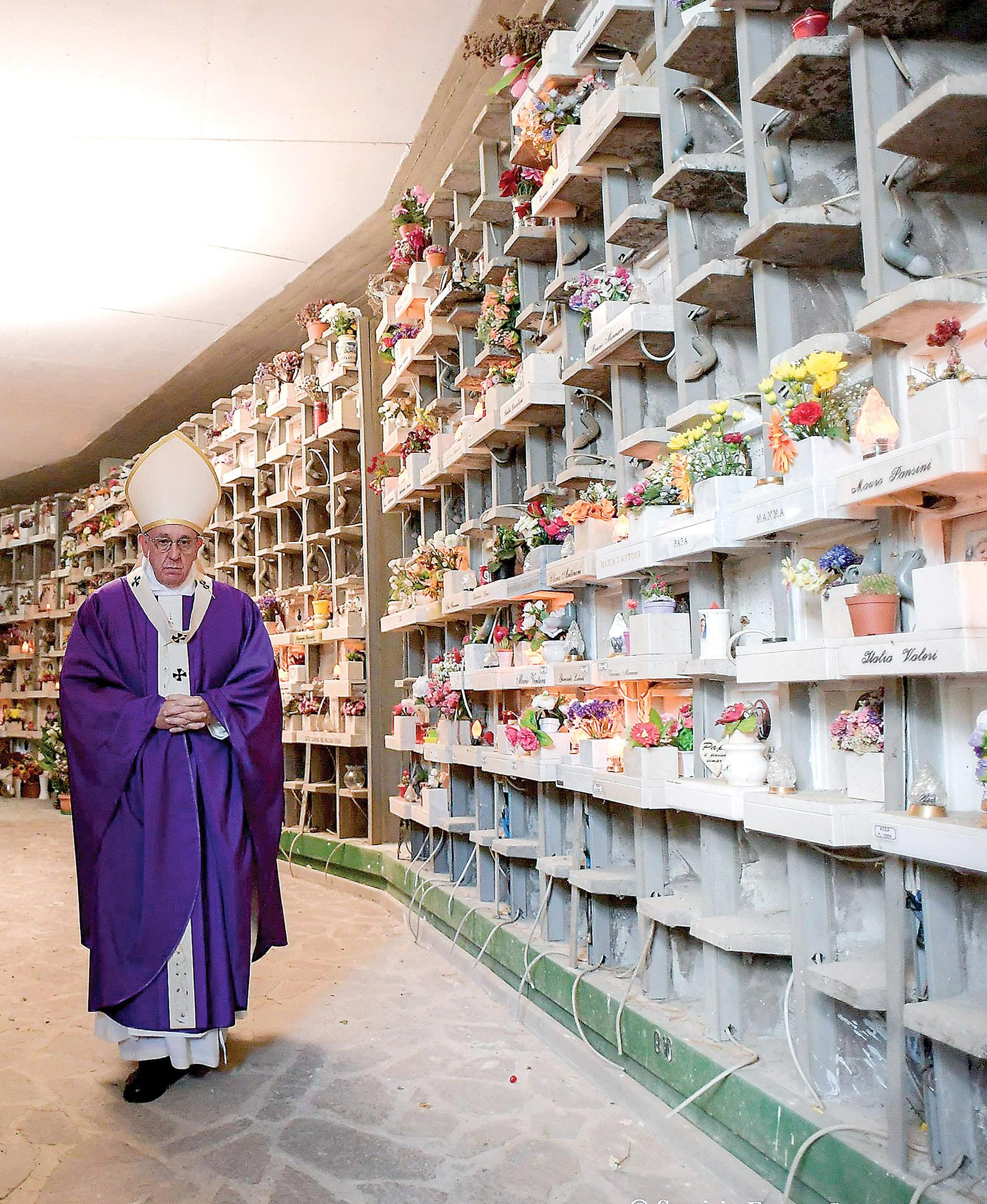
Eastern Churches in 1990.
However, since Church law had not specified exactly what should be done with “cremains,” the dicastery provided further guidance with the 2016 instruction, “Ad resurgendum cum Christo” (“To Rise with Christ”).
That instruction emphasized the Catholic Church’s recommendation to follow “the most ancient Christian tradition” of the pious practice of burying the dead in cemeteries or other sacred places, as it is considered one of the corporal works of mercy and, mirroring the burial of Christ, more clearly expresses hope in the resurrection when the person’s body and soul will be reunited.
Anonymous burial or scattering of ashes is not compatible with the Christian faith, according to the instruction. Preserving the ashes of the departed in a sacred place “ensures that they are not excluded from the prayers and remembrance of their family or the Christian community” and “it prevents any unfitting or superstitious practices.”
“The conservation of ashes of the departed in a domestic residence is not permitted,” the 2016 instruction said. “Only in grave and exceptional cases dependent on cultural conditions of a localized nature, may the Ordinary, in agreement with the Episcopal Conference or the Synod of Bishops of the Oriental Churches, concede permission for the conservation of the ashes of the departed in a domestic residence.”
“The ashes may not be divided among various family members and due respect must be maintained regarding the circumstances of such a conservation,” it said.
Anonymous burial or scattering of ashes is not compatible with the Christian faith, according to the instruction. Preserving the ashes of the departed in a sacred place ‘ensures that they are not excluded from the prayers and remembrance of their family or the Christian community’ and ‘it prevents any unfitting or superstitious practices.’
CATHOLIC NEWS HERALD catholicnews@rcdoc.org
CHARLOTTE — “It was a tragic day, a very tragic day. I lost someone who I cared dearly for, who I loved with all my heart.”
That is how Joe, a Catholic Charities Diocese of Charlotte client, remembers the day in 2014 when his wife Lisa suddenly died. That morning, Lisa got dressed as usual, told Joe that she loved him, and headed off to work. Fifteen minutes later, she was hit and killed by a car.
The shock of her death was followed by the nearly overwhelming details of what came next: burial.
For many families, the cost of burying a loved one is a substantial financial challenge. The average cost of a funeral ranges from $7,000 to $10,000 – a major obstacle for many people struggling just to make ends meet. The unexpected expense compounds the burden they already face in grieving for their loved one.
Our Catholic faith teaches us that it is an important corporal work of mercy to bury the dead.
Catholic Charities’ Burial Assistance Program is a tangible way in which Catholics across the Diocese of Charlotte are helping families without the means to bury their dead with dignity.
The program’s roots date back to 1994, when Mecklenburg County stopped paying to bury the poor. Catholic Charities teamed up with concerned citizens, social workers, funeral home directors and the City of Charlotte’s cemetery director to set up a burial plan for needy county residents. They agreed to work together to provide funeral and burial or cremation services to indigent families.
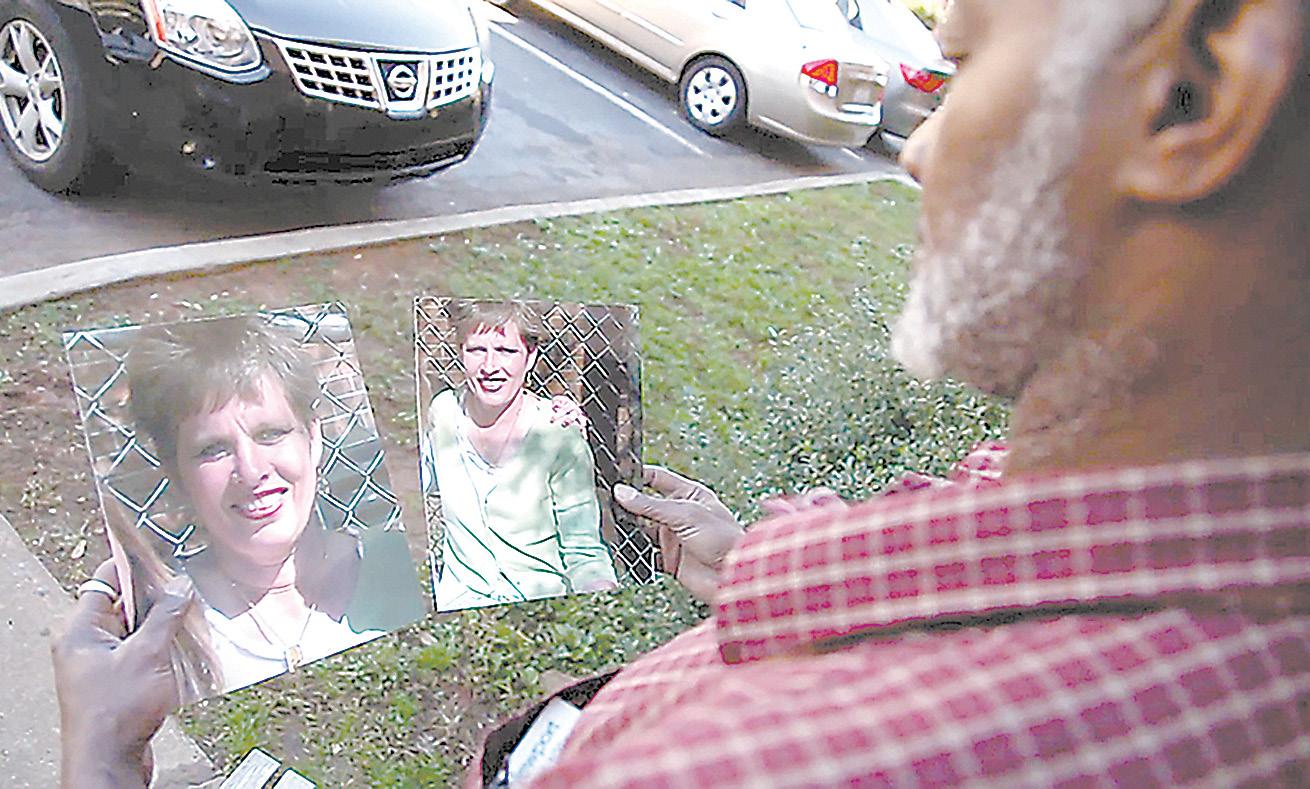
In the past year, Catholic Charities helped to bury 199 people.
The program has since grown to encompass all of western North Carolina and is now providing this service throughout the entire diocese.
The program serves families who have no insurance, are unable to negotiate financial arrangements with a funeral home, or cannot pay the costs associated with traditional death expenses.
In the last year, Catholic Charities assisted with 199 dignified burials for families in need across the diocese.
Sylvia Sekle, direct assistance coordinator for Catholic Charities in the Charlotte Regional Office, shares, “While it can be very hard emotionally to help families navigate this time of grief in their life, it does give me peace knowing we are making it just a little bit easier.”
Catholic Charities is seeing a greater need, Sekle says, “and we believe that is due to COVID-19. Not just as a cause of their loved one passing, but also the financial impact of COVID on their finances and their ability to be able to provide a burial for their loved one.”
She notes that, “While no one is ever prepared for death, I am grateful that we are able to offer them some sort of peace and ease their financial burden.”
Recalls Joe, “I didn’t know where to turn. I didn’t know what to do. I went to Grier’s Funeral Home, and he told me about Catholic Charities.
“The young lady at Catholic Charities was outstanding. She was nice, kind, considerate – like people should be. She didn’t treat me like I was a nobody. She treated me like I was a man.”
Catholic Charities provides the social service support and eligibility verification for the program at no cost.
Financial assistance is provided through charitable contributions from individuals, churches and other civic organizations when families are unable to cover the cost. In addition, local funeral homes play a key role in partnering with Catholic Charities in providing dignified burials.
Catholic Charities’ CEO Dr. Gerard A. Carter is grateful for the generous support.
“Donors provide us with the funds needed to provide this ministry to those who mourn the loss of a loved one and the funeral homes are key partners. In the name of the Church –and because of the support of people of goodwill – together we can carry out this important work of compassion to families who are grieving the loss of their loved one.”
Joe still gets emotional when he talks about his love for Lisa and the help he received. He says Catholic Charities helped him through his grief and reassured him that Lisa would be laid to rest with dignity.
“They gave me the feeling of hope that everything was going to be OK, and it was.”
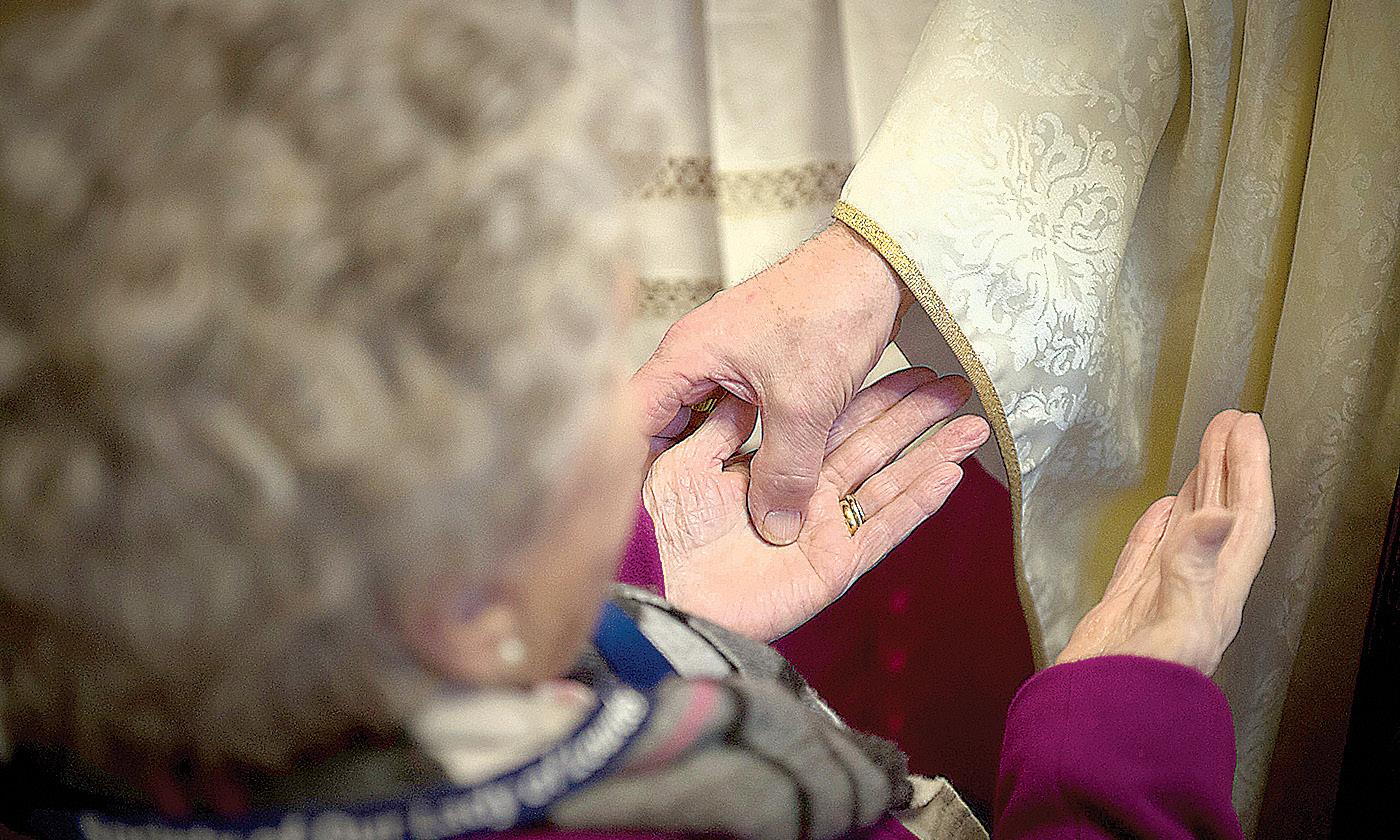
A gift of grace in the Holy Spirit
Anointing of the Sick is a sacrament in which a person who is ill is anointed with blessed oil and prayed over by a priest.
It is meant not only for people who are dying, but for anyone who seeks forgiveness, comfort, and strength from Christ the Divine Physician. If you are suffering serious illness or facing surgery, or if you are an elderly person whose frailty has become more pronounced, you are encouraged to seek this sacrament.
The hoped-for effect is that – if it is God’s will – the person be physically healed of illness. But even if there is no physical healing, the primary effect of the sacrament is a spiritual healing by which the sick person receives the Holy Spirit’s gift of peace and courage to deal with the difficulties that accompany serious illness or old age.
The last rites (also known as the Commendation of the Dying) are the last prayers and ministrations given, when possible, shortly before someone’s death. In general, under normal circumstances, last rites for a Catholic might include the sacraments of Penance, Anointing of the Sick, and Holy Communion. When Holy Communion is administered to a Catholic who is dying, it is called “viaticum” – food for the final journey, Christ accompanying us with the hope of resurrection with the food of heaven.
REQUIREMENTS
Any baptized Catholic who has reached the age of reason (usually around the age of 7) and is in danger due to sickness or old age, facing surgery, or near death may request the sacrament of Anointing of the Sick. Search the Diocese of Charlotte’s parish directory online at www.charlottediocese.org to find a priest near you.
‘Is anyone among you sick? Let him call for the elders of the church, and let them pray over him, anointing him with oil in the name of the Lord.’
— James 5:14
If you have a sacramental emergency (a Catholic who is in imminent danger of dying and wishes to receive last rites), call the church nearest your location, ask for a priest and tell them it is a sacramental emergency.
No. This sacrament is certainly used for that purpose, but it is also efficacious for people who are facing surgery, awaiting a diagnosis or experiencing serious health concerns.
Reception of the sacraments when a Catholic is near death is called “last rites.” The last rites (also known as the Commendation of the Dying) are the last prayers and ministrations given, when possible, shortly before someone’s death. In general, under normal circumstances, last rites for a Catholic might include Anointing of the Sick, as well as the sacraments of Penance and Holy Eucharist.
Can you be anointed only once?
No. A person can receive this sacrament multiple times.
Do you have to be Catholic to receive this sacrament?
A baptized non-Catholic can receive this sacrament in certain limited situations, particularly if they are at the point of death. Contact a parish near you for more information.
Many
parishes have bereavement ministries or grief support groups. Check your parish’s website or bulletin, or call the parish office.
The Catechism of the Catholic Church states: “From the beginning the Church has honored the memory of the dead and offered prayers in suffrage for them, above all the Eucharistic Sacrifice, so that, thus purified, they may attain the beatific vision of God” (1032).
It is normal to have a Mass offered as soon as possible for the deceased. Most people leave provision for this in their wills. When possible the “month’s mind,” a Mass on the one-month anniversary and then on other anniversaries, is a good practice. If Masses are not available on those days in your parish, your parish priest may be able to send them to be offered in the missions.
Arranging a Mass for a deceased loved one is easy. Simply contact a Catholic church in the community where you would like to have the Mass celebrated, or at your own parish if you would like to attend the Mass.
A stipend of usually $5-$20 per Mass is offered for the priest who will offer the Mass. Every parish has a Mass offering book, usually kept at the parish secretary’s desk, so that when you call or stop by the parish it is easy to ask for a Mass intention.
Sometimes you may be able to pick a specific day to have the Mass celebrated in memory of the deceased, but at times you may have to accept whatever date is available.
You will receive a Mass card from the parish with the time, date and church name where the Mass will be offered. You can give the Mass card to the family of the deceased so they know when the Mass will be offered in their loved one’s honor.
Don’t forget to mark down the details on your own calendar so that you can attend the Mass or remember to offer your prayers on that day.
Why is it important to have a grave?
Our cemeteries are places of great sign value as were the catacombs of old.
The grave and the marker are visible signs that a person did live and that it mattered that he or she lived. Years from now someone will walk by our graves and remember us and that it was important that we lived and died. Cemeteries are places of catechesis about death and they are places of prayer in the context of the communion of saints and our waiting for the final coming of the Lord.
We visit the grave often to pray for the deceased and we decorate the graves regularly, especially on Nov. 2, All Souls’ Day.
— “Catholic Funeral Guide,”
St. Michael Church in Gastonia
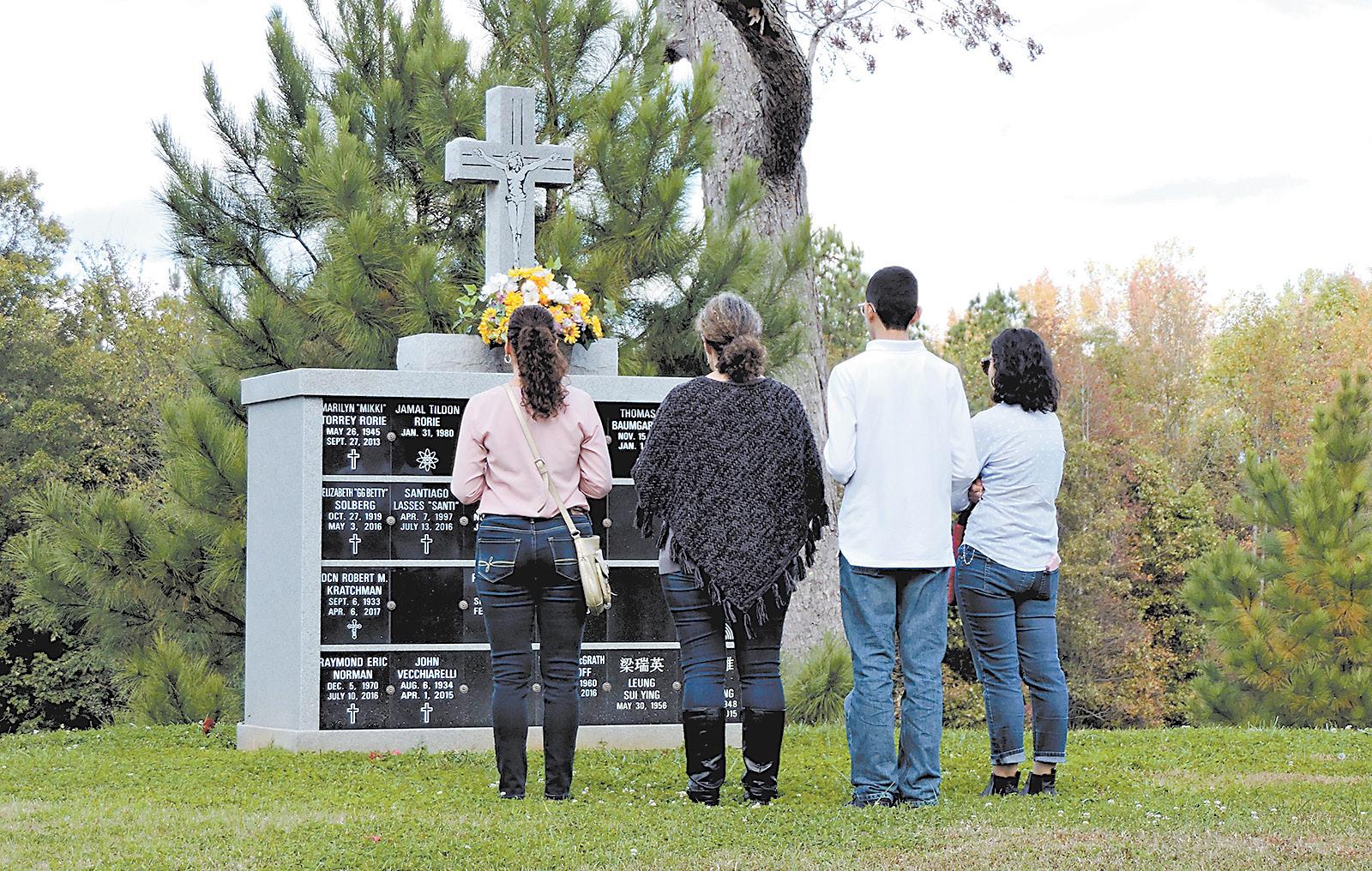
Why do we pray for
CAROL ZIMMERMANN Catholic News Service
WASHINGTON, D.C. — Praying for the dead might not make sense to nonbelievers but for Catholics it is part and parcel of the faith tradition, rooted in Old Testament readings and supported by the Catechism and the Church’s funeral liturgy.
“Our faith teaches us to pray for the dead,” said Bishop Edward K. Braxton of Belleville, Ill., in a 2015 All Saints’ Day reflection, stressing that although people hope that those who die are with God and the angels and saints, it is not necessarily a guarantee.
“Scripture teaches that all of the dead shall be raised. However, only the just are destined for the kingdom of God,” the bishop wrote.
According to the Catholic Encyclopedia, the clearest Bible reference about prayers for the dead is from the Second Book of Maccabees. When soldiers were preparing the bodies of their slain comrades for burial they discovered they were wearing amulets taken from a pagan temple which violated the law of Deuteronomy so they prayed that God would forgive the sin these men had committed.
The New Testament echoes this notion in the second letter of Timothy when Paul prays for someone who died named Onesiphorus, saying: “May the Lord grant him to find mercy from the Lord on that day.”
The Catechism of the Catholic Church also has something to say about prayers for the dead, stating: “All who die in God’s grace and friendship, but still imperfectly purified, are indeed assured of their eternal salvation; but after death they undergo purification, so as to achieve the holiness necessary to enter the joy of heaven” (1030).
The Roman catacombs where early Christians were buried also were places of prayer.
Today, prayers for the dead begin at the moment of death, often when family members are gathered around the bedside of the person who has died.
Prayers for death and grieving are among the “Catholic Household Blessings and Prayers,” published in 2007 by the U.S. Conference of Catholic Bishops, that includes prayers immediately after death, prayers for mourners, prayers at the graveside and a more general prayer for the dead.
Of course these prayers continue in the funeral liturgy, which is the “central liturgical celebration of the Christian community for the deceased,” according to the U.S. Conference of Catholic Bishops’
overview of Catholic funeral rites, online at www.usccb.org/prayer-and-worship/ bereavement-and-funerals/overview-ofcatholic-funeral-rites.cfm.
The funeral liturgy, the website points out, is “an act of worship, and not merely an expression of grief.”
It is a time when the Church gathers with the family and friends of the deceased “to give praise and thanks to God for Christ’s victory over sin and death, to commend the deceased to God’s tender mercy and compassion, and to seek strength in the proclamation of the Paschal Mystery,” it adds.
The prayers in the funeral liturgy express hope that God will free the person who has died from any burden of sin and prepare a place for him or her in heaven.
“The funeral rite is a prayer for the dead, designated by the Church as the liturgy of Christian burial,” wrote Bishop Braxton in his reflection.
Did you know?
The acronym “RIP” or R.I.P. is an abbreviation of the Latin phrase “requiescat in pace” or the English “Rest in peace.”
Pray regularly for the faithful departed, especially on Nov.
2
(All Souls’ Day).
He noted that many parishes “regularly disregard” the emphasis of this liturgy by printing funeral programs which say: “the Mass of the Resurrection: A Celebration of Life,’ even though the person has obviously not yet been raised from the dead.”
According to the Catechism, most Catholics who don’t merit hell still need purification before entering heaven and pass through a state when they die that the Church describes as purgatory.
In a question-and-answer page on www.BustedHalo.com, a Paulist-run website, Paulist Father Joe Scott said praying for the dead has “further origins in our belief in the communion of saints.”
The priest, an associate pastor at St. Paul the Apostle Catholic Community in Los Angeles, added that living members of this communion can “assist each other in faith by prayers and other forms of spiritual support.”
“Christians who have died continue to be members of the communion of saints,” he wrote. “We believe that we can assist them by our prayers, and they can assist us by theirs.”

CAROL ZIMMERMANN Catholic News Service
WASHINGTON, D.C. — A tricky thing about grief is that it is not a one-shot deal. Although it is often strongest when it’s first experienced, it can sneak up at any time. It especially reappears on the anniversary of the death of a loved one.
Some have labeled these days as “deathversaries” and even though they are days that can bring up painful memories, they should not be ignored nor do they need to be completely depressing.
The internet, which is not always a place of solace, actually has plenty of advice for coping with anniversaries of a loved one’s death. Websites including www.modernloss.com or www.whatsyourgrief.com offer the following suggestions:
n Take flowers to the gravesite or other place where you remember your loved one.
n Look at old photos and home videos or put digital photos into photo album.
n Volunteer with a charity or cause your loved one liked, or make a donation to the charity in his or her name.
n Host a dinner party and invite those who knew this person best and cook foods they liked or gather at the person’s favorite restaurant.
n Do something your loved one would have enjoyed.
n Write about your loved one; write them a letter or plant a tree in their name.
n Take the day off work.
n Ask friends or family members for help.
The Mayo Clinic, based in Rochester, Minn., notes on its website, www.mayoclinic.org, that reawakened grief can occur years after a loss, particularly when people are confronted with reminders of their loved one’s death. The site advises people to be prepared,

especially for anniversary reactions and to plan a distraction for the day or reminisce about the relationship. It reiterates some of the suggestions previously mentioned and also urges people to allow themselves to “feel a range of emotions. It’s OK to be sad and feel a sense of loss, but also allow yourself to experience joy and happiness. As you celebrate special times, you might find yourself both laughing and crying.”
“There’s no time limit for grief, and anniversary reactions can leave you reeling. Still, the intensity of grief tends to lessen with
time,” it adds.
Many cultures celebrate the death anniversary of loved ones by gathering together as families and sharing special foods.
Catholics often mark the anniversary of a loved one’s death by attending Mass or having a Mass offered for the deceased.
Catholics also celebrate feast days which are the anniversaries of saints’ deaths. The anniversaries of deaths of loved ones will likely not be celebrated in the same manner as they are for major saints: with festivals and parades through streets, but recollections on this day share the same idea: recalling when one’s life on earth ended and eternal life began.
For many people, the idea of being festive on the anniversary of someone’s death is hard to imagine and might never happen, but for those grieving a loss there are signs that healing has begun and that comfort or renewed strength is present.
Father Eamon Tobin, pastor of Ascension Catholic Community in Melbourne, Fla., who wrote a parish column about coping with loss, says signs of healing after grief include:
n Being able to talk about your loved one in a more comfortable manner.
n Realizing that while “life is not the same, it can be good again.”
n Grief becomes less engrossing.
n New inner resources are developed or strengthened.
“Grief work, though very painful,” he writes, “is good and holy.”
The priest also wrote that “grief is the way God intended for us to deal with loss.”
He said the “world’s way is denial. It tells us to ‘move on’ even before we have started to grieve. Grief work (and it is work) is the only thing that will heal our loss or at least help us to live with it.”
The Mass is the highest form of prayer in the Church, and the most effective prayer that could be said on behalf of those who have gone before us. In Masses for the dead, and especially funeral Masses, “the Church offers the Eucharistic sacrifice of Christ’s Pasch for the dead so that, since all the members of Christ’s Body are in communion with one another, what implores spiritual help for some, may bring comforting hope to others.” (“General Instruction of the Roman Missal,” 379)
As death approaches, the Church stays close to the one who is dying, to give comfort and support. The family should ask that Communion be brought to the dying (this is called “Viaticum,” Latin for “food for the journey”).
Members of the local church may wish to join the family in a vigil of prayer. After the person’s death, the family is encouraged to continue praying, and to participate in the preparation of the vigil (wake) and funeral liturgies. The following prayer may be recited with a dying person, alternating with times of silence. The Our Father, Hail Mary and Glory Be are also appropriate. The dying person may also be signed on the forehead with the cross, as was done at baptism.
Holy Mary, pray for me. St. Joseph, pray for me. Jesus, Mary, and Joseph, assist me in my last agony.
The following prayer may be recited immediately after death and may be repeated in the hours that follow:
V. Eternal rest grant unto him (her), O Lord.
R. And let perpetual light shine upon him (her).
V. May he (she) rest in peace.
R. Amen.
V. May his (her) soul and the souls of all the faithful departed, through the mercy of God, rest in peace. R. Amen.
O God, by whose mercy the faithful departed find rest, send your holy Angel to watch over this grave. Through Christ our Lord. R. Amen.


At www.usccb.org/prayers/ prayers-death-and-dying: Find more prayers and Scripture readings for the dying and for the dead
At www.catholicnews agency.com/resources/ prayers : Find more prayers, including a prayer to St. Joseph for a holy death
Pre-planning is making your cemetery and funeral arrangements before your death. This allows your wishes to be known, thus eliminating an incredible burden on your loved ones during the very stressful and painful hours after your death. Pre-planning is a concrete sign of your love for surviving family members.
The most obvious benefit is that you will relieve your loved ones of the burden of making your cemetery and funeral arrangements at a time of tremendous grief. Your advance planning will give your family the guidance they need to feel comfortable that they are carrying out the decisions you made. Pre-planning may prevent disagreement among survivors at an emotionally charged time and can assure that emotional over-spending does not occur. By pre-planning and pre-funding cemetery and funeral arrangements, you might be creating exempt assets should you ever have to go on public assistance. The costs of cemetery property have been escalating at the rate of 100 percent every 10 years. By purchasing in advance, you are locking in today’s pricing.
Adults of any age who make their own decisions should have a plan. Like your will, it can be revised throughout your life as needs change. In general, the earlier you preplan the more options you have. Your cemetery and funeral options
Also online

will probably never cost less than they do today. Statistics show that 43 percent of all deaths are unexpected; we are not guaranteed any tomorrows.
In our culture, few families are comfortable discussing death and loss. This is just one of those things that does not get easier as time goes by. Now is the best time for you to get your plan in order.
Why should I choose to be buried in a Catholic cemetery?
First and foremost, Catholic cemeteries are a vital part of our Church’s heritage of caring for and burying the bodies of the dead in blessed ground — one of the corporal works of mercy.
— www.catholic-cemeteries.org
Can I donate my body to a university?
Yes. But you must be sure that the body will be buried properly when the experimentations are completed. In this case a Mass should be offered for the deceased.
At www.ncbfs.org Learn more about preneed funeral trusts, funeral insurance, cremation vs. burial costs, and how to calculate funeral costs
At www.catholicnewsherald.com : See a list of local parishes’ funeral planning guides

‘A person tends to die as he has lived. If my life has been a journey with the Lord, a journey of trust in His immense mercy, I will be prepared to accept the final moment of my earthly life as the definitive, confident abandonment into His welcoming hands, awaiting the face to face contemplation of His Face. This is the most beautiful thing that can happen to us: to contemplate face to face the marvelous countenance of the Lord, to see Him as He is, beautiful, full of light, full of love, full of tenderness.’
— Pope Francis General Audience of Nov. 27, 2013
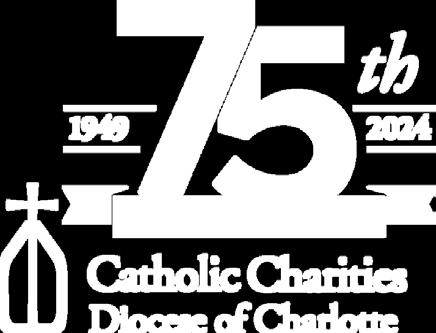
Catholic Charities helped 199 individuals receive a dignified burial last year through our Burial Assistance program
Our goal is to support families who may struggle to provide a compassionate and dignified burial for their loved ones

Without this service, some families would have no choice but to leave their loved ones unclaimed at the morgue.
This program relies on the generosity of donors. To support the Burial Assistance program, please visit ccdoc.org/donate.
Life itself is always a good, and is a quality that can never be lost.
Ordinary or proportionate means are those that (in the judgment of the patient assisted by health care professionals) offer a reasonable hope of benefit and do not entail an excessive burden or impose excessive expense on the family or the community. A person has a moral obligation to use ordinary means.
Extraordinary or disproportionate means are those that (in the judgment of the patient assisted by health care professionals) do not offer a reasonable hope of benefit, do entail an excessive burden, or do impose excessive expense on the family or the community. A person may forgo extraordinary means.
In principle, there is an obligation to provide patients with food and water, including medically assisted nutrition and hydration for those who cannot take food orally.
Medically assisted nutrition and hydration become morally optional when they cannot reasonably be expected to prolong life or when they would be excessively burdensome for the patient or would cause significant physical discomfort.
Euthanasia is an act or omission that of itself or by intention causes death to alleviate suffering. Catholics may never condone or participate in euthanasia or assisted suicide in any way. Dying patients who request euthanasia should receive loving care, psychological and spiritual support, and appropriate remedies for pain and other symptoms so that they can live with dignity until the time of natural death.
— National Catholic Bioethics Center. Learn more online at www.ncbcenter.org.

A note on general principles regarding end-of-life care
No summary can substitute for thorough catechesis, but some general principles are clear. We are entrusted by God with the gift of life, and in response, we care for our lives and health in obedience and gratitude to our Creator.
This obliges us to make use of appropriate, effective medical care. However, even effective treatments may at times impose such a great burden that we, in good conscience, may forgo or discontinue them. This applies even to life-sustaining treatments. Of course, nothing should be done or deliberately omitted to hasten death.
The Church affirms the inviolable dignity of every person, regardless of the duration or extent of the person’s incapacity or dependency. Nothing diminishes the unchangeable dignity and sanctity of a person’s life, or the obligation to protect and care for it. In principle, assisted feeding and hydration should be provided unless it cannot sustain life or is unduly burdensome to the patient, or if death is imminent whether it is provided or not.
Moreover, no one should choose suicide, nor counsel or assist another to take his or her own life.
Judging the effect and burden of treatments can be difficult, especially as death draws near. To understand health facts and treatment options, we need professional medical advice. To understand Catholic moral teaching, we need to consult Church teaching and those who can faithfully explain it.
After informing our consciences, we need to inform our families. If we are unable to make decisions, they
most often have legal authority to make surrogate decisions on our behalf. Or we may designate a health care agent by a durable power of attorney.
Though it is often helpful to also have written, signed documentation, no living will “check box” can ever replace clear conversations about our faith-guided principles. The best option is to choose an agent who will make medical decisions on our behalf in accord with our Catholic faith and Church teaching.
We should also inform family of our pastoral care preferences, and make clear that after death, we desire prayer, funeral rites and Christian burial.
Those who are sick should not be alone, as multiple popes have reminded us in messages for the annual World Day of the Sick. Patients who have serious or life-threatening illnesses, as well as their families, can be provided with physical, psychological and spiritual care through team-based palliative care. Hospice care can provide similar integrated care for those nearing death and for their families.
Pastoral care is integral to both palliative and hospice care, and includes making available the sacraments: Eucharist, confession, anointing of the sick and Viaticum. It also includes supportive prayer and support for decision-makers. It may be helpful to familiarize ourselves with local services available in preparation for our own passing or that of loved ones. Even after death, accompaniment continues. Our prayers can help those who are being purified in purgatory, so it is a spiritual work of mercy to pray for those who have died.
— USCCB
The Church affirms the inviolable dignity of every person, regardless of the duration or extent of the person’s incapacity or dependency.
CARE
What kind of legal documents or arrangements about your end-of-life medical care should you have?
An “Advance Medical Directive” and “Durable Power of Attorney for Health Care” (or “Health Care Proxy”) are legal documents that take effect if the patient becomes incompetent. Even though these documents can be written without the assistance of an attorney, some states give them considerable legal weight.
An Advance Medical Directive specifies what medical procedures the patient wishes to receive or to avoid. (An Advance Medical Directive sometimes is called “A Living Will,” but because of its association with the advocacy of euthanasia, we have chosen to avoid this phrase.)
Durable Power of Attorney specifies a particular individual (variously called a “proxy,” “agent,” or “surrogate”) to make medical decisions on behalf of the patient (or the “principal”) when the patient is no longer able to do so.
When neither of these instruments is drawn up, the task of making important medical decisions usually falls to the family.
Caring for Charlotte Area Catholic Families in Their Hour of Need Since 1926 FUNERAL SERVICE, INC.
Charlotte 704-334-6421
Pineville 704-544-1412
Mint Hill 704-545-4864
Derita 704-596-3291

Most states have laws governing the use and implementation of the Advance Medical Directive and Durable Power of Attorney.
All hospitals and health care facilities are required by law to provide written information to the patient about the right to accept or refuse medical treatment and the right to formulate an Advance Directive and/or designate Durable Power of Attorney. The health care facility must also provide written policies stating how the patient’s Advance Directive or Durable Power of Attorney will be implemented. People should remember that they do not have to sign any Advance Directive given to them by the hospital.
WHICH ONE SHOULD YOU CHOOSE?
Make certain that your Advance Directive forbids any action that the Catholic faith considers to be immoral, such as euthanasia or physician-assisted
The details
of a
patient’s medical condition at a specific time need to be
considered.

At www.ncbcenter.org : What are the Church’s teachings on end-of-life decisions and how difficult will it be to follow them? Must we endure a great deal of pain? What if I am no longer able to make medical decisions for myself? Order or download a copy of “A Catholic Guide to End-of-Life Decisions,” which describes how you might approach end-of-life decisions in light of the teachings of the Church.
suicide. (A Catholic hospital, in any case, will not follow a directive that conflicts with Church teaching.)
Once a directive is made, copies should be distributed to the agent and anyone else the patient deems appropriate. One should periodically review the provisions of an Advance Directive and, when there is a revision, all previous copies should be destroyed.
The usefulness of an Advance Directive, which gives specific instructions for care, is limited because of its inflexibility. If circumstances change significantly between writing the Advance Directive and its implementation, the instructions may be of little value to those acting on a patient’s behalf, or may even hinder their freedom to make good decisions. There may also be a problem of interpreting the document when it is not clearly written. An Advance Directive oftentimes does not allow for adequate informed consent because one must make a decision about a future medical condition which cannot be known in advance.
When drawing up an Advance Directive, therefore, one should focus on general

Msgr. Richard Bellow – 2023
Abbot Oscar Burnett, OSB – 2017
Rev. John P. Bradley – 2003
Rev. Raphael Bridge, OSB – 1996
Rev. Brian Cook – 2023
Rev. Msgr. John P. Manley – 1981
Rev. Bernard A. Manley Jr. – 2016
Rev. Charles T. Reese – 2017
Rev. John A. Regan – 1976
Rev. D. Edward Sullivan – 2009
Rev. Stephen A. Sullivan - 1989


goals rather than on specific medical procedures.
Assigning Durable Power of Attorney is preferable to an Advance Directive because it leaves decisions in the hands of someone whom the patient has personally chosen.
A proxy agent also can be more sensitive and responsive to the decision-making that is necessary for a given case. When assigning Durable Power of Attorney one should choose an agent of good moral character – someone who is known to be capable of making sound decisions under stressful circumstances. The agent should know the teachings of the Church and possess the practical wisdom to apply them to changing circumstances.
An agent, of course, must also survive the patient. One may designate alternate agents in case one’s first choice, for some reason, is unable to act.
A good agent makes decisions for the patient in light of what the patient would choose if able to do so. The proxy, therefore, should be very familiar with your moral convictions and wishes. When there is an Advance Directive from you, this should be the guide. When there is not, the agent must act on the oral instruction that has been given. Sometimes, however, acting in your best interests means ignoring instructions that are obviously unwarranted or clearly immoral. No agent is bound to carry out actions that conflict with morality and the faith.
ALSO NOTE
When formulating any Advance Directive and discussing end-of-life issues, avoid using the expression “quality of life” because it is used by advocates of euthanasia to suggest that some lives are not worth living.
While illness and other circumstances can make life very difficult, they cannot diminish the inestimable worth of each human life created by God. Life itself is always a good, and is a quality that can never be lost. Still, we need not cling to this life at all costs (what’s called “therapeutic obstinacy”), since the life to which we have been called in Christ is incomparably better.
— National Catholic Bioethics Center

The difference ultimately lies in the intentionality of the patient or health care professional. A person should never intend in any way the death of a patient or the hastening of a patient’s death. Sometimes it is difficult to determine whether a medical decision made during end-of-life care includes such an intention. Certain means can be used to alleviate a patient’s pain, for example, by a physician who foresees that the patient’s life may be shortened as a result (as an indirect, non-intended but tolerated effect of the therapy), but similar means could be used to intentionally shorten a patient’s life.
Basic care (such as nutrition and hydration, pain relief, antibiotic treatment, and postural change) is generally the same for all patients and should always be provided. The evaluation of proportionate or disproportionate means, however, is based on objective and subjective factors for an individual patient. For example, total parenteral nutrition may be a proportionate means in an industrialized country but a disproportionate means in a developing country, where it is not affordable or is technically too difficult to administer. A treatment may also be disproportionate because it is futile or because it causes complications that are too hard for the patient or the patient’s family to bear.
The right of patients to self-determination can lead them to include morally illicit requests in advance directives, such as requests to have ordinary care withdrawn.
An effective therapeutic alliance between a physician, a patient and the patient’s proxy is the best way to address end-of-life issues. Requests made by a patient in an advance directive may preclude therapeutic dialogue, preventing such an alliance.
A patient may react to an illness or a specific therapy differently than expected, or medical advances occurring after a directive was written may change the patient’s treatment options in unexpected ways. In such situations, an advance directive may prevent objective moral analysis.
Advance directives are often difficult to interpret and apply in the actual circumstances encountered by health care professionals, relatives and proxies. Advance directives that do not differentiate between proportionate and disproportionate treatments may be promoted by pro-euthanasia associations as a first step toward acceptance of euthanasia.
A Provider Orders for Life-Sustaining Treatment (POLST) is a medical order specifying whether life-sustaining treatment is to be used or withheld for a specific patient in various circumstances. It carries the signatures of the health care provider and sometimes the patient.
It differs from a do-not-resuscitate order
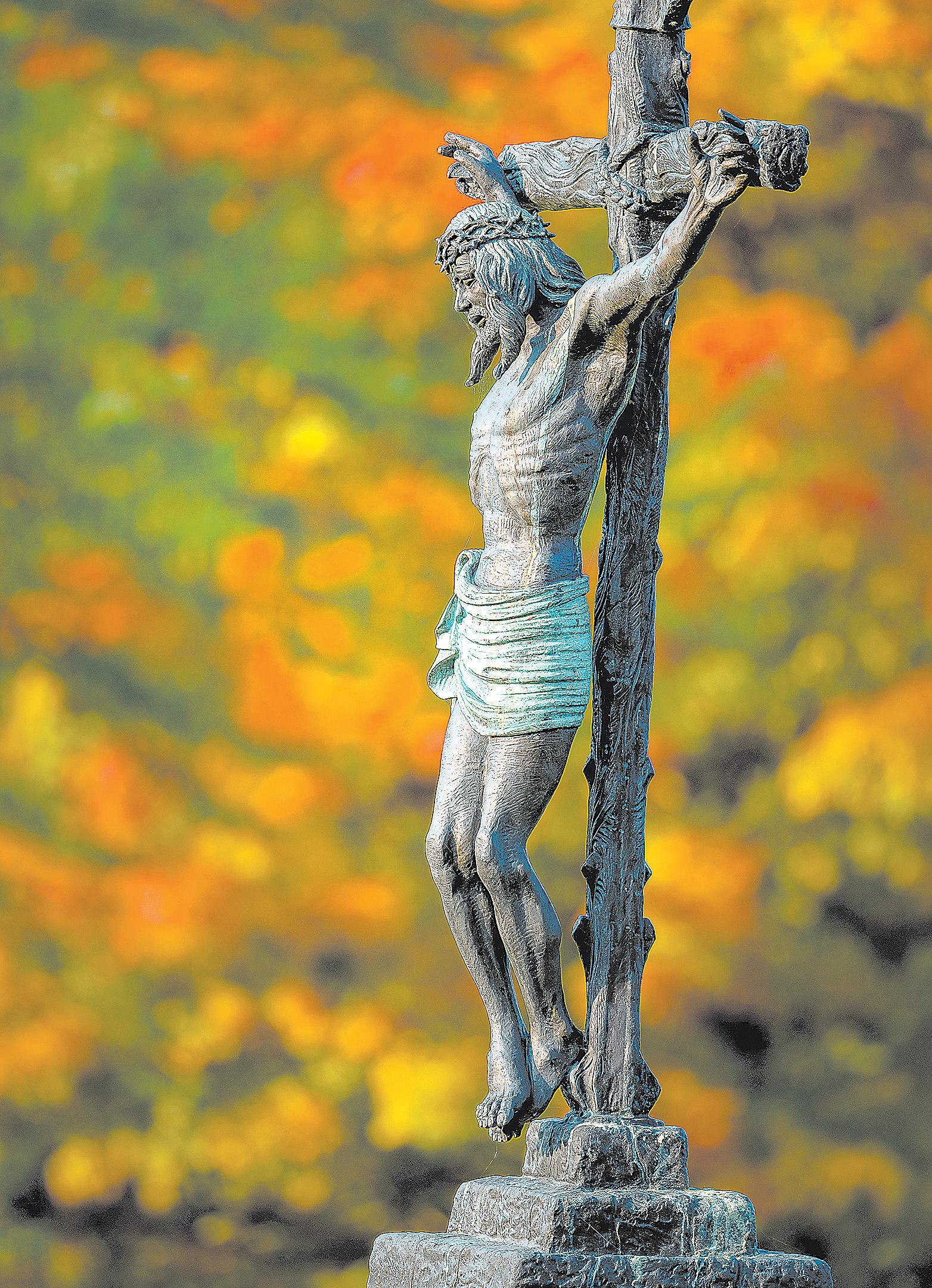
and a traditional advance directive in that it is actionable from the moment it is signed by the health care provider, even if the patient is still competent and is not terminally ill.
One reason given for use of a POLST and similar instruments is the avoidance of futile or unwanted treatment. Even without a POLST, however, patients are never obligated to submit to health care procedures whose burdens outweigh therapeutic benefits.
Decisions about forgoing life-sustaining treatment should be made at the time and in the circumstances in which the decisions are needed (not years ahead), and they should be made by the patient or the patient’s surrogate in consultation with the patient’s attending physician, in line with the patient’s known wishes and best interest (not by health care workers who are strangers to the patient but have access to his POLST).
The details of a patient’s medical condition at a specific time need to be considered when such decisions are made, including the imminence of anticipated death, the likely risks and side effects of treatment, the suffering
treatment is likely to cause, and the expense to the patient’s family and community.
An optimal advance directive is written in very general terms. Instead of specifying treatment, it designates a health care proxy or surrogate who will make decisions if the patient is incompetent, someone who knows the will of the patient and the teachings of the Catholic Church.
What is the difference between an advance directive and a POLST?
An advance directive is a legal document that allows a person to identify a proxy or surrogate decision maker and express his wishes about receiving or forgoing health care, including life-sustaining treatment, in the event that he is no longer able to communicate such wishes. An optimal advance directive is written in general terms that identify principles on which a surrogate is to base decisions, made with the assistance of a physician, in the specific health care situation encountered by the patient.
A POLST is a medical order about receiving or forgoing lifesustaining treatment that takes effect from the moment the health care provider signs it, even if the patient is competent and not terminally ill.
Why is the designation of a health care proxy or surrogate morally preferable to use of a POLST?
Unless death is imminent, it is virtually impossible to compare the benefits and burdens of treatment before a patient has encountered a specific health care situation. Thus, pre-signed checklists of treatments to be received or withheld are not helpful for making decisions based on the best interest of the patient and consistent with the patient’s wishes.
A well-informed proxy who knows the patient, understands the values held by the patient, and respects the natural moral law can provide a far better understanding of how the patient’s wishes are to be respected than can a general checklist that is not tied to any specific patient care situation.
— National Catholic Bioethics Center
More online

At www.ncbcenter.org : Find more resources and helpful guidelines on end-of-life care
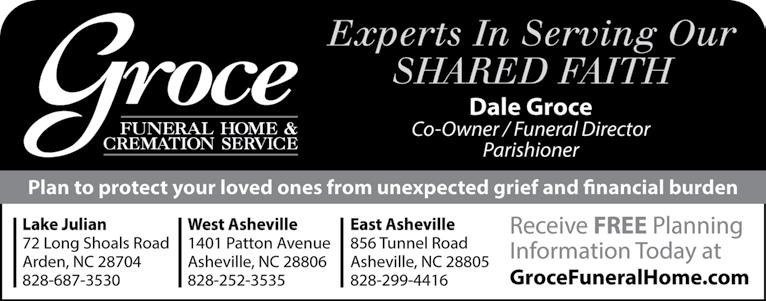
Everything we have, everything we are, and everything we will become is a gift from God. As stewards of those gifts, we are called to return a portion of our time, talent and treasure in gratitude for God’s great bounty. The Diocese of Charlotte – with its parishes, offices, agencies, schools and outreach ministries – has many ways for you to give back in gratitude to God:
Donate online
Secure donations can be made online via credit card or direct debit at www.
charlottediocese.org/donations for:
Catholic Charities
Catholic Conference Center
Catholic Schools
Catholic Campus Ministry
Charlotte Catholic High School Capital Campaign
Christ the King High School Capital Campaign
Diocesan Support Appeal (DSA)
Eucharistic Congress
Priests’ Retirement & Benefits Collection
Seminarian Education Campaign
Donations in any amount may be made via mail directly to the Diocese of Charlotte, or to any of the ministries mentioned at left. Checks should be made payable to the particular program (as listed above), except for Campus Ministry, which should be made payable to the Roman Catholic Diocese of Charlotte. Please designate in the memo section of your check where your gift should be directed. Please send donations to:
Diocese of Charlotte Attn: Finance Office 1123 South Church St. Charlotte, NC 28203-4003
Gifts of stock may be made via electronic transfer or by physical certificate. The Diocese of Charlotte
maintains a brokerage account with Wells Fargo Advisors for the purpose of processing electronic transfers to the diocese for the benefit of the diocese or any of its parishes, schools or agencies. Refer to the Stock Donations Form section at https://tinyurl.com/mr739624 for detailed guidance on initiating a transfer of stock.
Many people choose to contribute to the future of the Church in western North Carolina through planned gifts, including real estate, life estate, retirement account plans, life insurance policies, charitable gift annuities, charitable remainder trusts, and gifts made through a will or living trust.
The Foundation of the Roman Catholic Diocese of Charlotte aims to provide long-term financial stability for the diocese and its parishes, schools, ministries and agencies. Through

Make a donation today to Catholic Charities Diocese of Charlotte that will transform lives by strengthening families, building communities, and reducing poverty in your local neighborhoods.
It’s easy to help a neighbor in need:
Donate securely online at www.ccdoc. org/online/donate, using a credit or debit card or EFT/ACH.
Donate by mail
Donations may be mailed to:
Catholic Charities Diocese of Charlotte Attn: Central Processing Office 1123 South Church St. Charlotte, NC 28203-4003
Checks should be made payable to Catholic Charities Diocese of Charlotte.
(Please include your address, daytime phone number and parish.)
Double the impact of your donation with
your employer’s matching gift. If you would like to donate via stock, IRA contribution, family foundation or charitable gift fund, call 704-370-3349.
Catholic Charities also has opportunities for you to donate your car, truck, RV, boat, motorcycle or other vehicle. For details, visit www.ccdoc.org/ donate/donate-cars-vehicles, or call (tollfree) 855-930-GIVE or 855-930-4483 to speak with Catholic Charities’ partner, Charitable Auto Resources.
Food donations
Catholic Charities Diocese of Charlotte’s
endowments and other planned gifts, it provides a means to generate income to help sustain the long-term strength and viability of Catholic institutions in western North Carolina. The foundation currently has over 370 endowments.
To leave a bequest to the Church in your will, use the following language: n For a parish, Catholic school or Catholic agency, the listing should be:
“Michael T. Martin, Bishop of the Roman Catholic Diocese of Charlotte, or his Successors in Office for the (name and city of parish, school or agency).”
n For the diocese, the listing should be:
“Michael T. Martin, Bishop of the Roman Catholic Diocese of Charlotte, or his Successors in Office.”
n For the Diocese of Charlotte Foundation, the listing should be:
“Foundation of the Roman Catholic Diocese of Charlotte to be added to or establish the (name) endowment fund.”
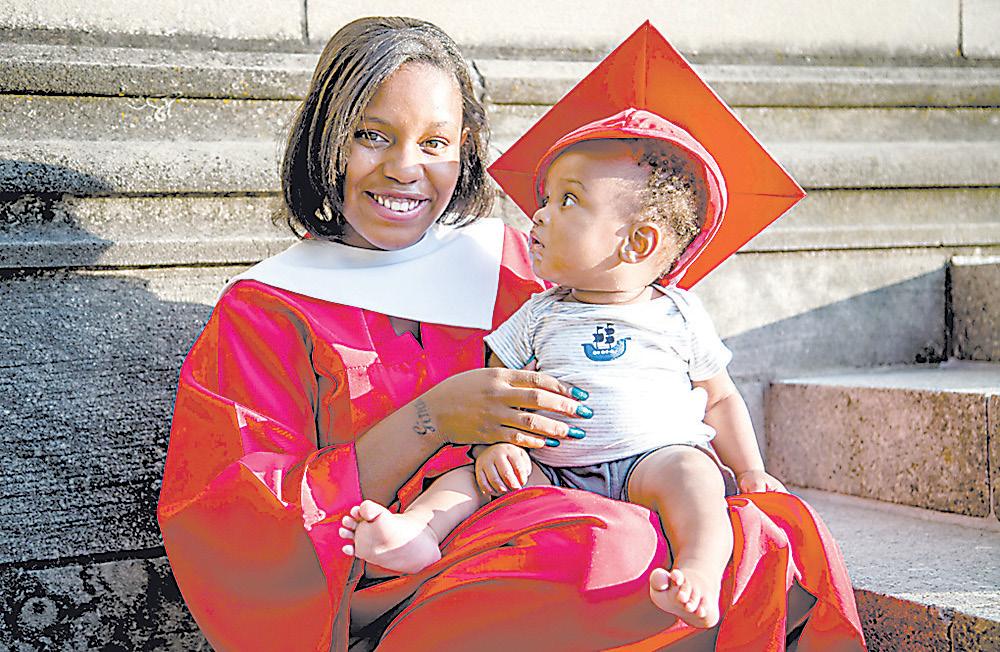
Who to contact
For details about any of these planned giving opportunities, contact: Gina Rhodes: gmrhodes@rcdoc.org
704-370-3364
Jacki McCarthy: jrmccarthy@rcdoc.org 704-370-3348
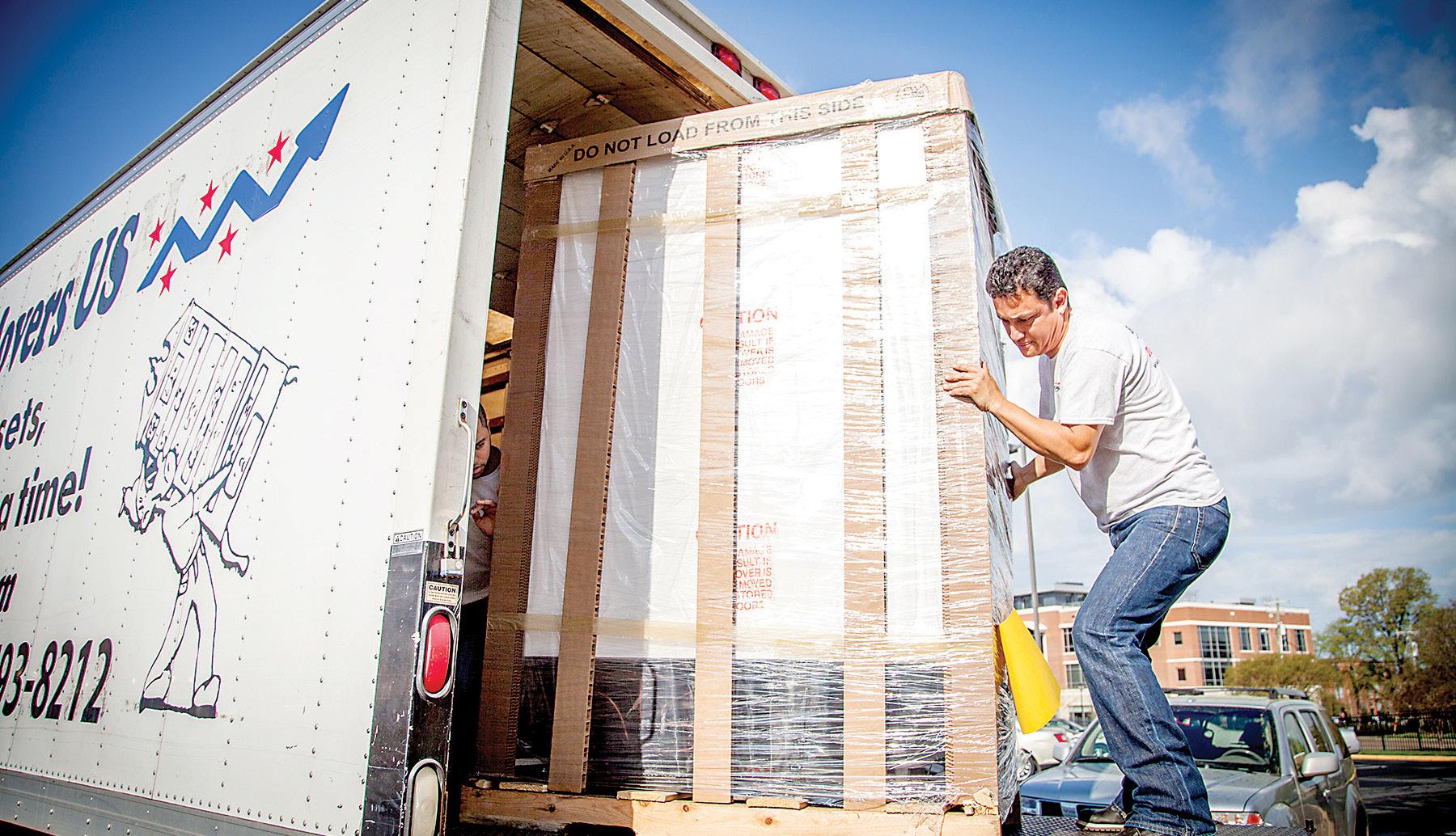
food pantries in Charlotte, Winston-Salem and Asheville rely heavily on donated food and non-food items for weekly distribution to clients. For food pantry locations and drop-off times, visit www.ccdoc.org/donate/donategrocery-items.
Refugees often arrive in this country with few material possessions. Their initial needs are many. Catholic Charities depends on donations of gently used furniture and household items to prepare a comfortable, welcoming home for newly arriving refugee families in the Charlotte area. Donated items must be clean and in
good repair.
ASHEVILLE: Donations needs are ever evolving, so please consult our sign-up form for details. Please send details of the items you have to offer. Donations should be clean and in good condition. Questions? Email: AVLrefugee@ccdoc.org.
CHARLOTTE: Please email Mohamed Ali at maali@ccdoc.org with a list and photos of items, along with donor contact information and pick-up location. If you have questions, call 704-370-3251. WINSTON-SALEM: Furniture and household items are not generally accepted at this location. Questions? Call: 336-727-0705.